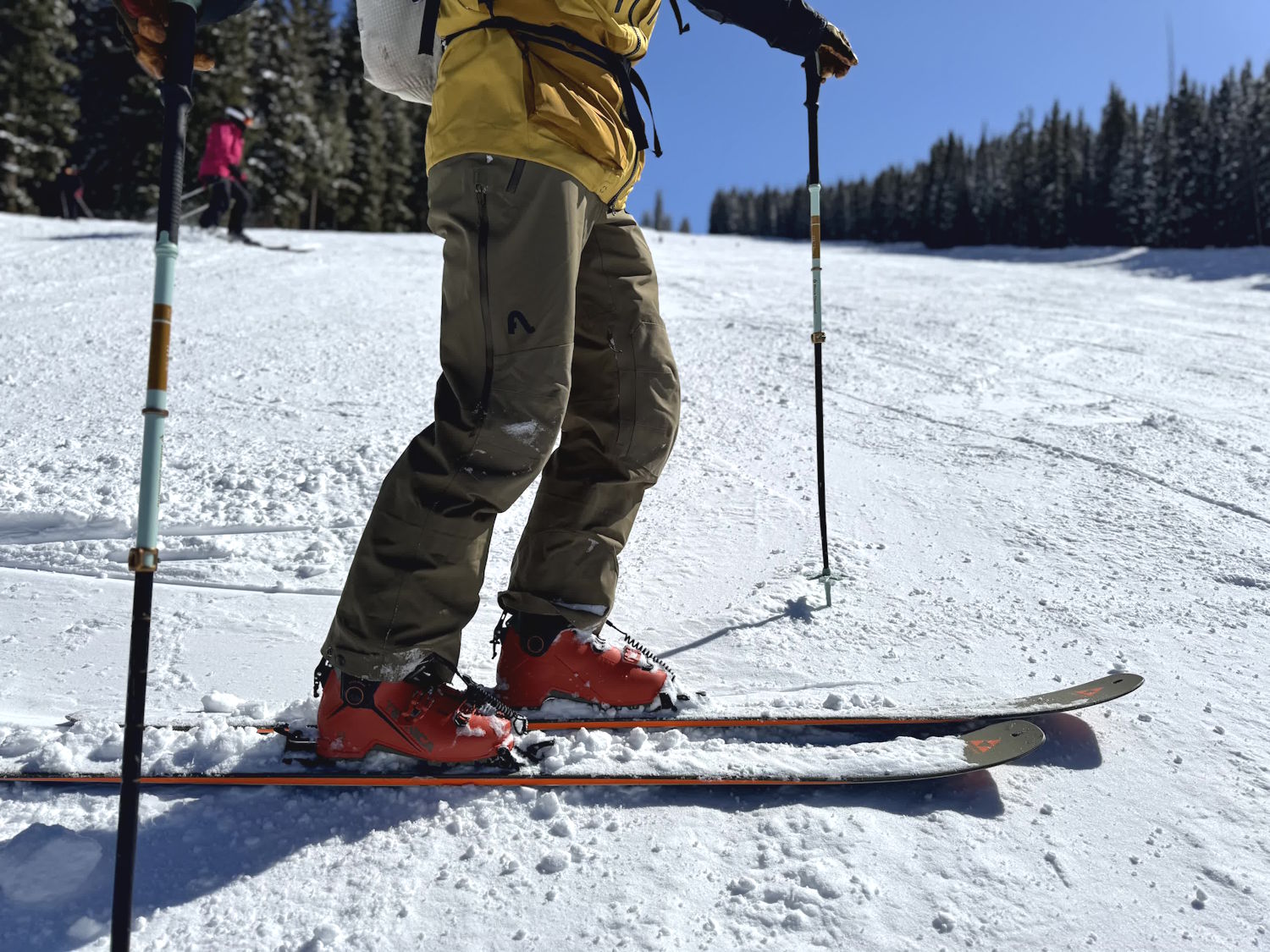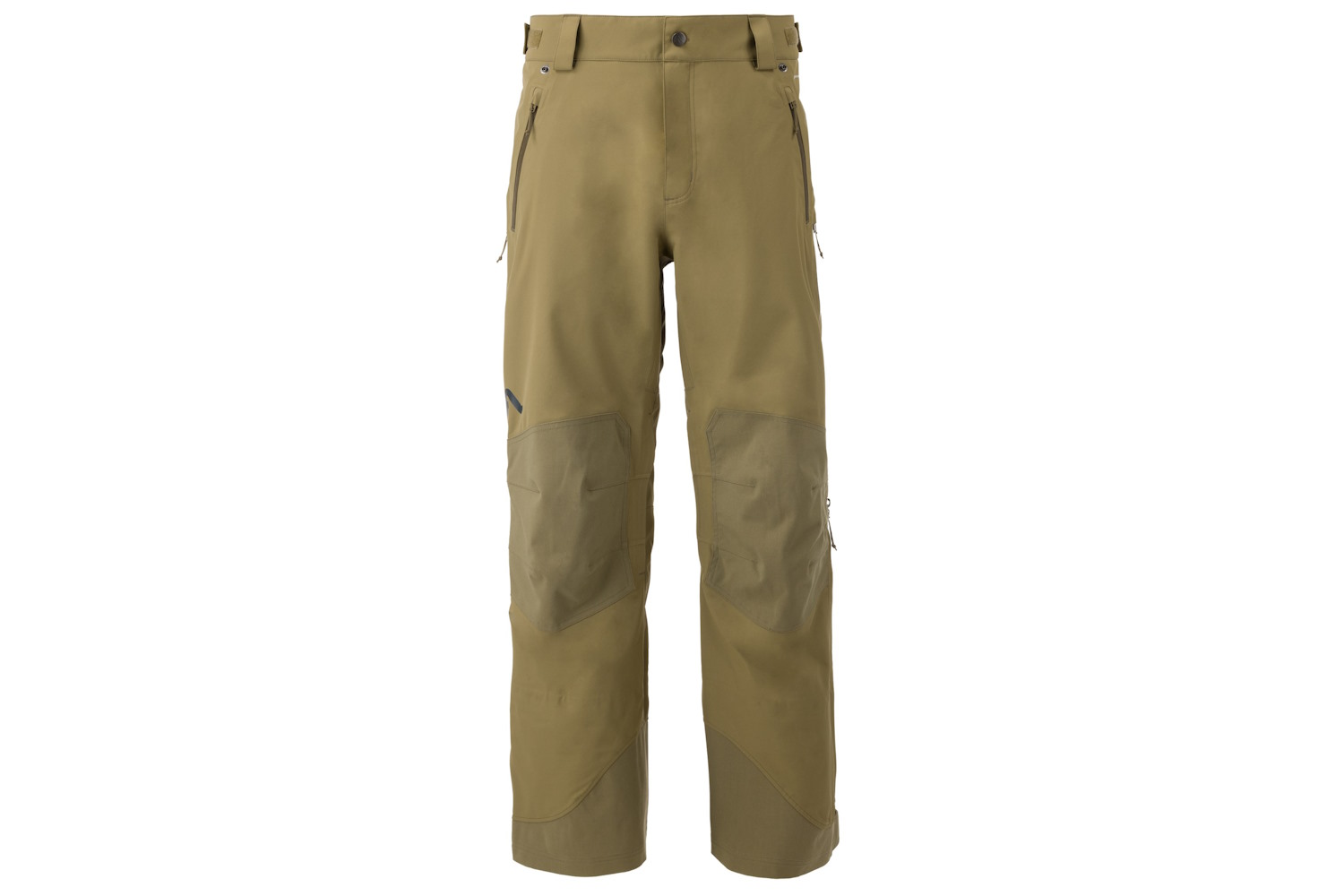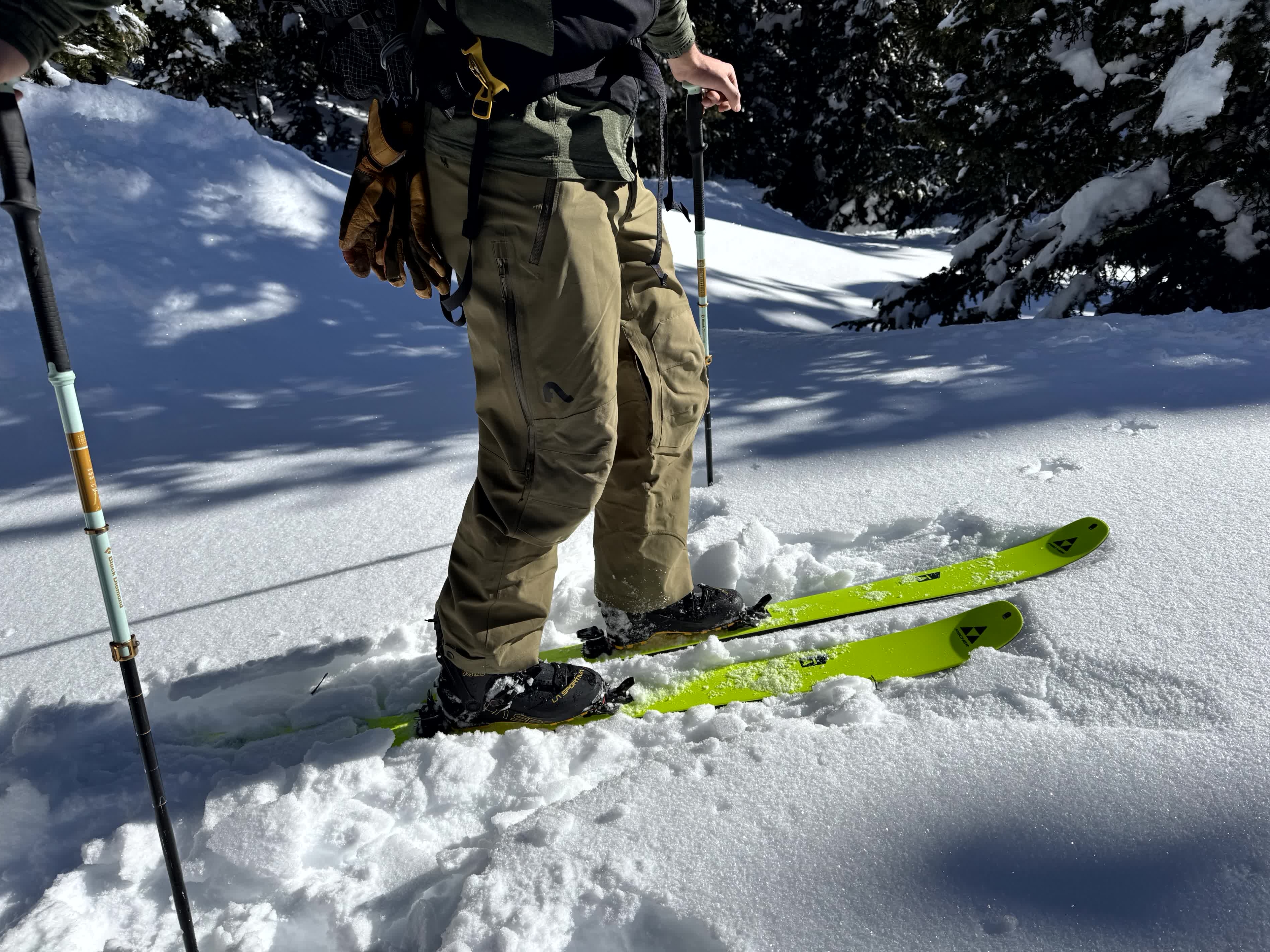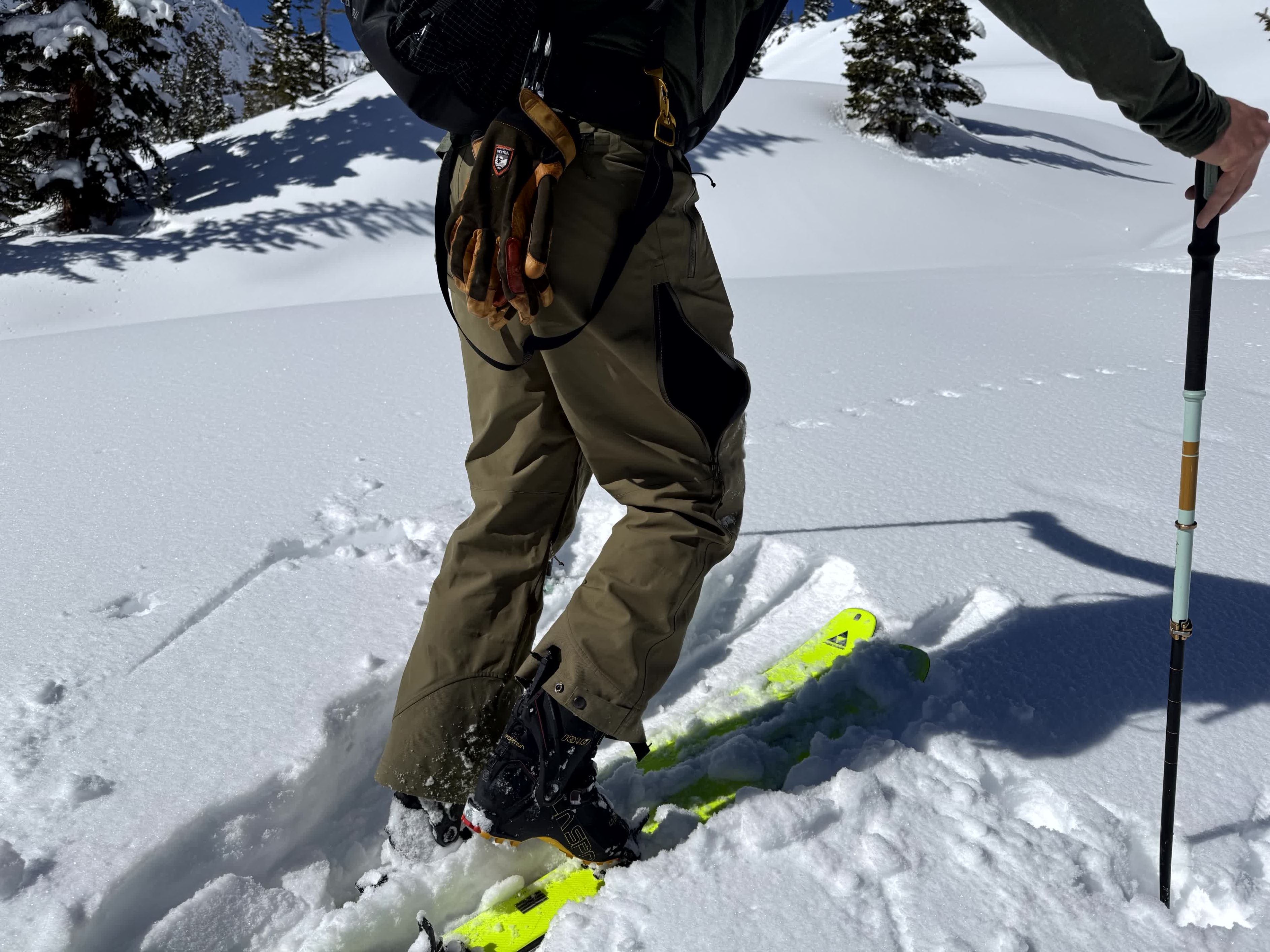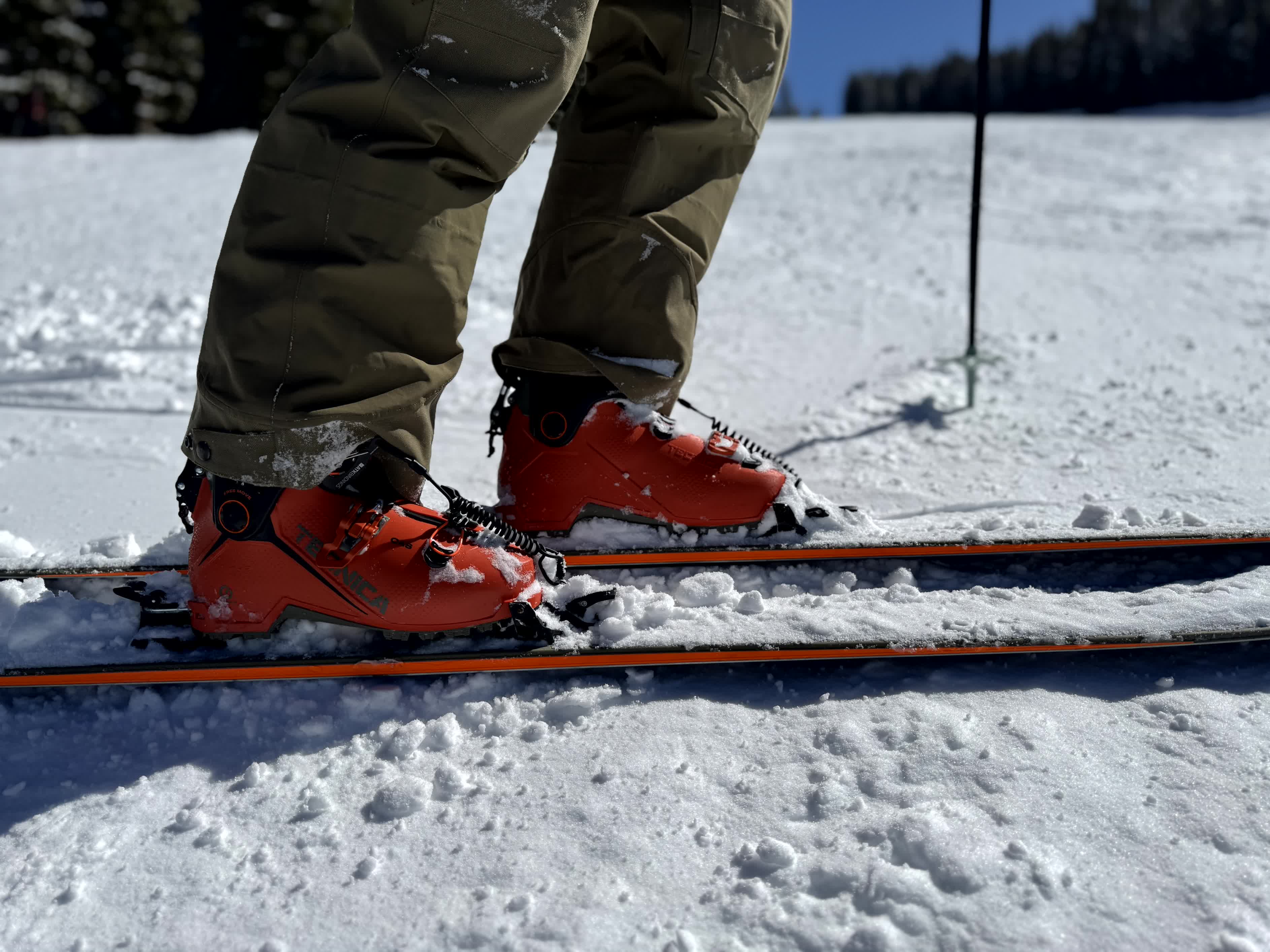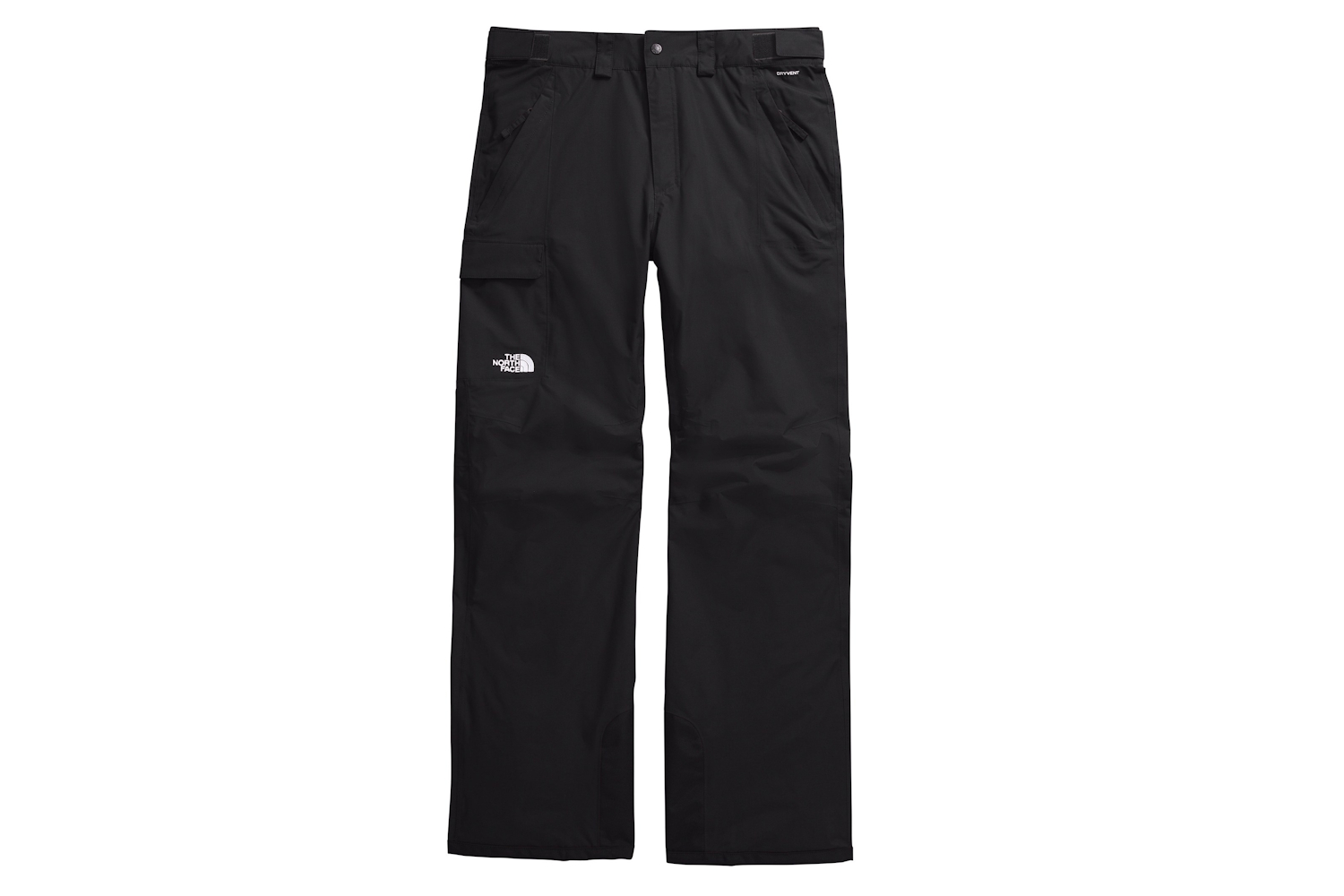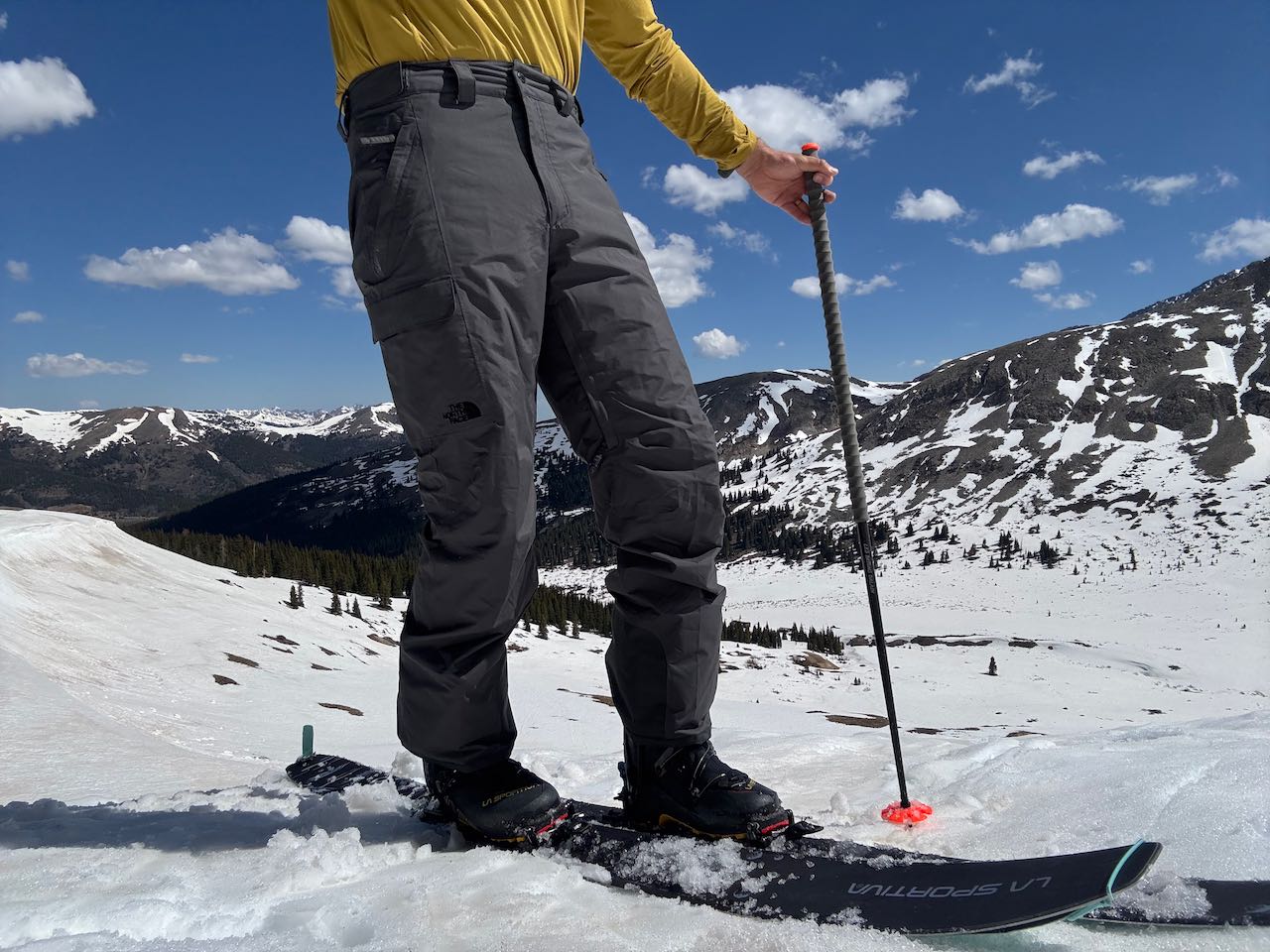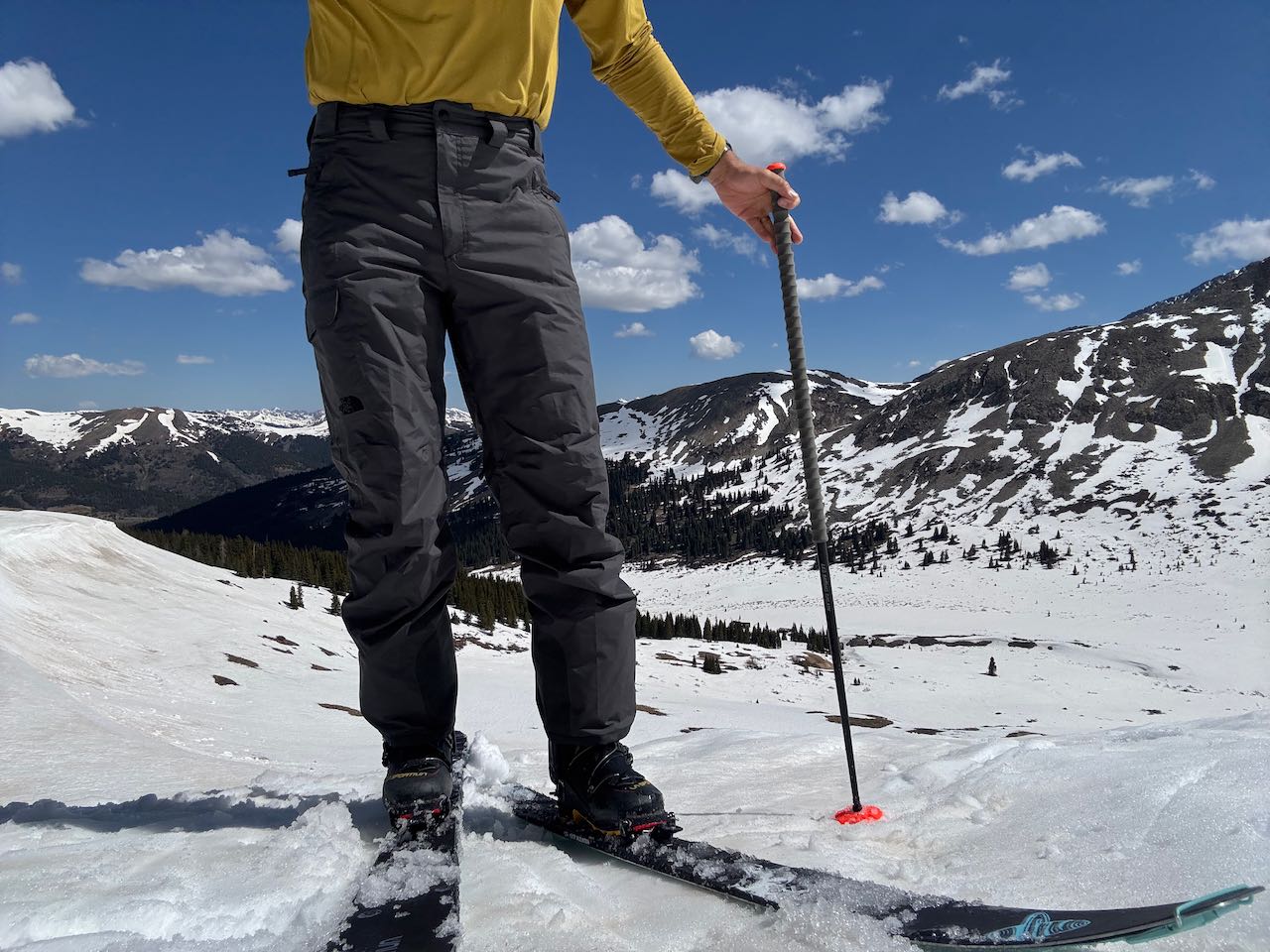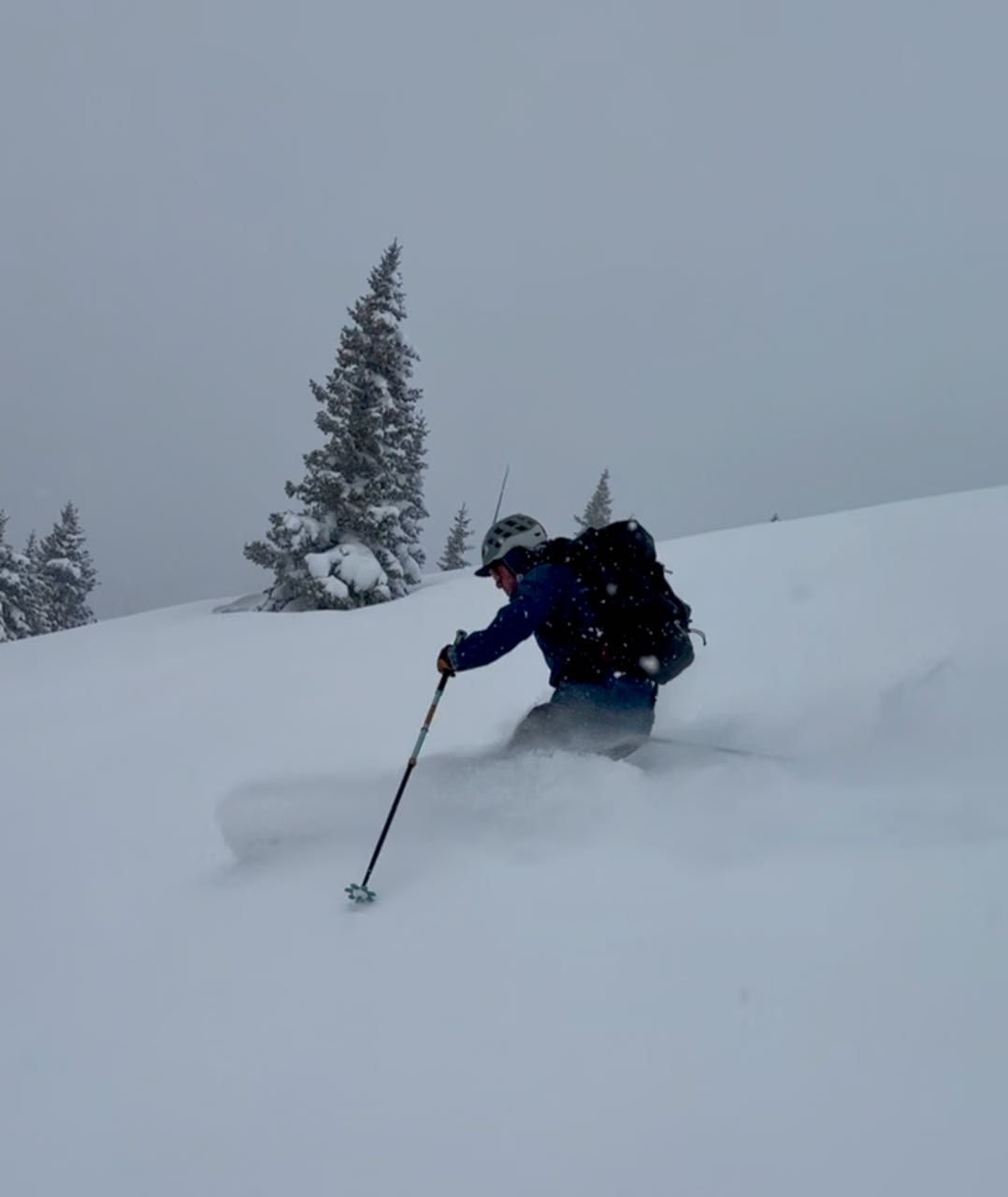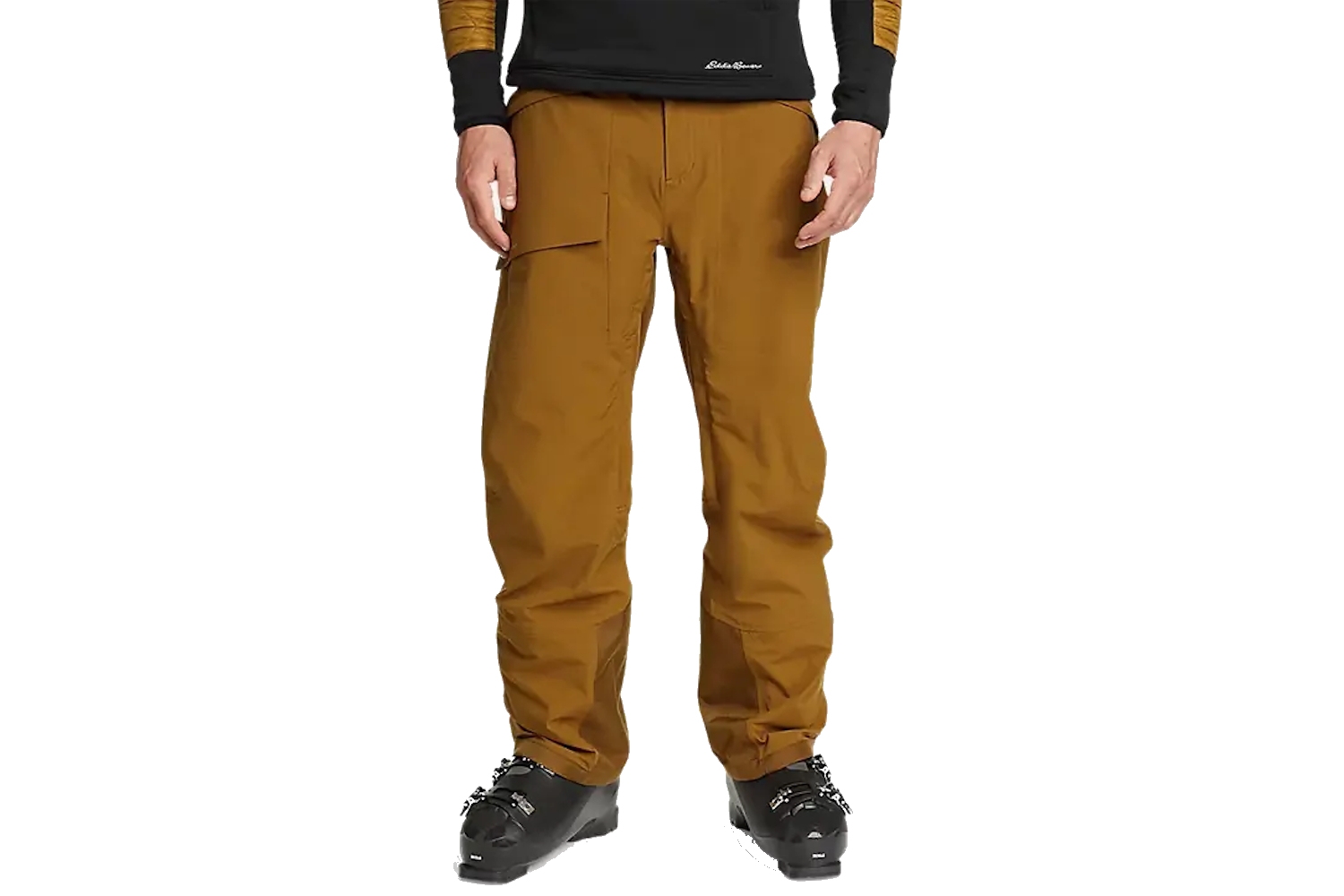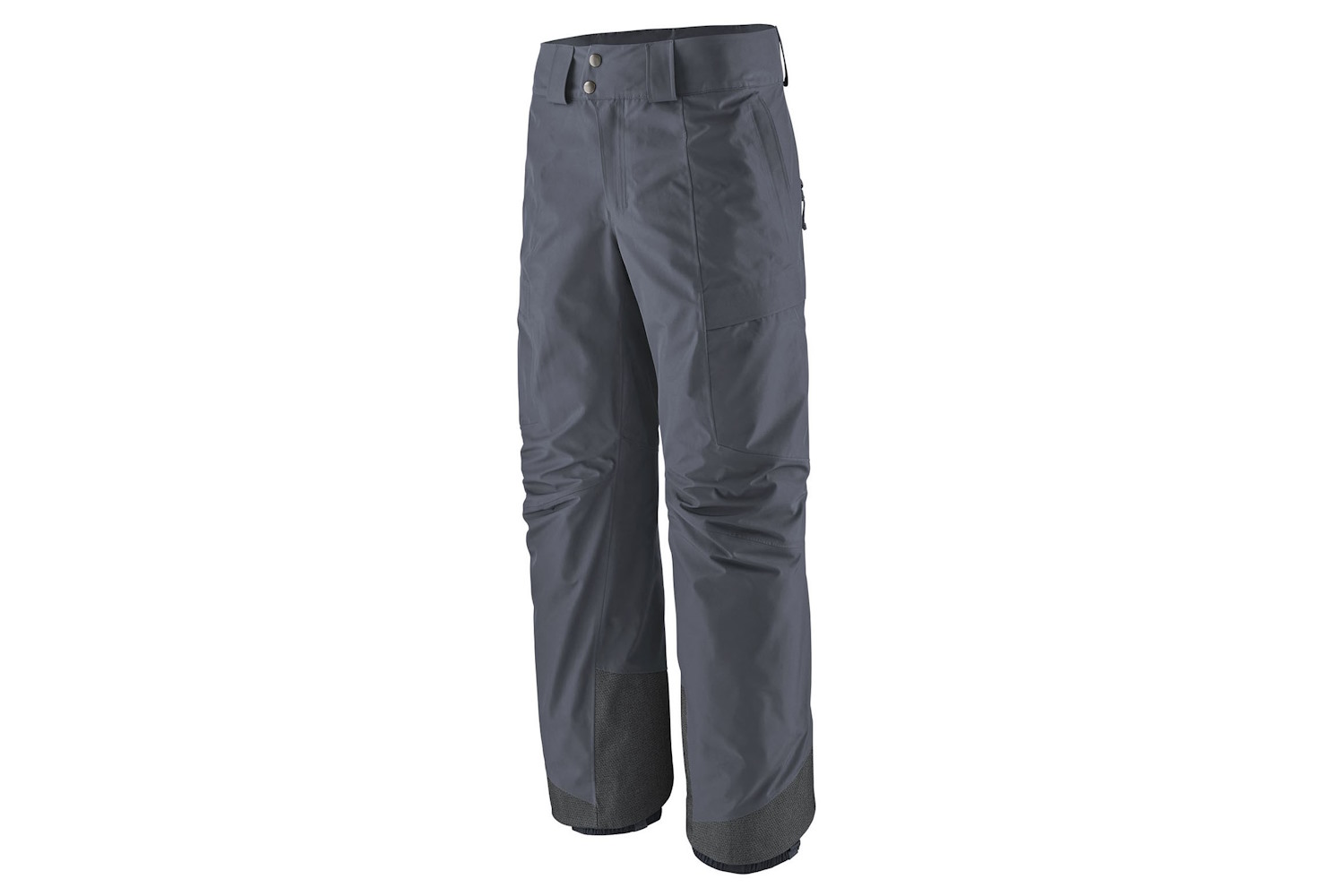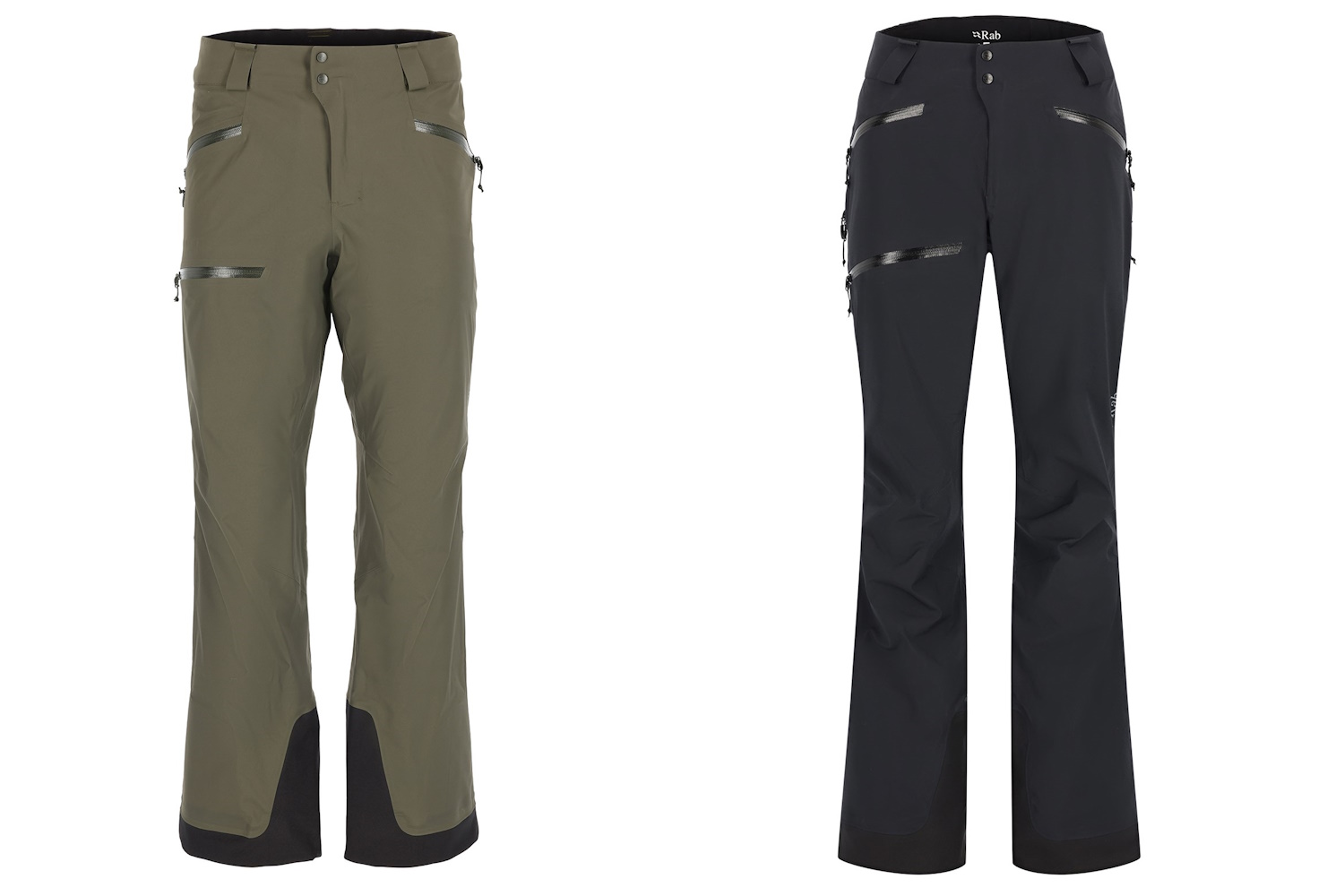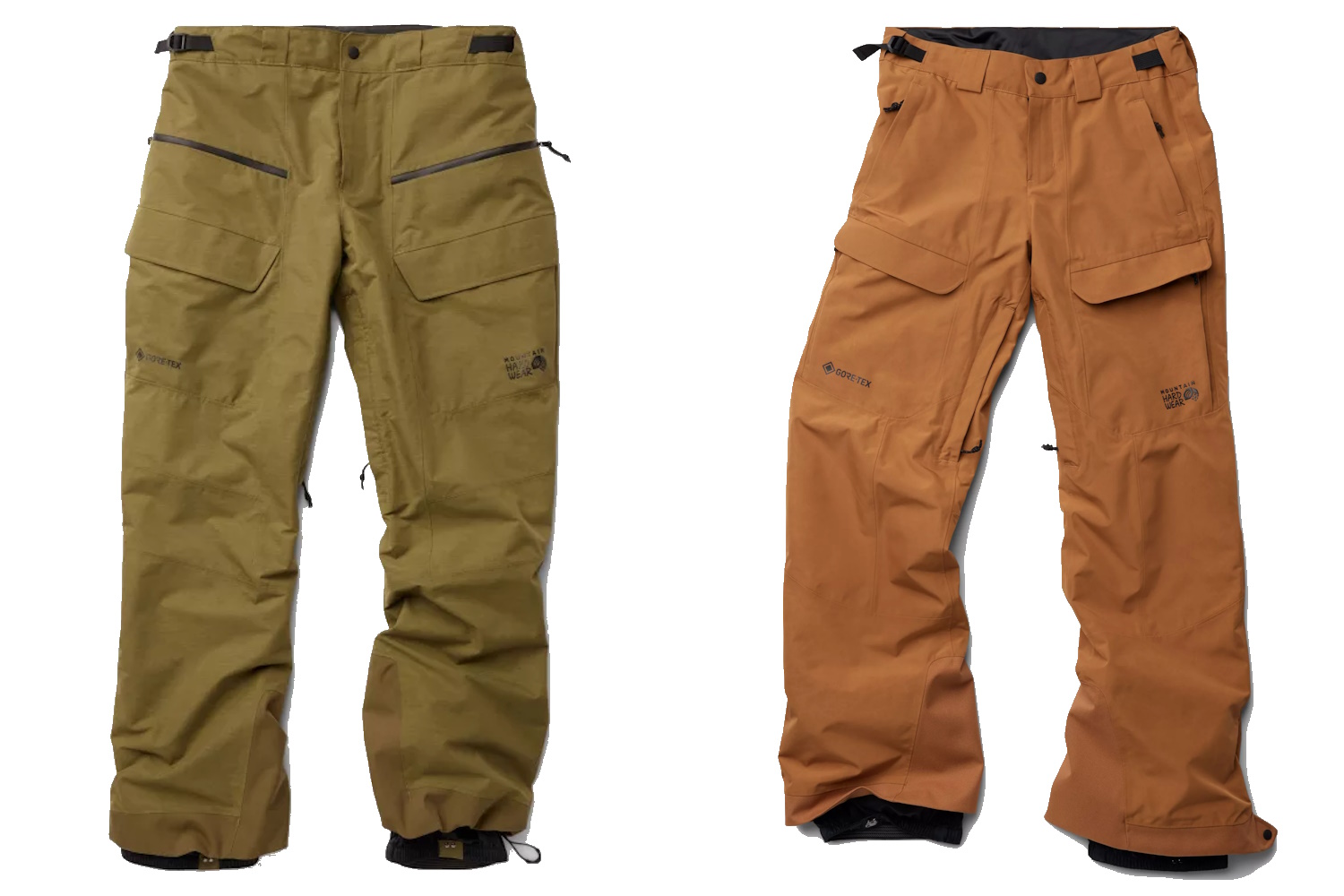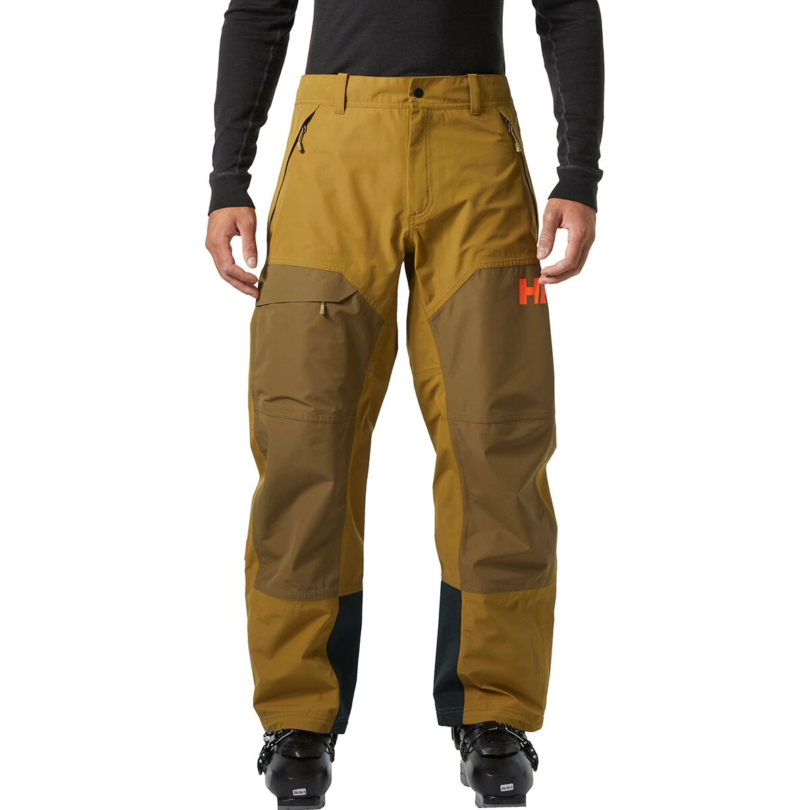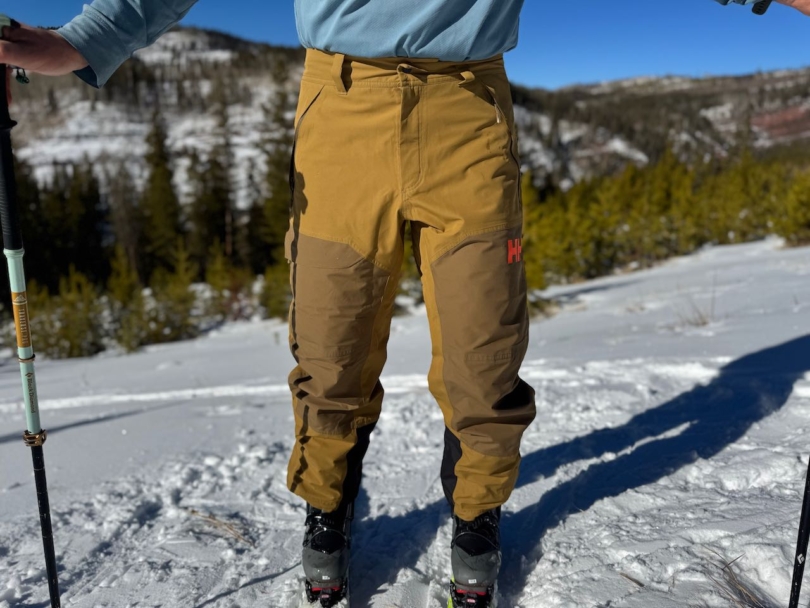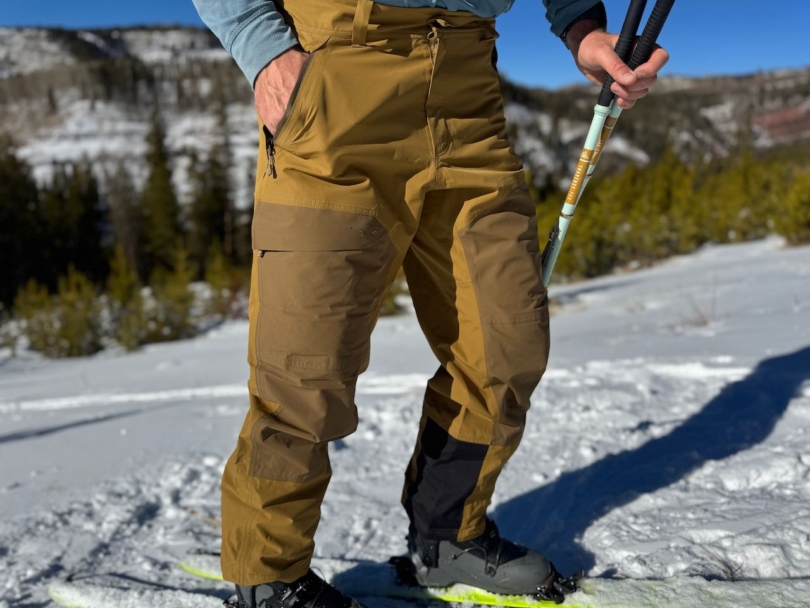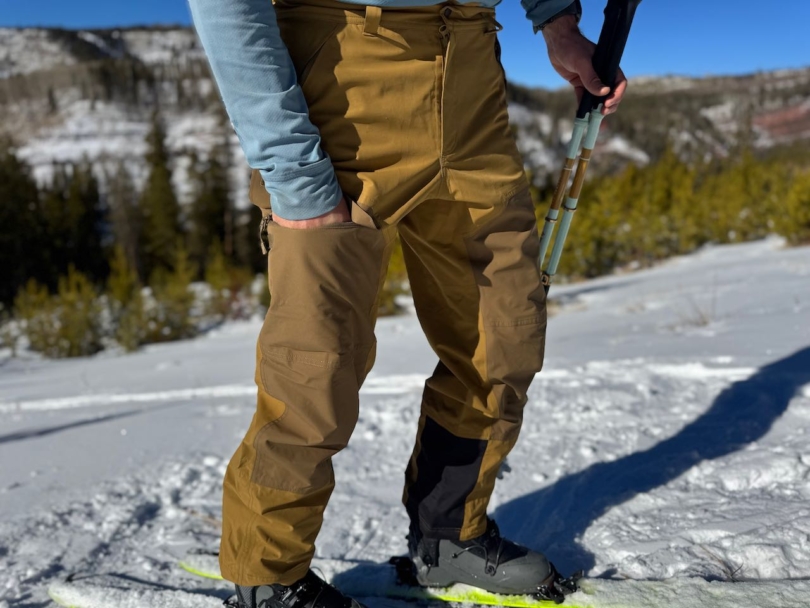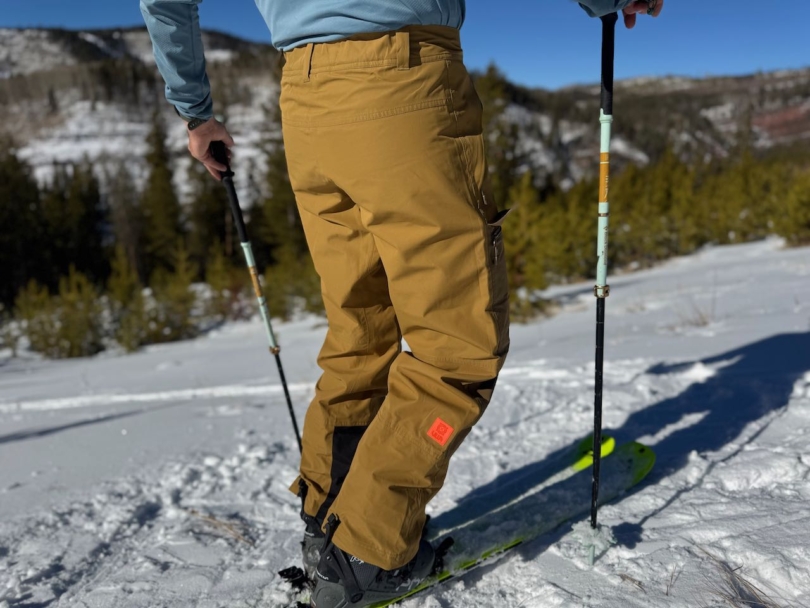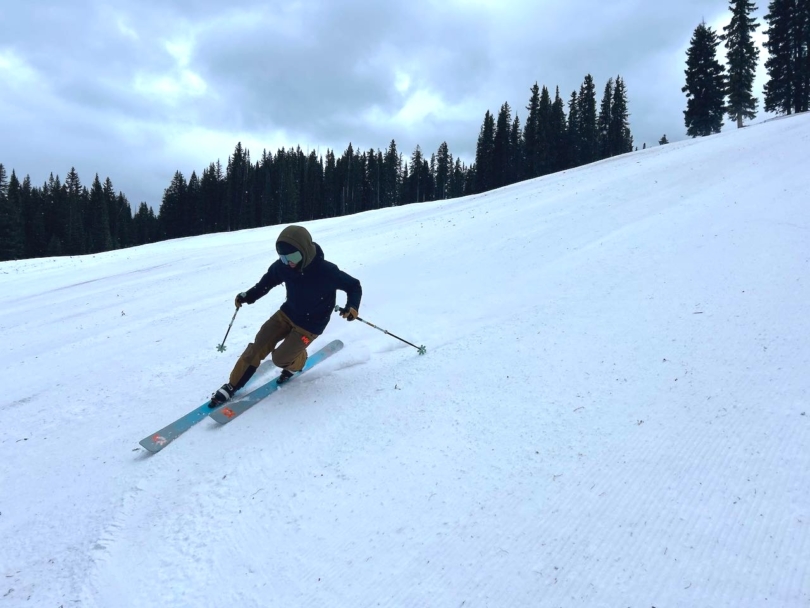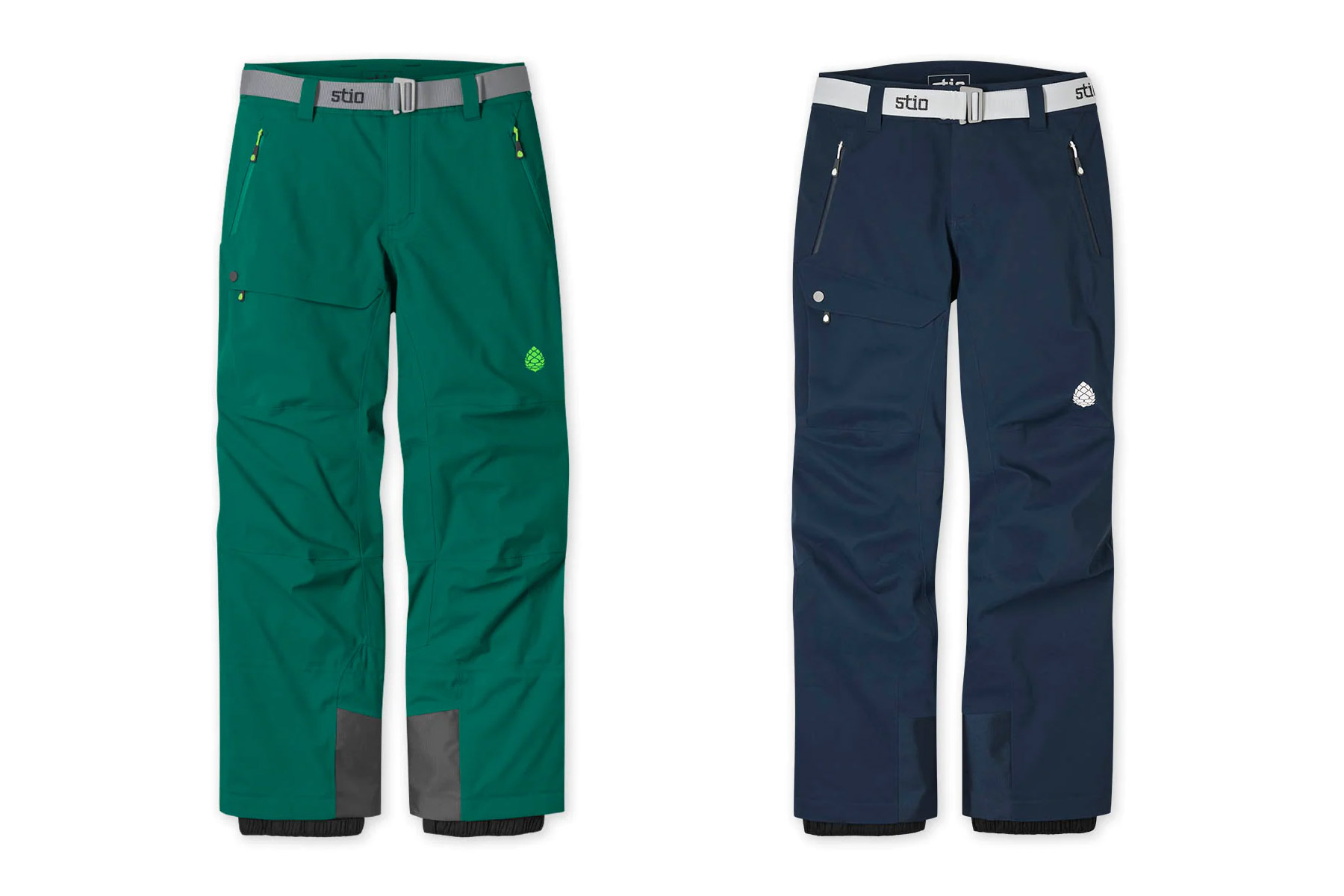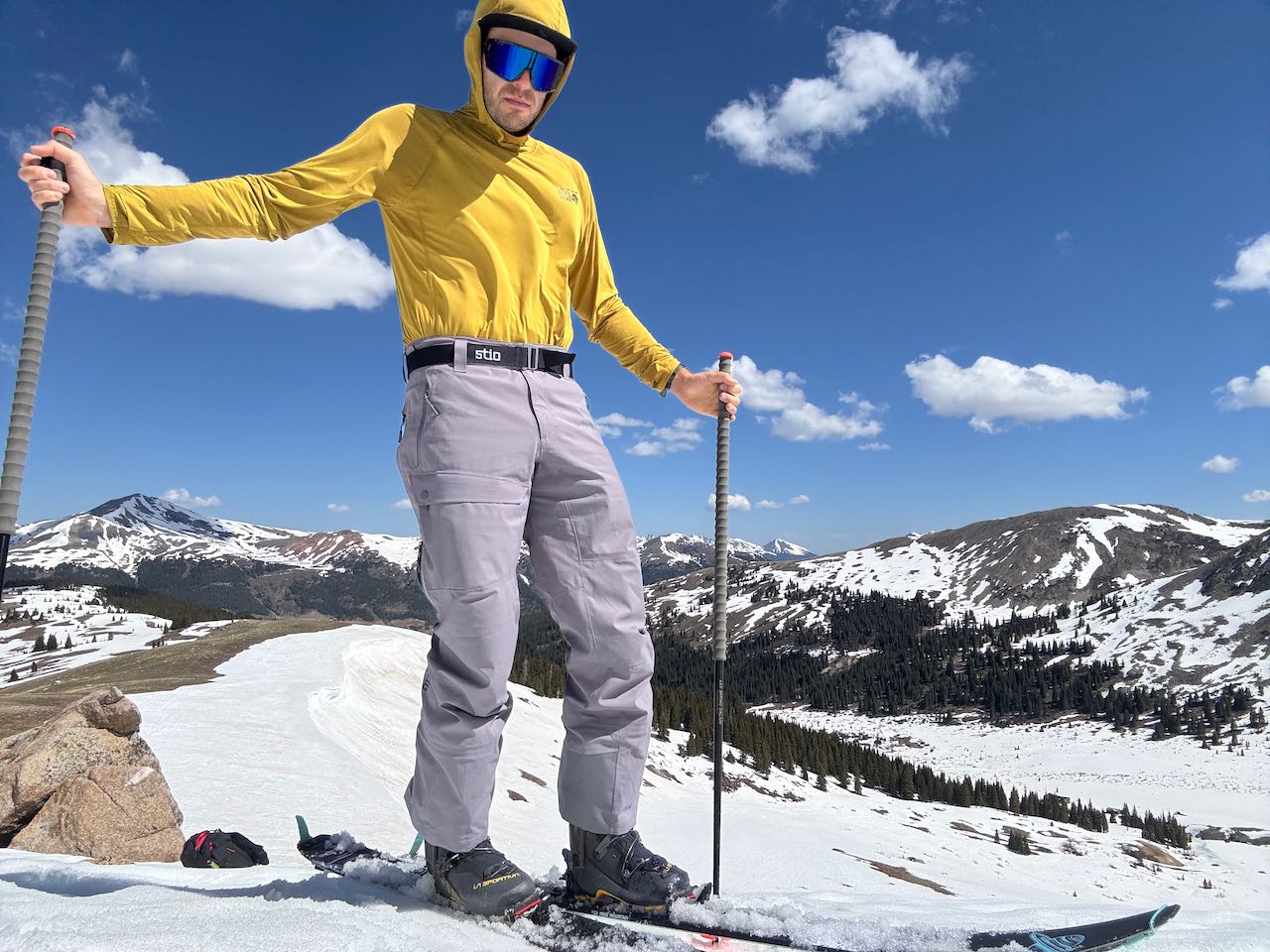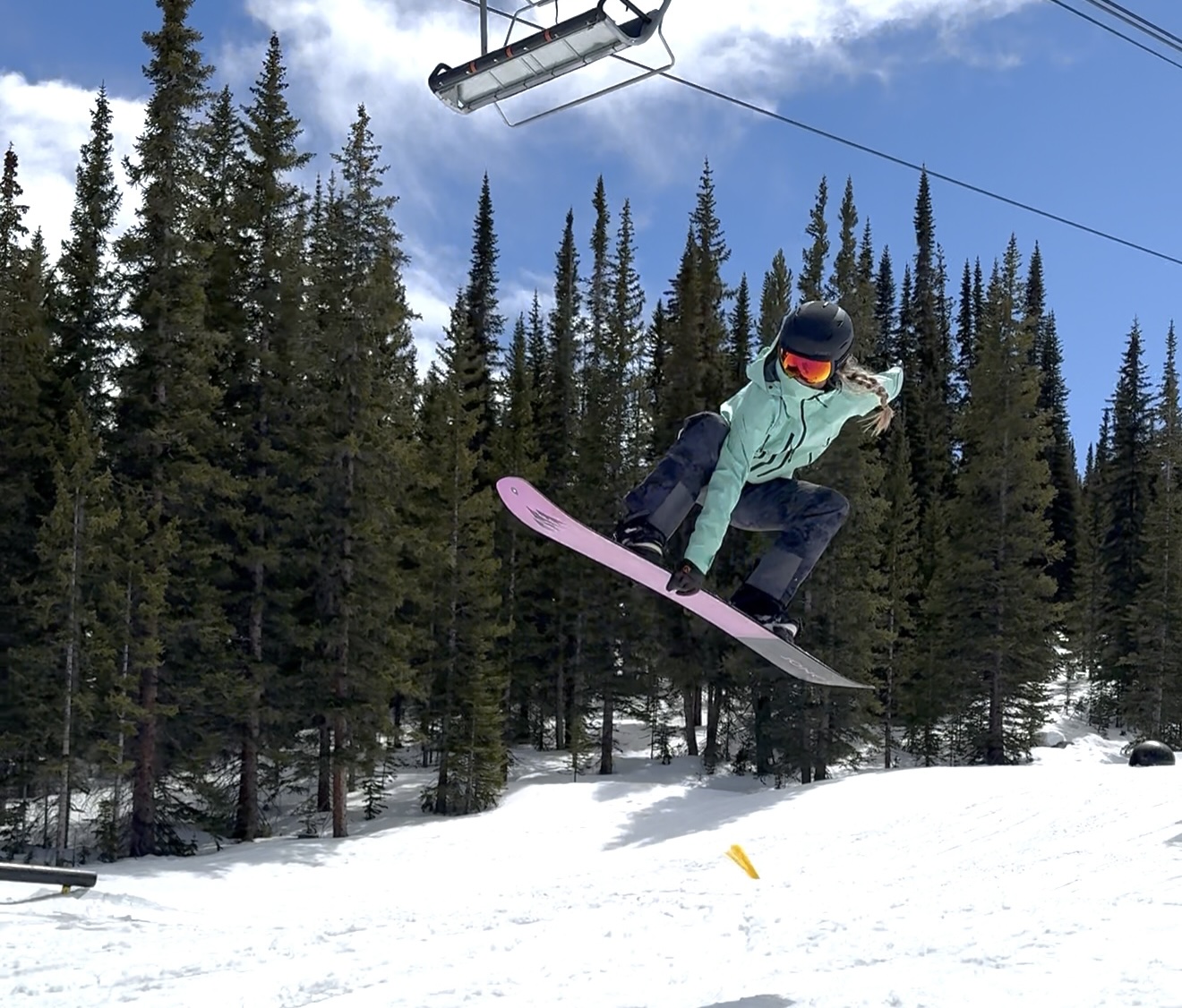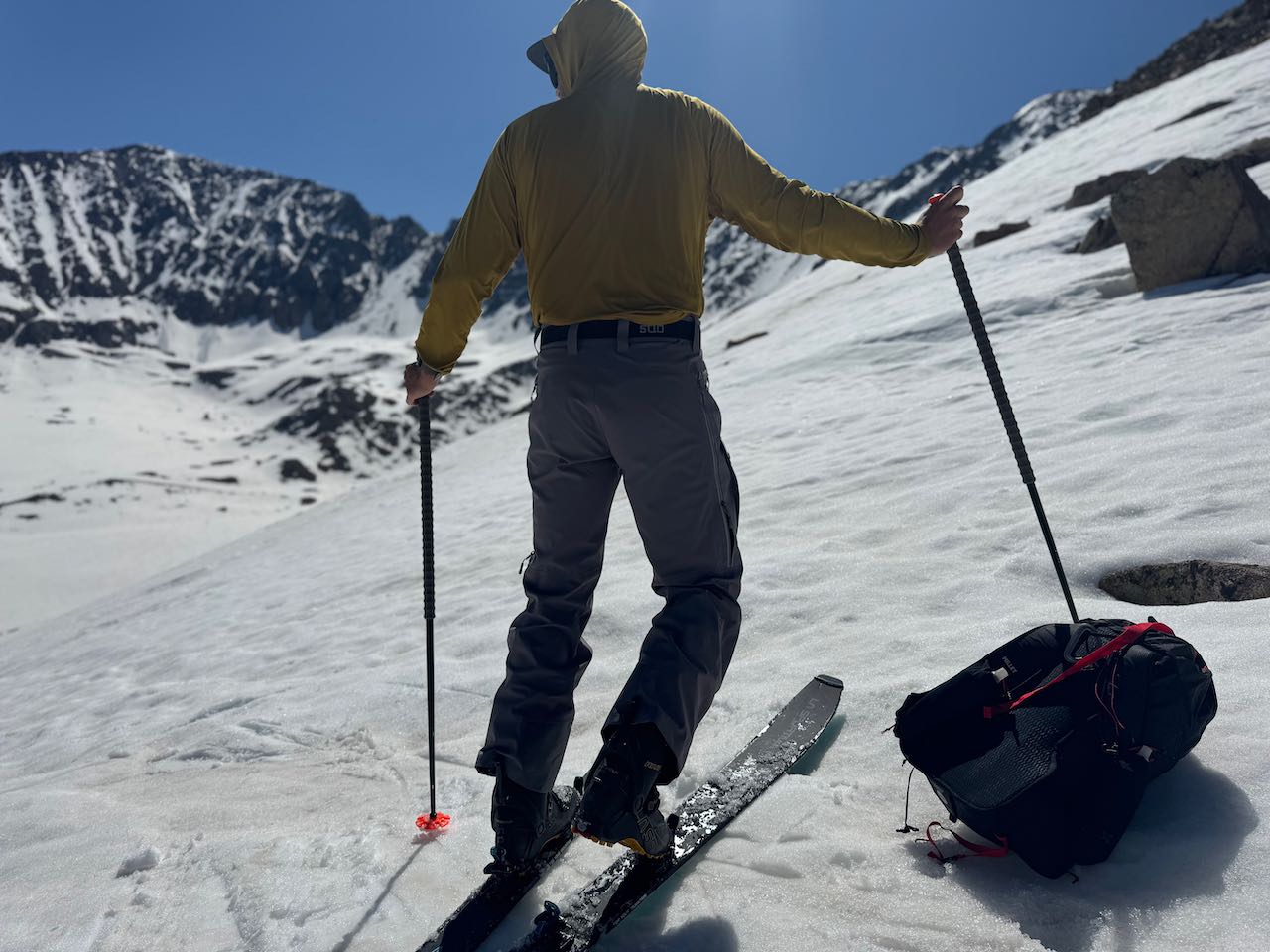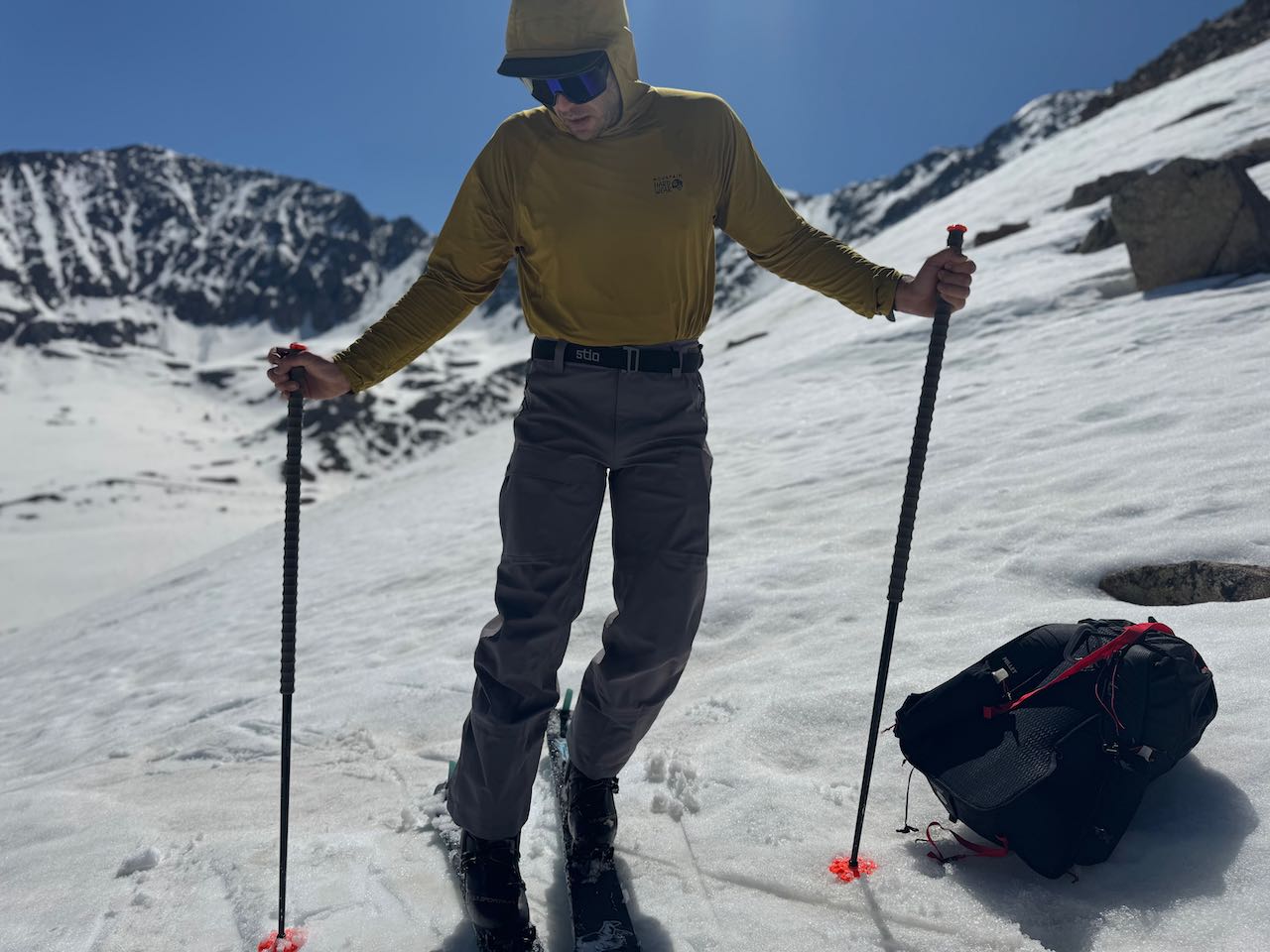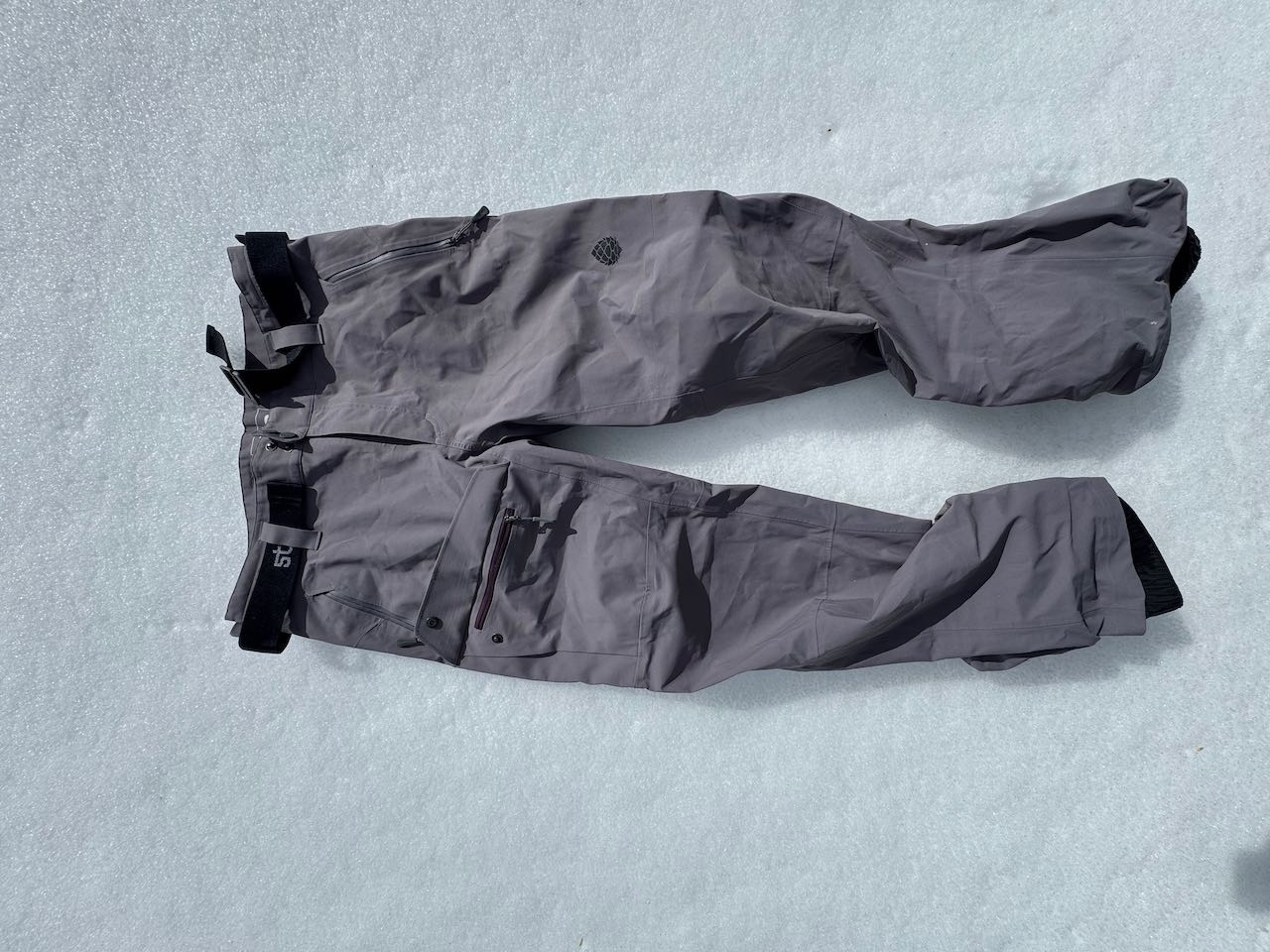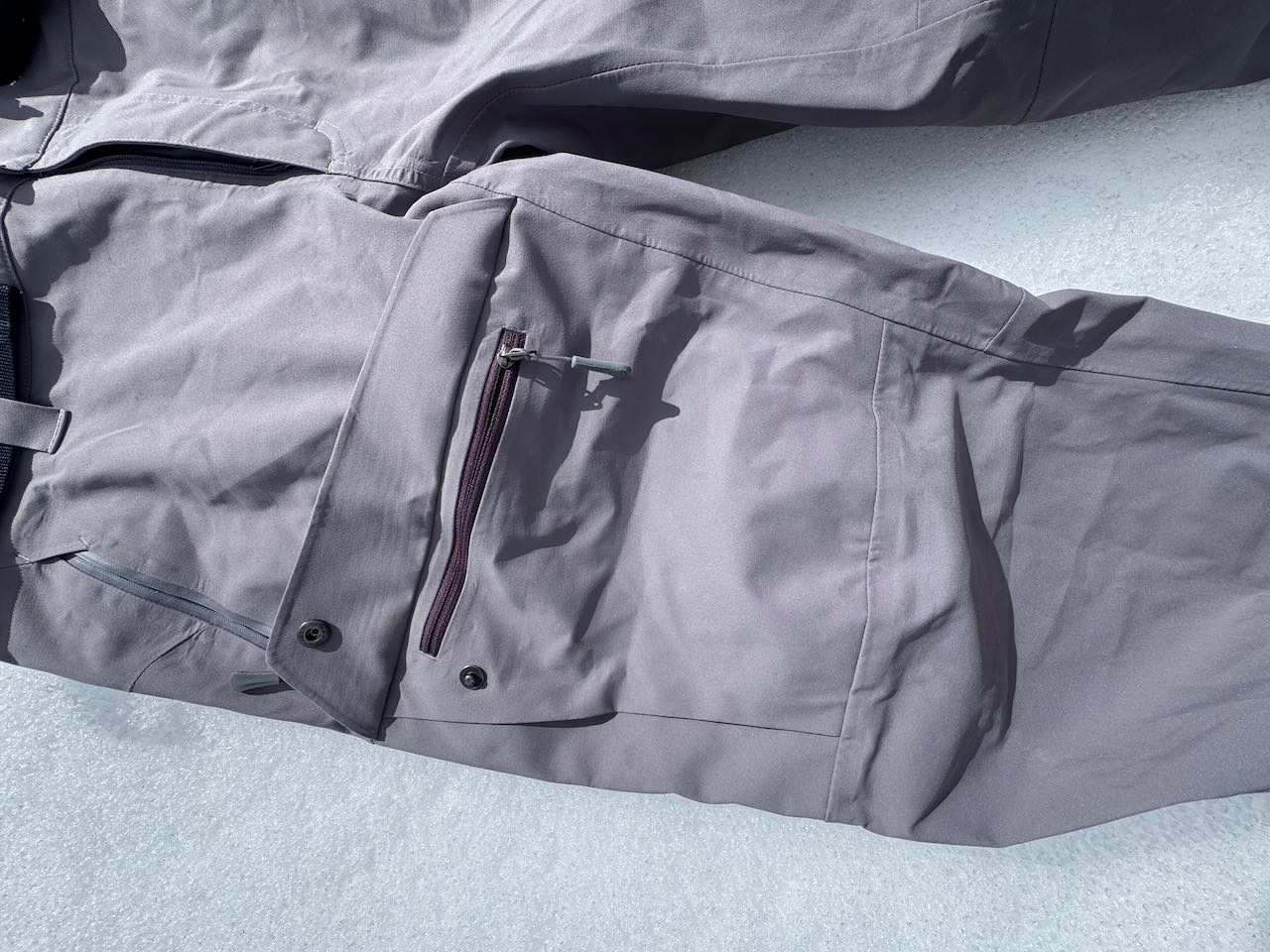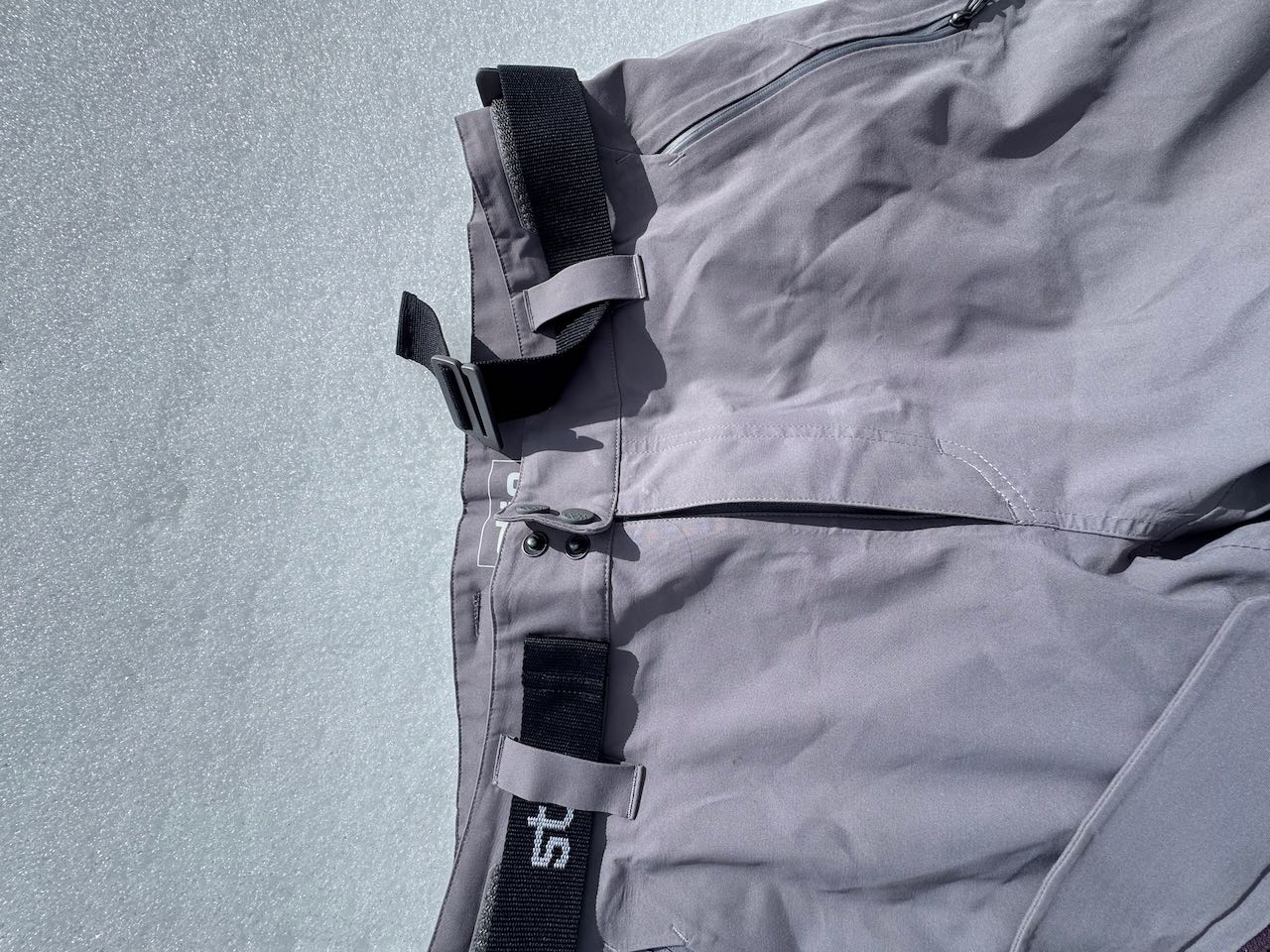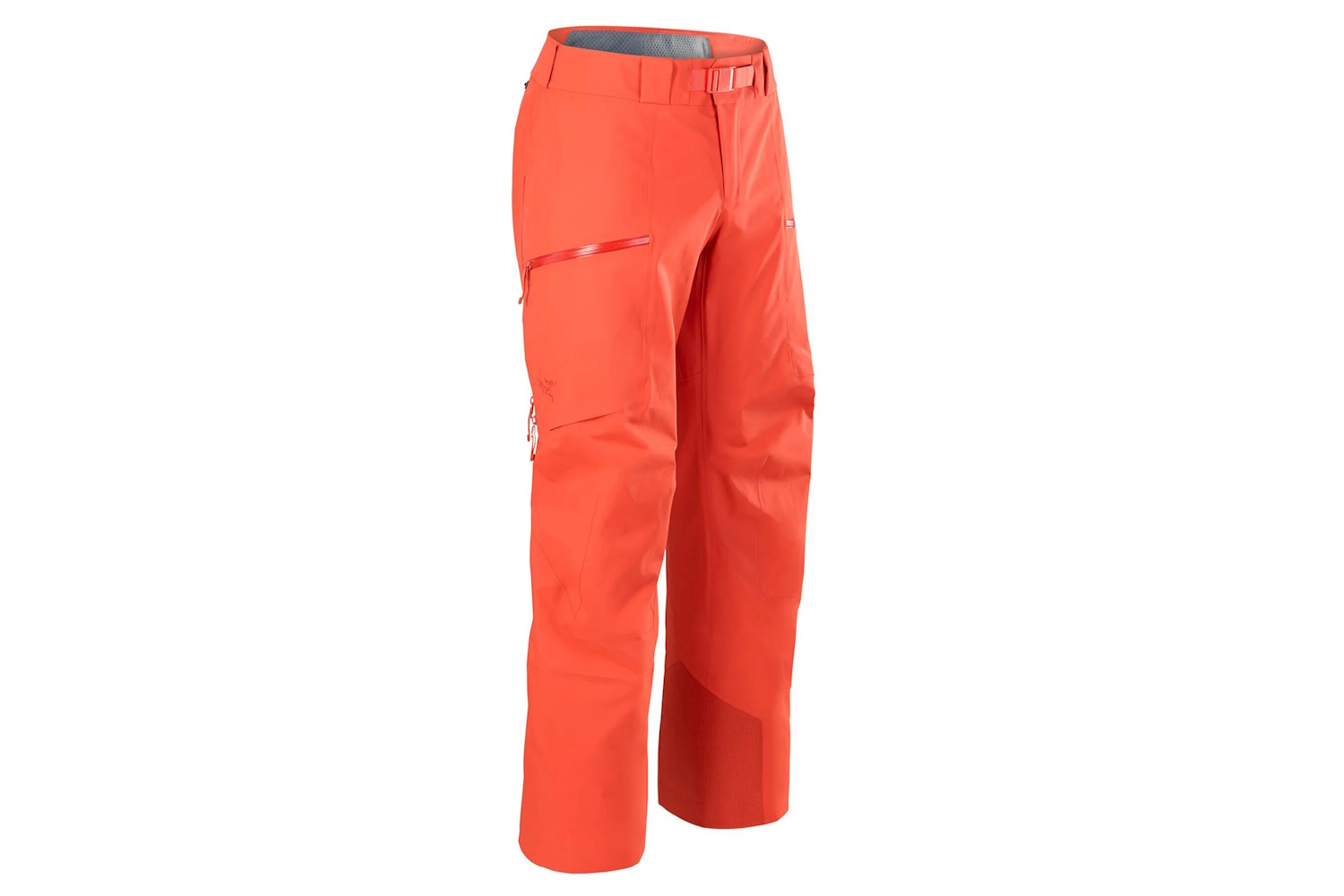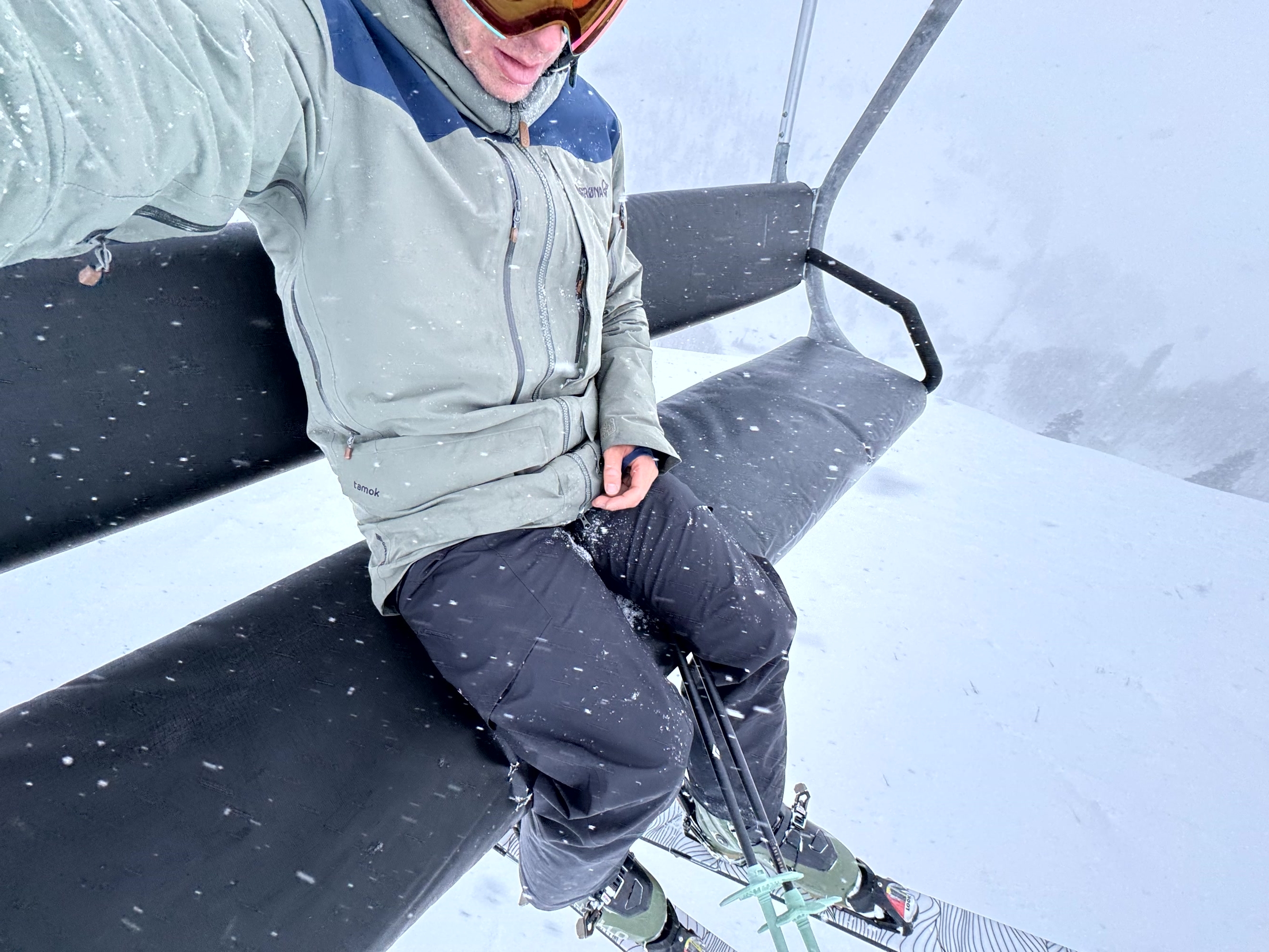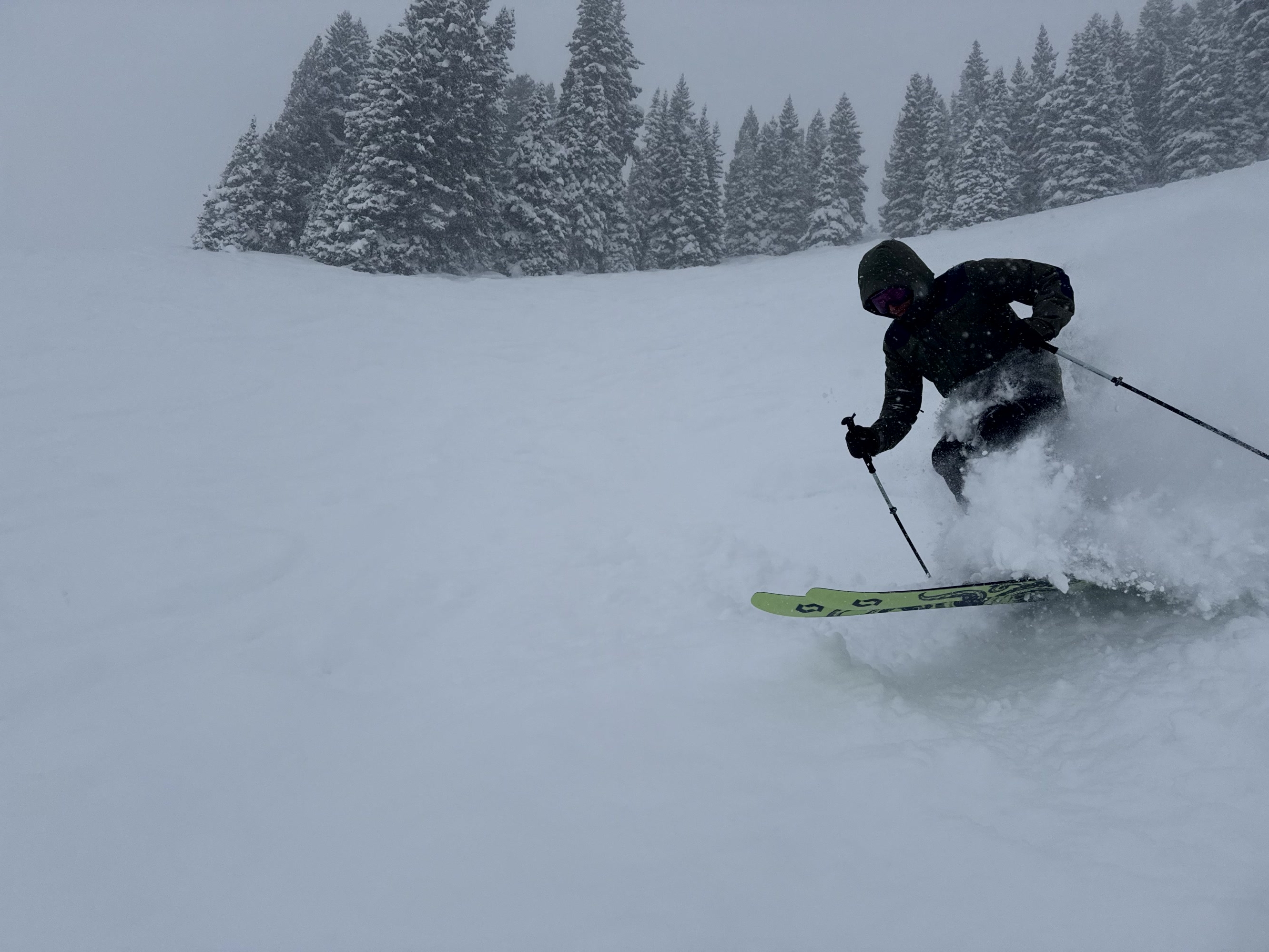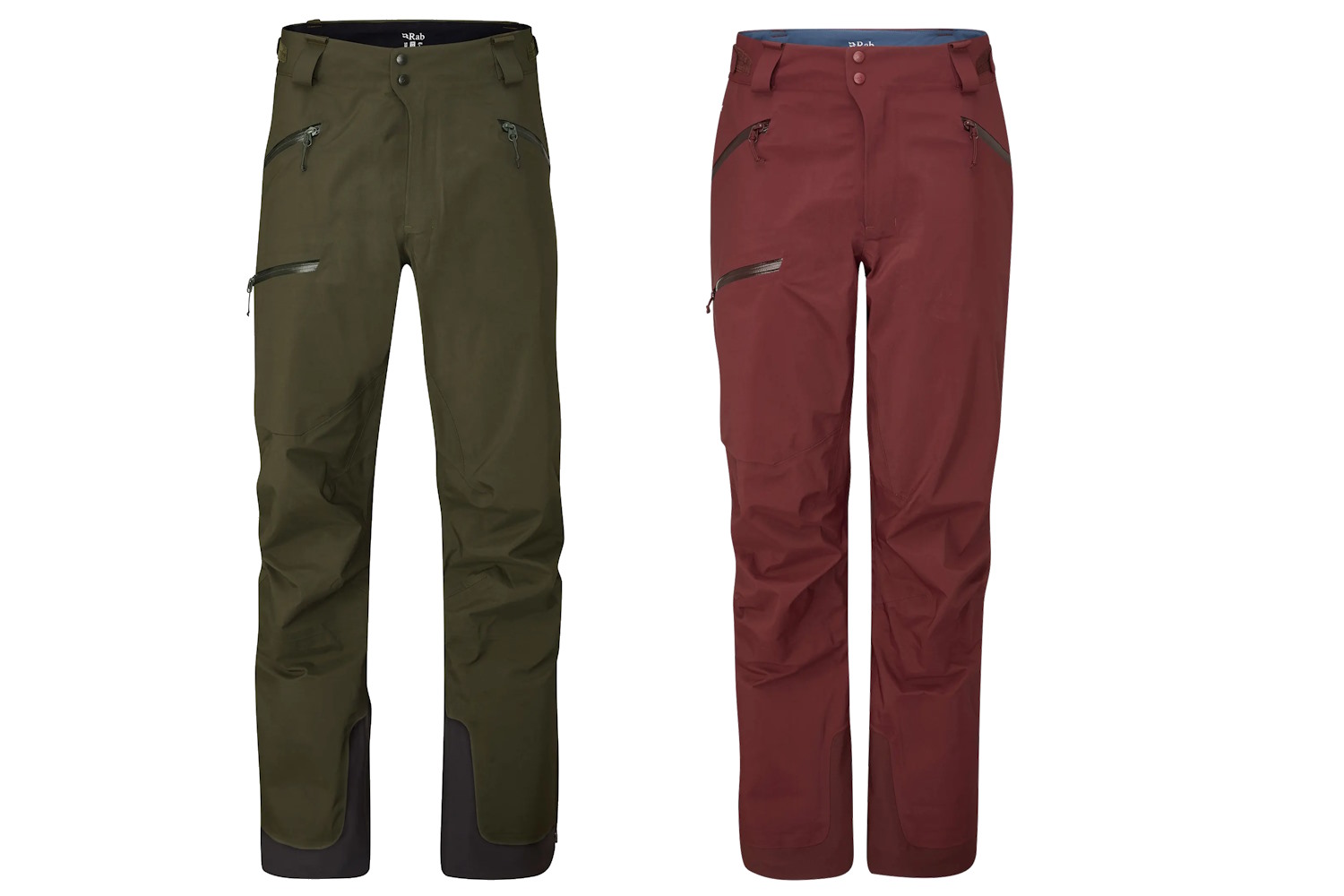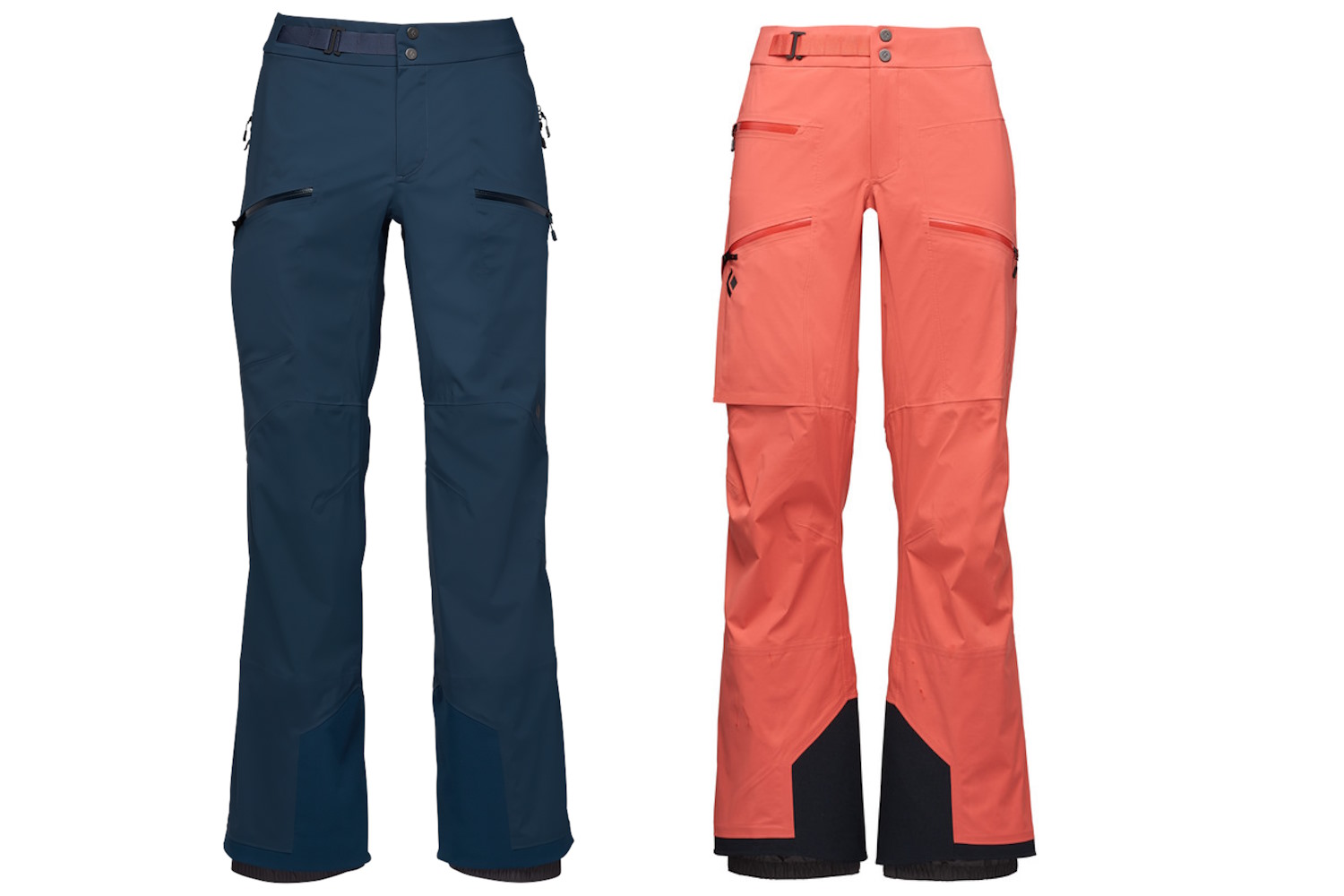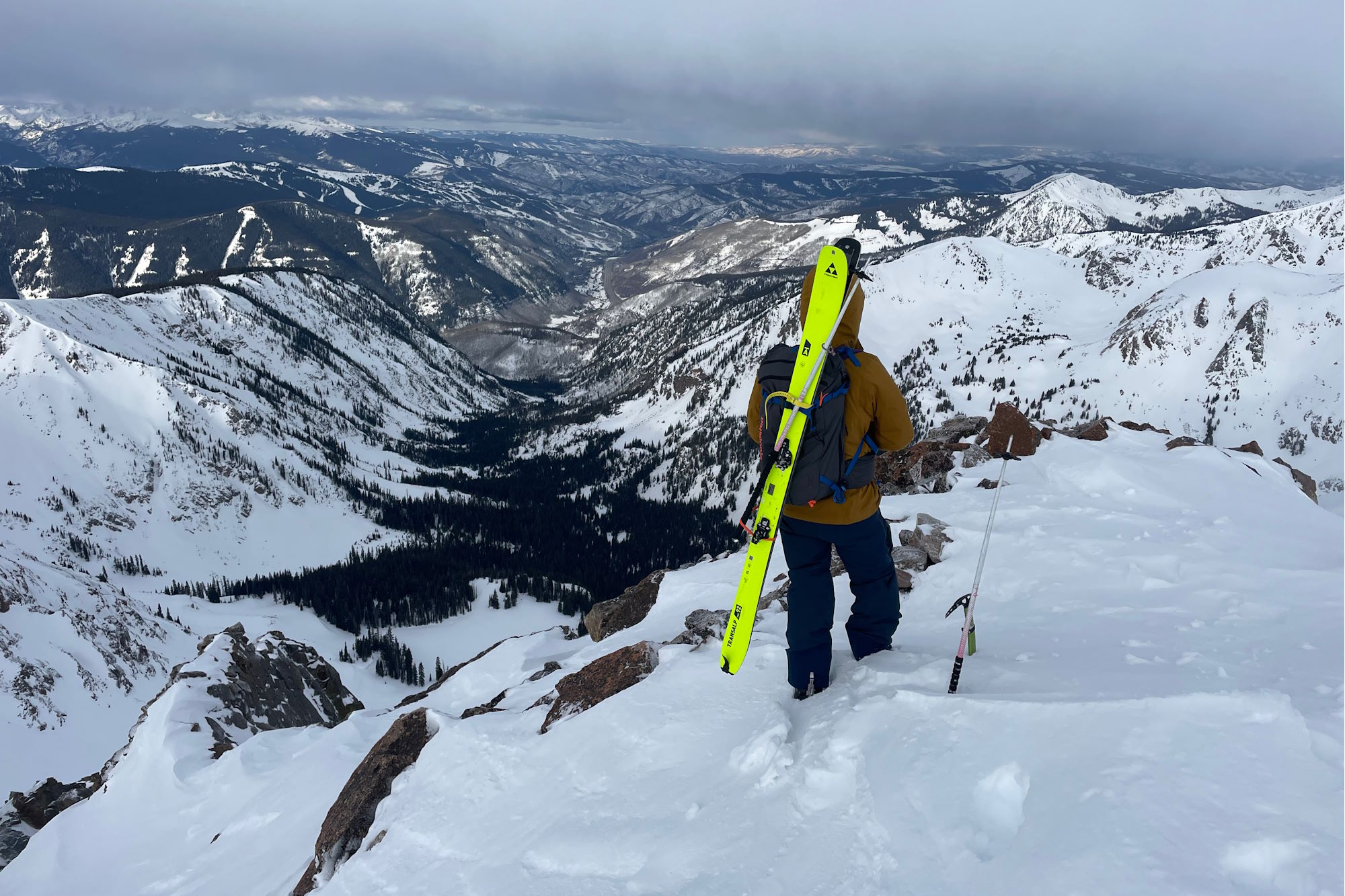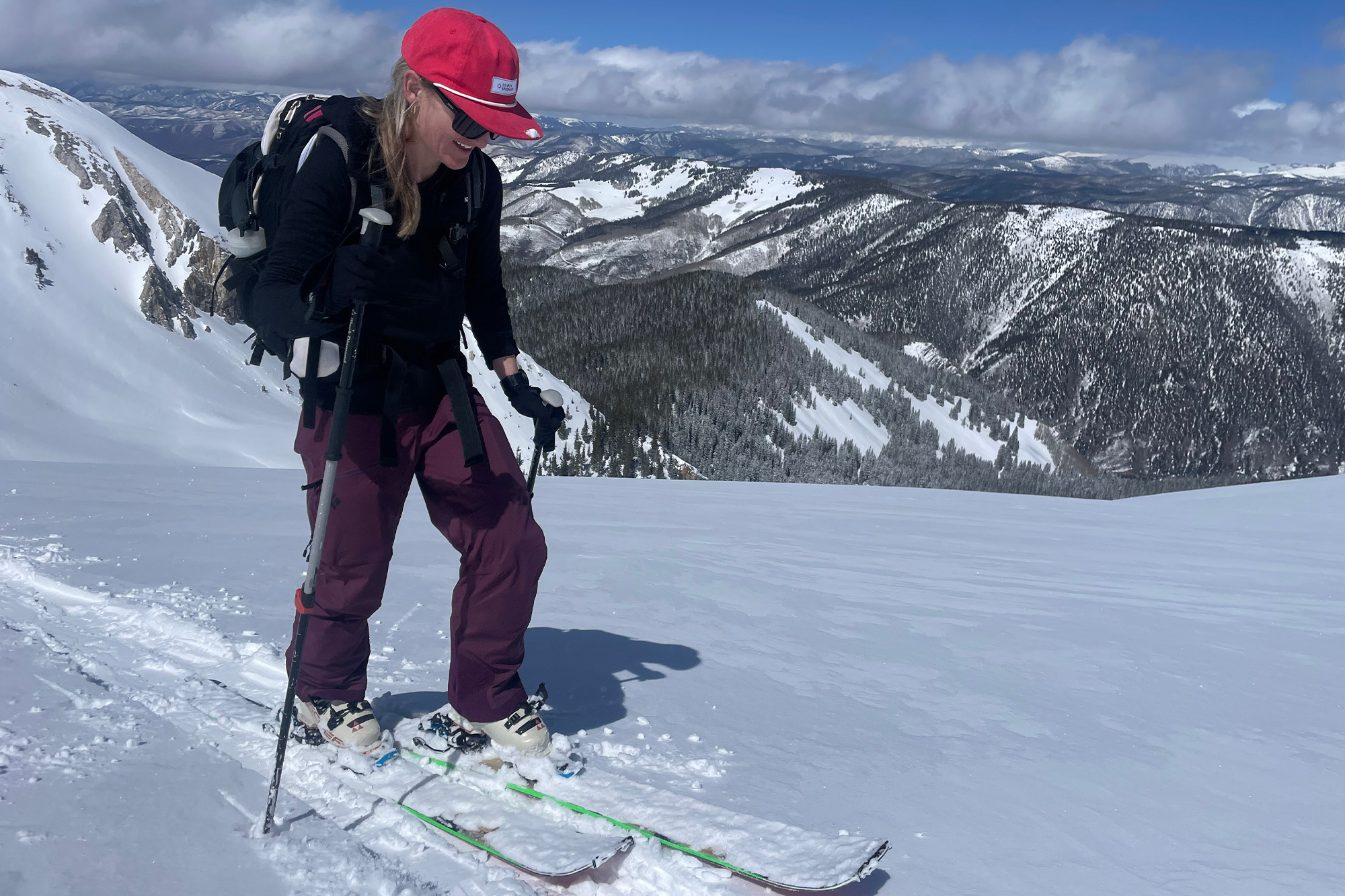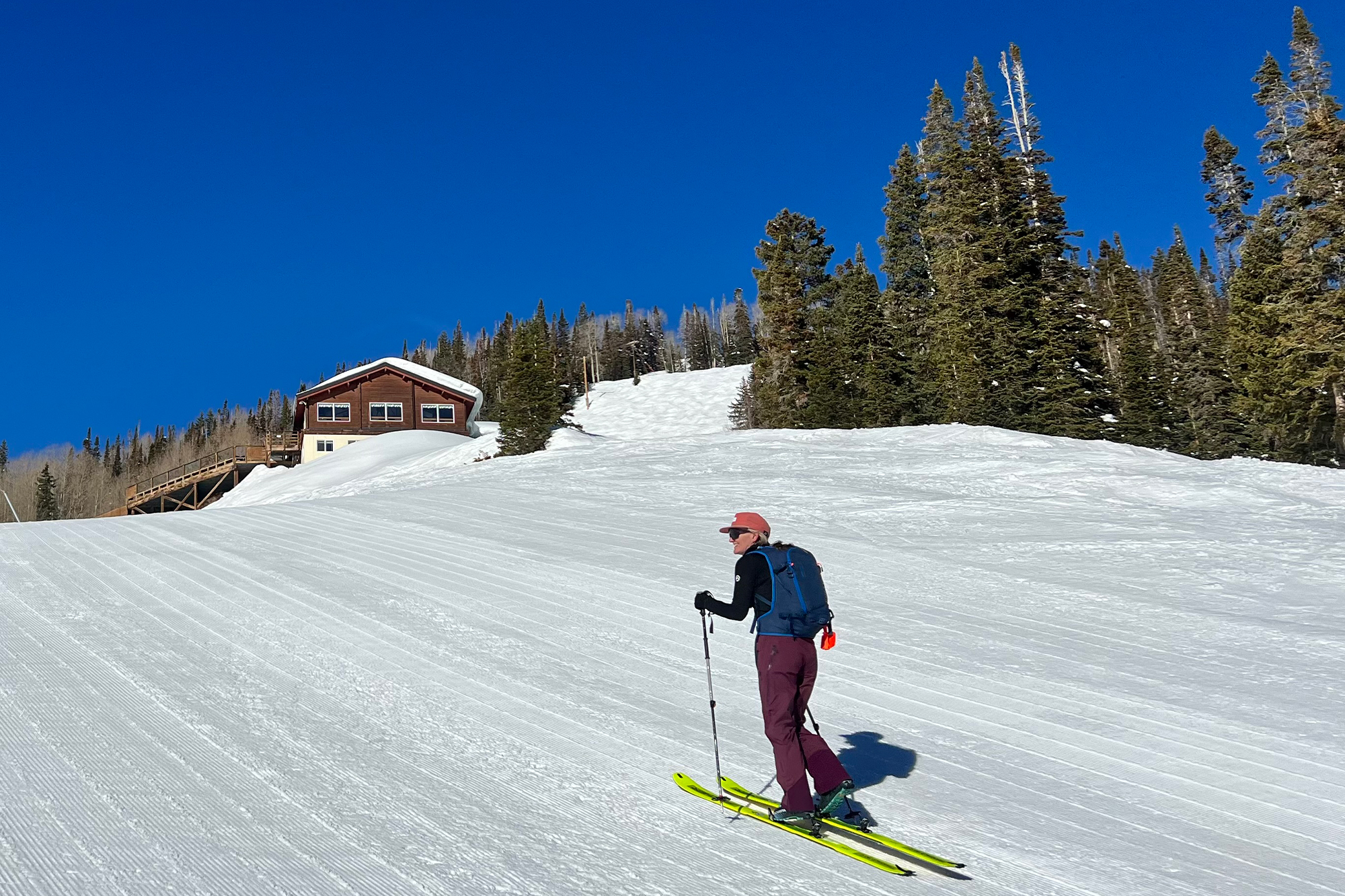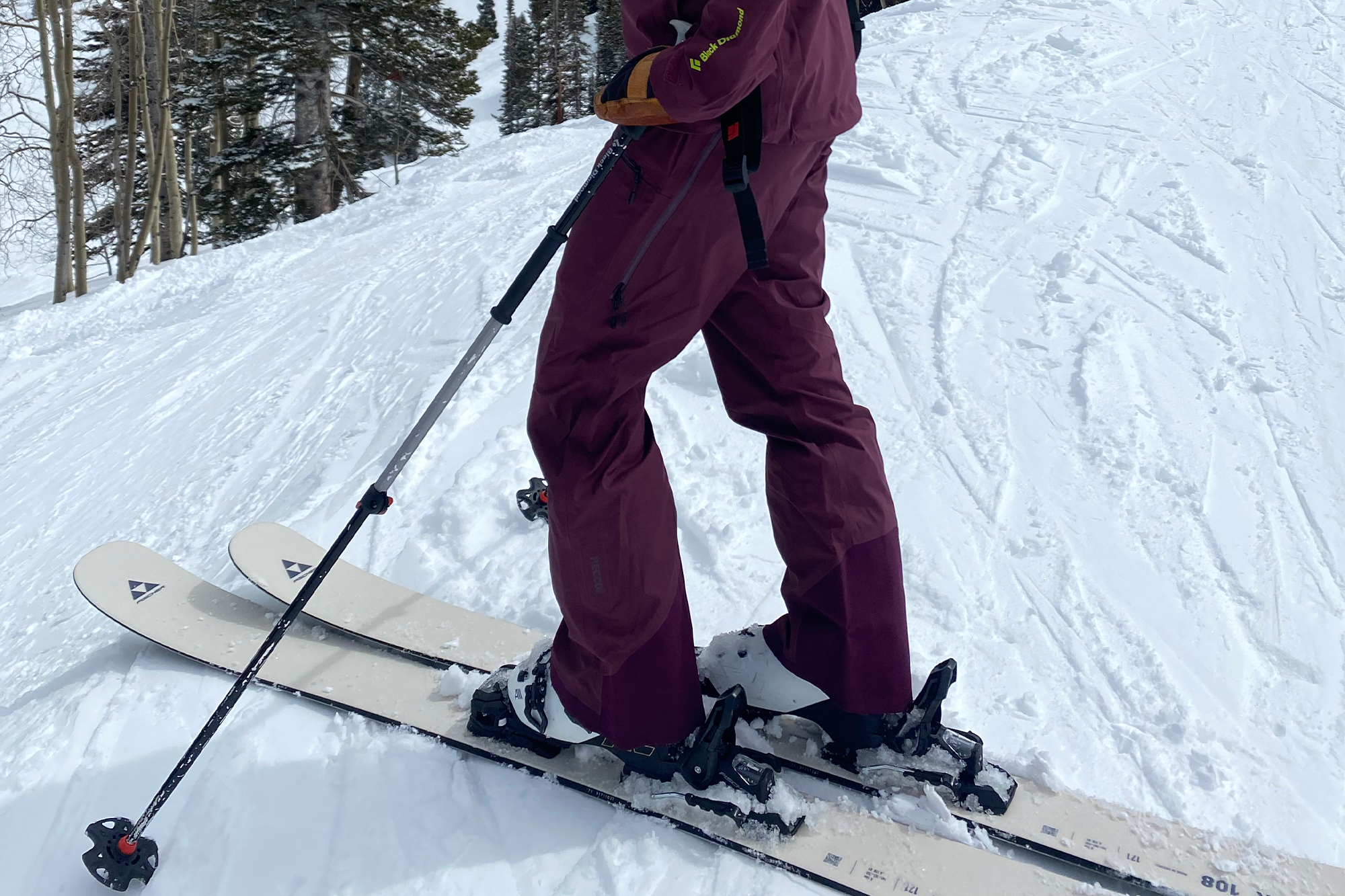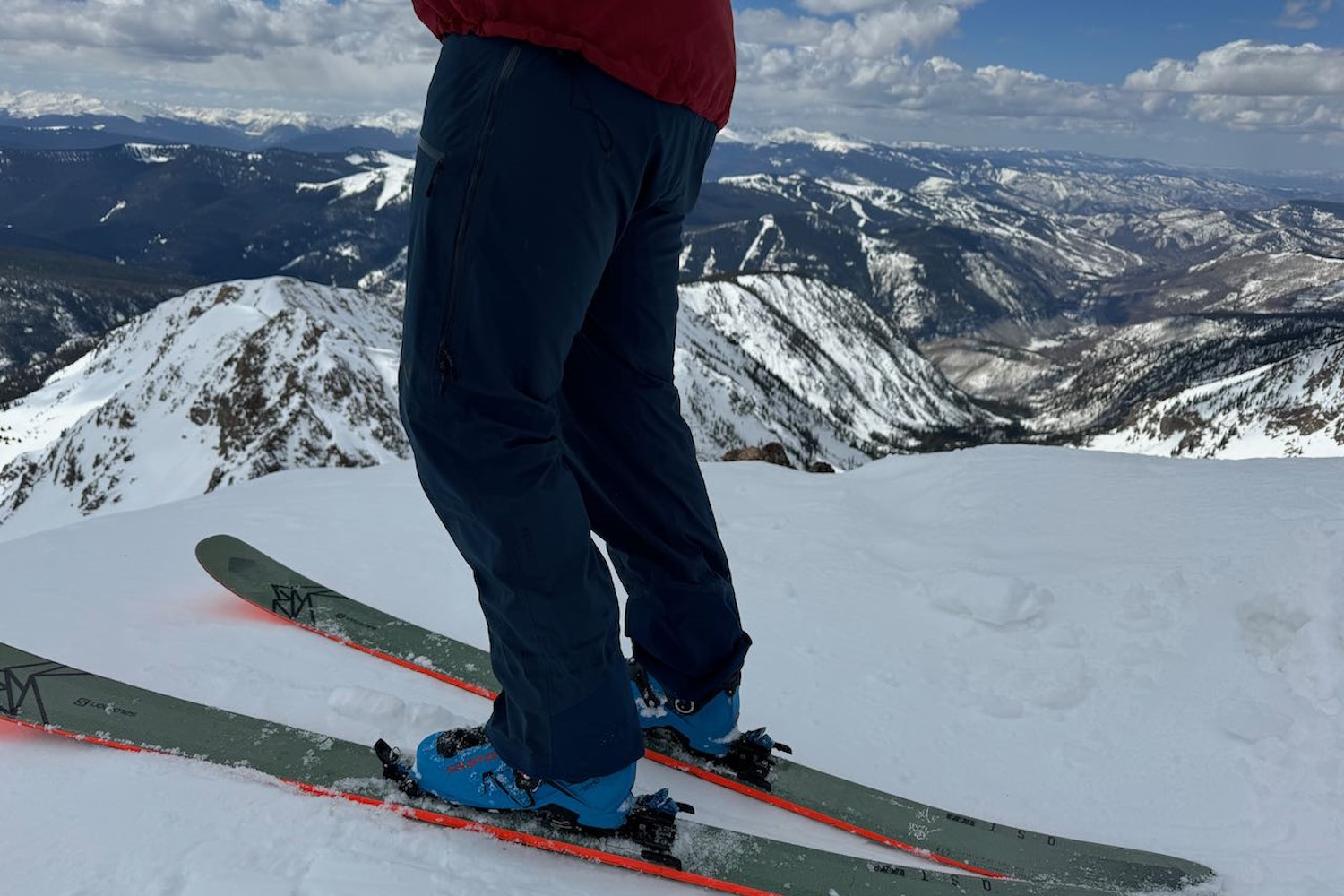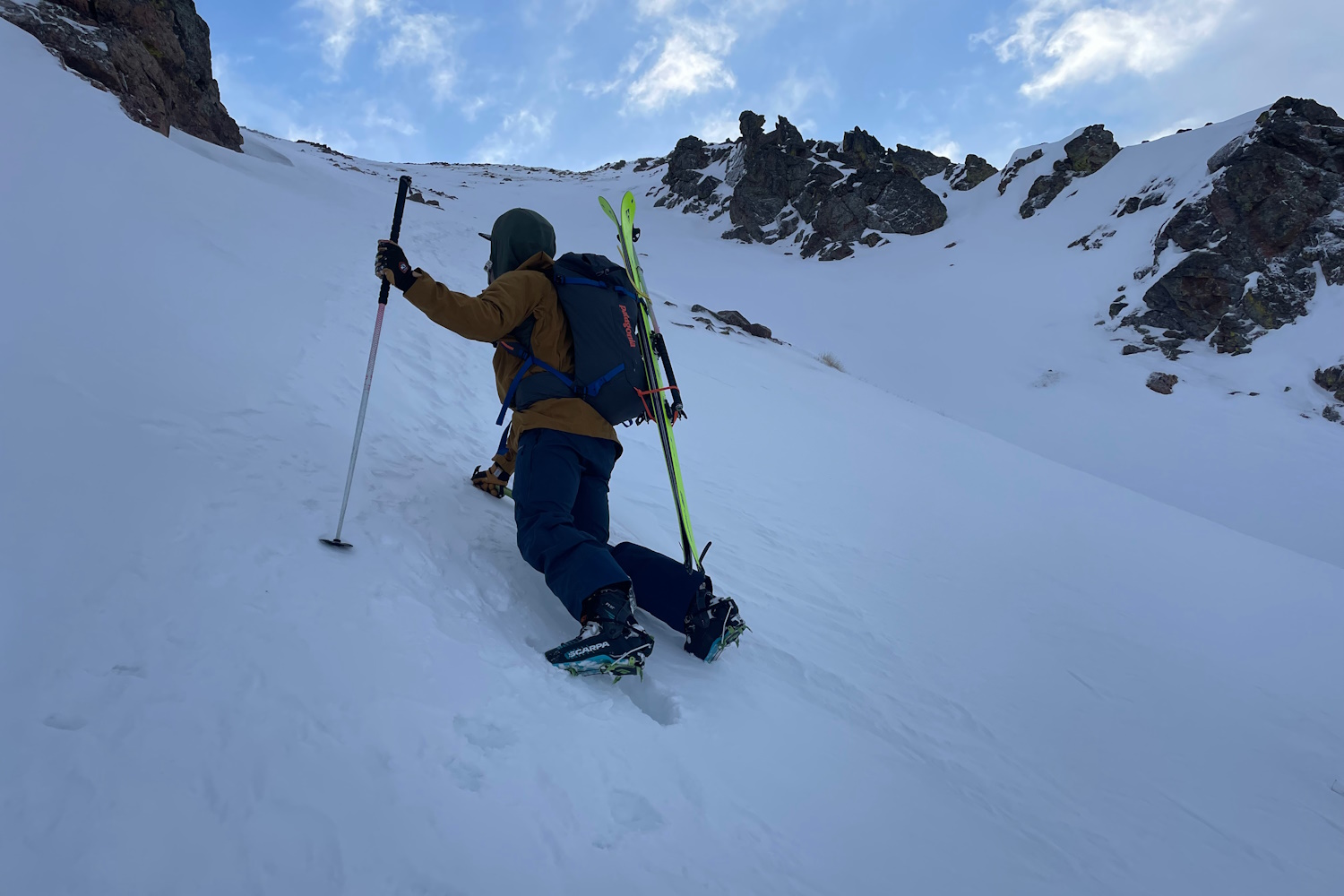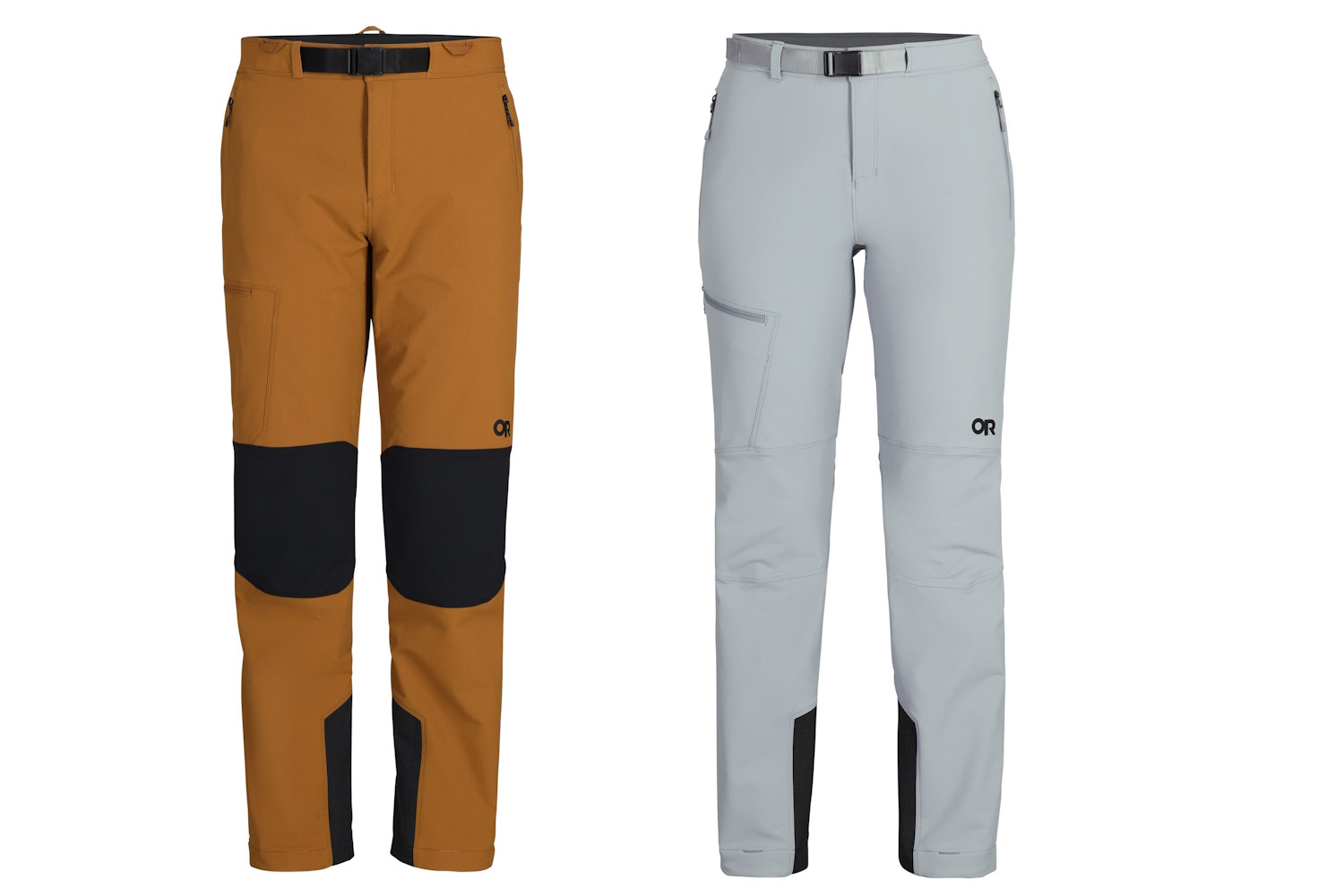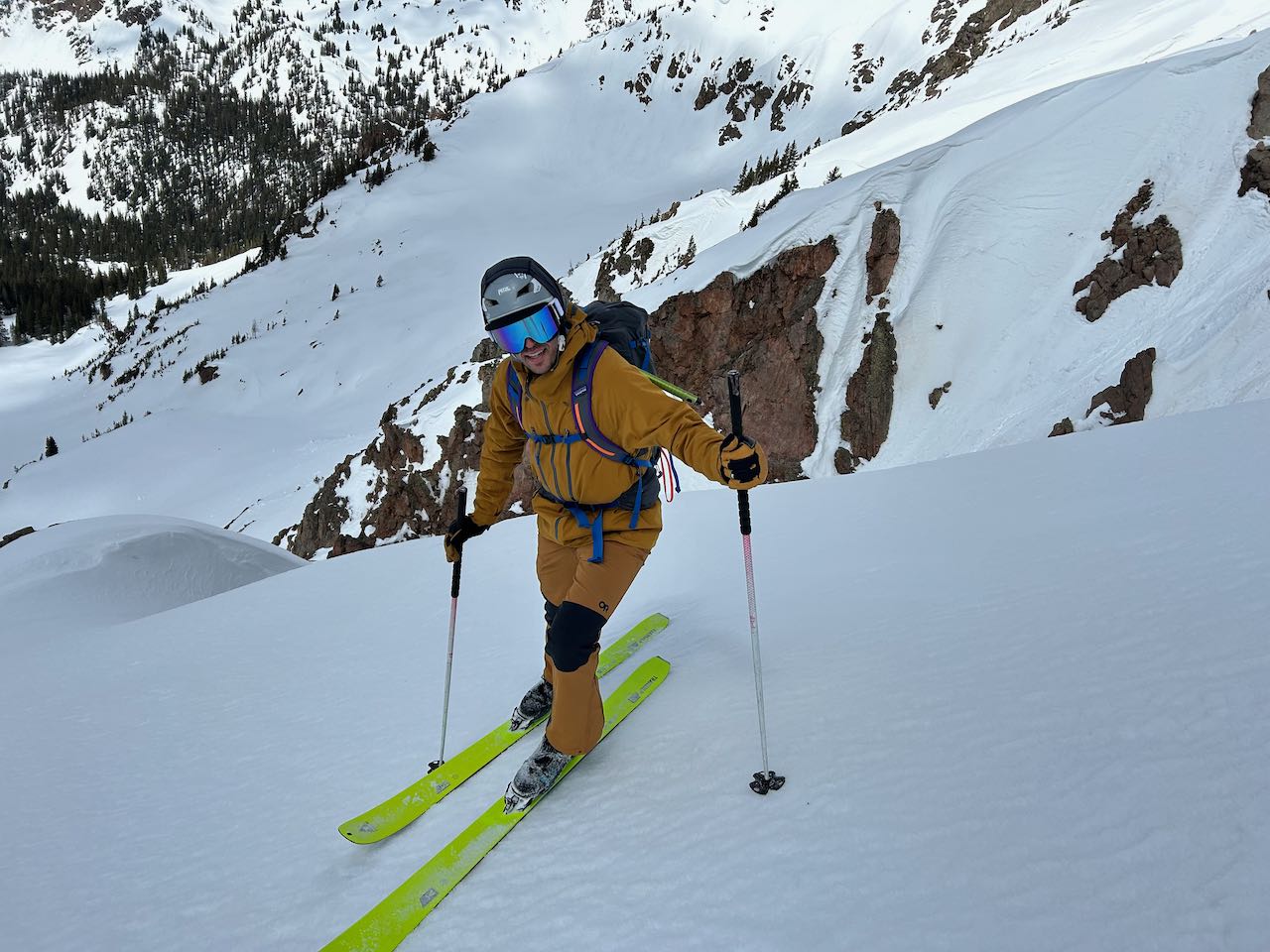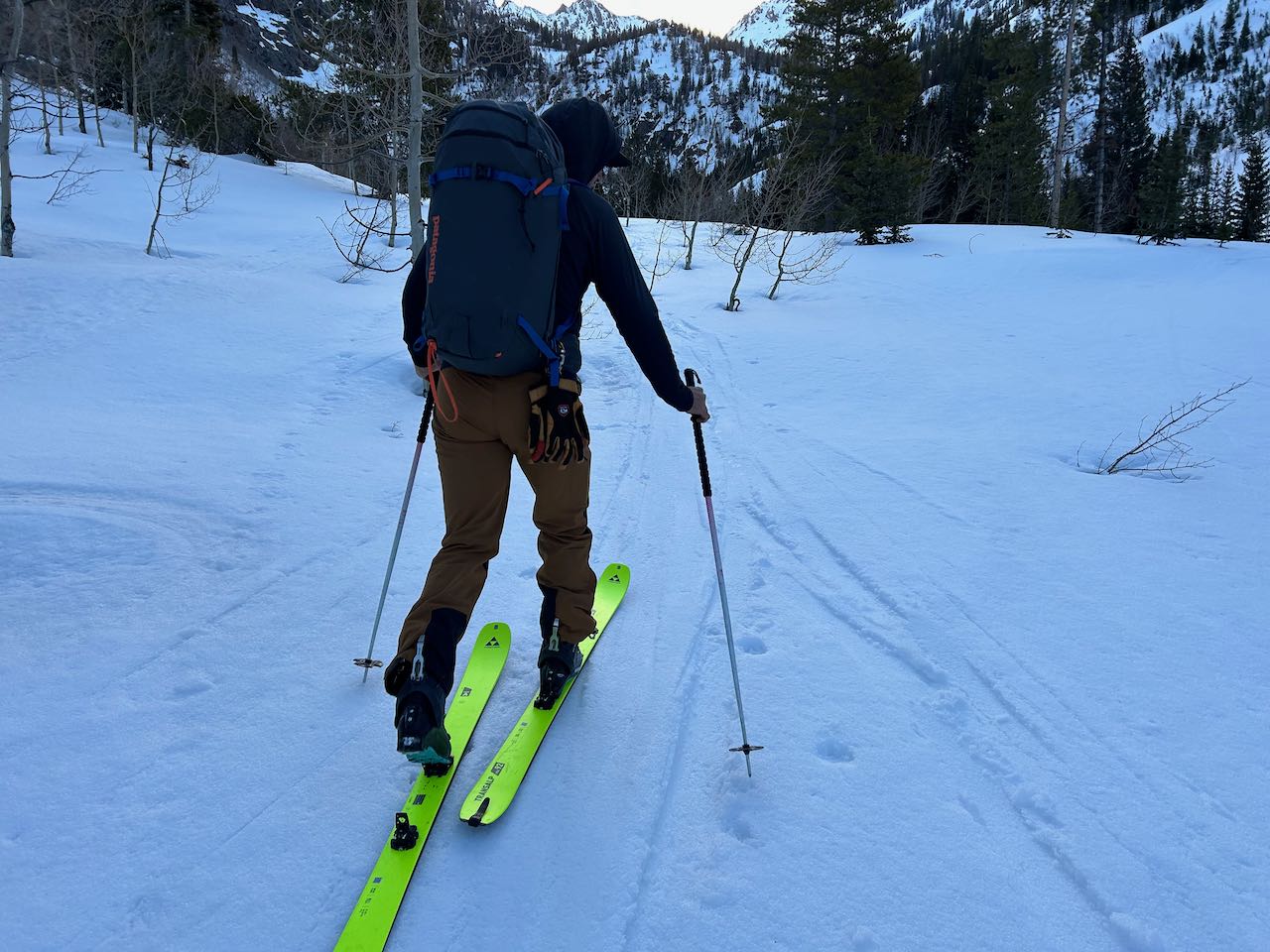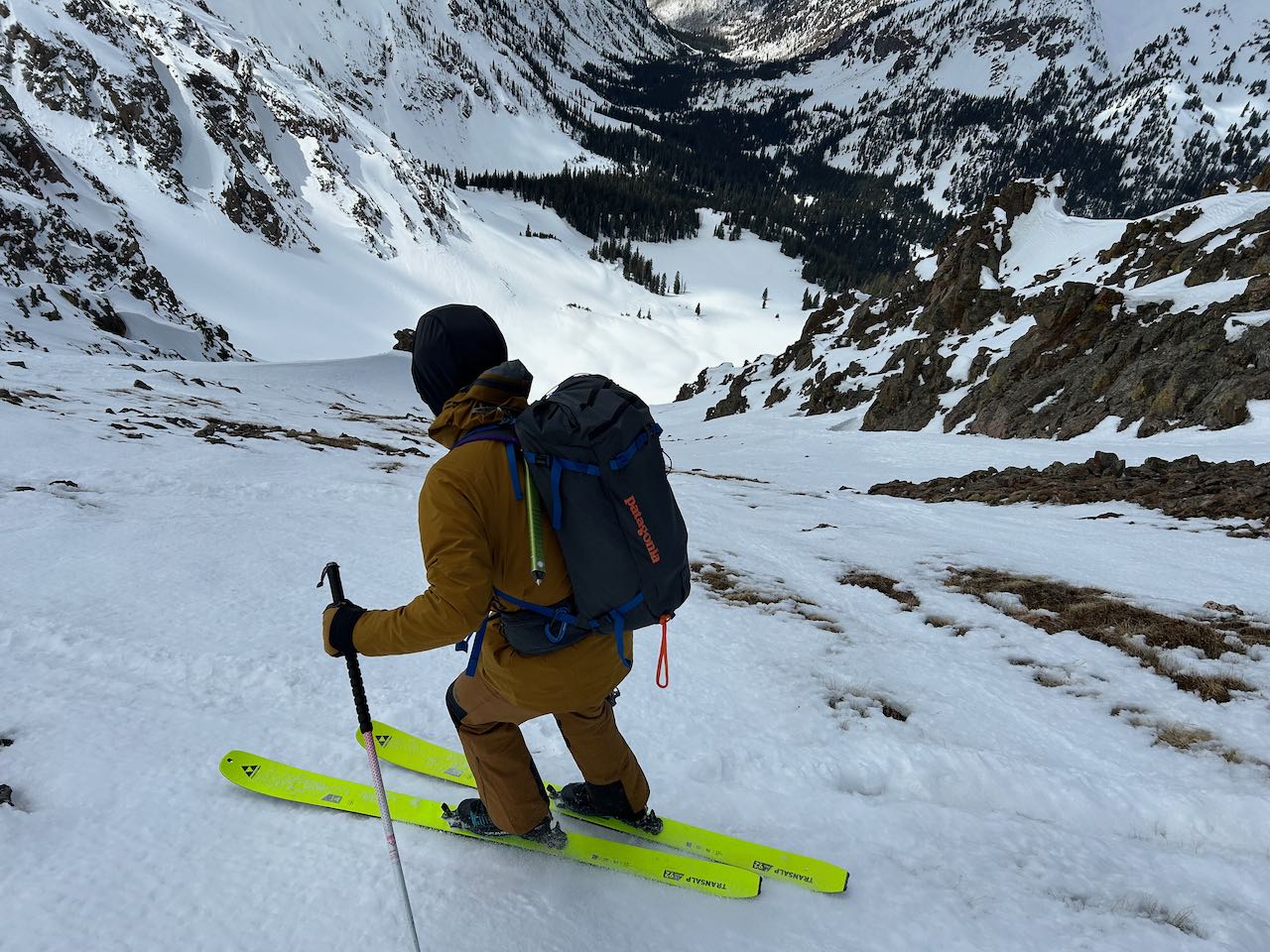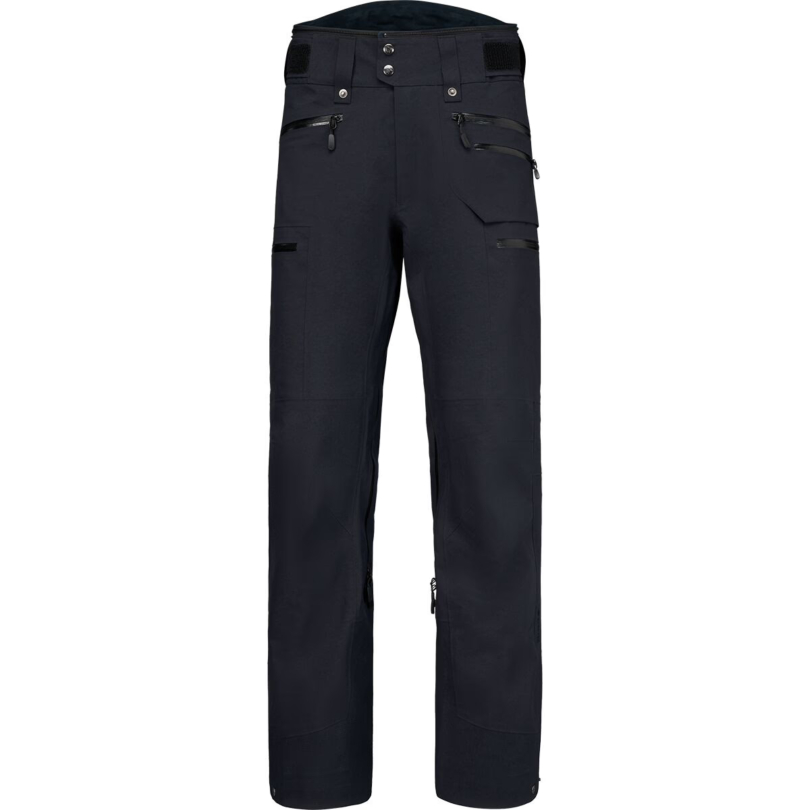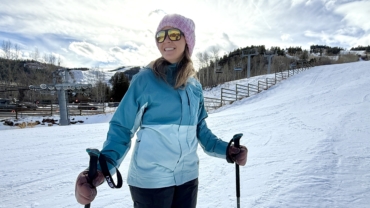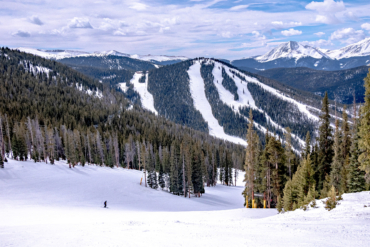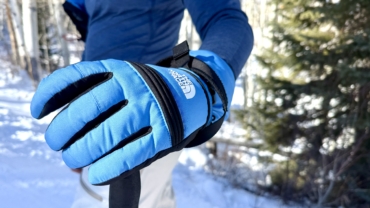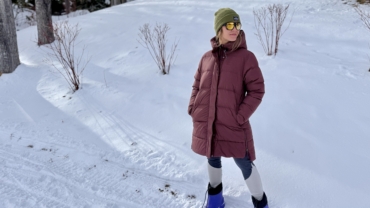Finding the right ski pants shouldn’t feel harder than skiing a double-black in a whiteout — but sometimes it does. Between funky fits, awkward pockets, and pants that look great but leave you freezing, the hunt can get real.
So we hit the slopes in everything from powder-blinding storms to sunny spring laps to find ski pants that actually deliver. Our favorites include breathable shells, toasty insulated sets, and backcountry-ready designs that fit a range of skiers and budgets.
In our guide, you’ll find moderately-priced pants like the Flylow Chemical ski pants that serve skiers well most days of the season. Other pairs are hybrid designs for backcountry use, including the Rab Khroma Diffuse GORE-TEX ski pants, that have great breathability, range of motion, and are a bit pricier.
We field test all winter long, and we’ve updated this guide 15 times since 2021.
Editor’s Note: We updated our Ski Pants buyer’s guide on January 12, 2026, with the Helly Hansen Emiko Shell Pant, a premium shell with a movement-oriented fit sans the sticker shock.
Read more of our favorite picks in our Best Ski Pants for Men roundup.
The Best Ski Pants of 2026
Flylow Chemical Pants
-
Weather Protection
9.5
-
Fit and Mobility
9.0
-
Durability and Construction Quality
9.5
-
Breathability and Ventilation
8.9
- Fit: Regular with short and long options
- Material: Polyester with 3-layer waterproof breathable membrane
- Waterproof Rating (mm): 20K
- Breathability (g): 20K
- Insulation: None
- Sustainable Features: PFAS-Free DWR
Pros
- Breathable and protective
- Super tough
- Great price
- Well ventilated
Cons
- Could use a thigh pocket
- Restrictive for ski touring
The North Face Freedom Pants – Men’s
-
Weather Protection
9.0
-
Fit and Mobility
8.9
-
Durability and Construction Quality
7.0
-
Breathability and Ventilation
7.0
- Fit: Regular
- Material: 100% recycled nylon, 2-layer DryVent construction, non-PFC DWR
- Waterproof rating (mm): Not rated
- Breathability (g): Not rated
- Insulation: None
- Sustainable features: Recycled nylon and polyester
Pros
- Great value
- Waterproof
- Good fit and aesthetic
Cons
- Too restrictive for ski touring
- Not particularly breathable
- Not the most durable construction
The North Face Insulated Freedom Pants
-
Weather Protection
9.0
-
Fit and Mobility
8.9
-
Durability and Construction Quality
7.0
-
Breathability and Ventilation
7.0
- Fit: Slim
- Material: 100% recycled nylon, 2-layer DryVent construction, non-PFC DWR
- Waterproof Rating (mm): Unknown
- Breathability (g): Unknown
- Insulation: Synthetic
- Sustainable Features: Heatseeker Eco insulation is made from 90% post-consumer recycled polyester, material is 100% recycled nylon, 100% recycled polyester liner
Pros
- Great value
- Durable
Cons
- Not very breathable
- Mildly restrictive
Eddie Bauer Men’s Chair Six Shell Pants
-
Weather Protection
9.0
-
Fit and Mobility
7.0
-
Durability and Construction Quality
7.0
-
Breathability and Ventilation
7.5
- Fit: Regular, straight
- Material: 3-layer WeatherEdge waterproof stretch fabric
- Waterproof rating (mm): 20K
- Breathability (g): 20K
- Insulation: None
- Sustainable features: None
Pros
- Budget friendly
- Material acts like a hardshell, moves like a softshell
- Sealed seams
Cons
- No dedicated beacon pocket
Patagonia Men’s Storm Shift Pants
-
Weather Protection
9.0
-
Fit and Mobility
9.0
-
Durability and Construction Quality
8.5
-
Breathability and Ventilation
8.9
- Fit: Regular
- Material: 2-layer GORE-TEX PFC-free ePE membrane and fabric, 150-denier 100% recycled polyester, 100% recycled polyester tricot mesh liner
- Waterproof rating (mm): 20K
- Breathability (g): 20K
- Insulation: None
- Sustainable features: 100% recycled shell and liner, PFC-free construction and DWR finish, Fair Trade certified
Pros
- Adjustable waist helps achieve the perfect fit
- Comfortable and cozy
- RECCO reflector
- Offers short (30") or regular (32") lengths from XS to XXL
Cons
- Very relaxed fit might be too baggy for some skiers
- XXL is in high demand and there is a waitlist
Rab Khroma Kinetic Pants
-
Weather Protection
9.5
-
Fit and Mobility
9.0
-
Durability and Construction Quality
9.1
-
Breathability and Ventilation
9.0
- Fit: Regular
- Material: Polyamide and elastane blend, 3-layer waterproofing with polyurethane membrane
- Waterproof Rating (mm): 20K
- Breathability (g): 25K
- Insulation: None
- Sustainable Features: Fluorocarbon-free DWR
Pros
- Good freedom of movement
- Versatile
- Nice looking
Cons
- Minimal room in the crotch area
Mountain Hardwear Cloud Bank Pants
-
Weather Protection
9.0
-
Fit and Mobility
7.9
-
Durability and Construction Quality
8.0
-
Breathability and Ventilation
8.0
- Fit: Standard, loose fitting
- Material: GORE-TEX ePE 150D 2-layer
- Waterproof rating (mm): 28K
- Breathability (g): 25K
- Insulation: 20D Nylon Taffeta lining
- Sustainable Features: Recycled polyester
Pros
- Very waterproof
- Moderate warmth
- Roomy, accommodating fit
- Relatively affordable for GORE-TEX
Cons
- Loose cut will not fit everyone’s tastes
- Relatively short inseams, but offered in three lengths
More Slope-Ready Ski Pants
Indeed, our top ski pants are worn the majority of the ski season. But we keep a handful of semi-finalists ready to pull on — just in case the conditions align. These designs check the boxes for durability, fit, and pockets.
-
Weather Protection
9.0
-
Fit and Mobility
5.0
-
Durability and Construction Quality
8.0
-
Breathability and Ventilation
6.0
- Fit: Regular
- Material: 3-layer Polyester HELLY TECH Professional
- Waterproof rating: 20K
- Breathability: 20K
- Insulation: None
- Sustainable features: None
Pros
- Insulated pocket for a phone
- Very durable waterproof fabric
- Belt loops for simple security
- Protective gaiters
Cons
- Lackluster mobility and articulation
- Short inseam
-
Weather Protection
9.5
-
Fit and Mobility
9.4
-
Durability and Construction Quality
9.0
-
Breathability and Ventilation
7.9
- Fit: Regular
- Material: PeakProof 3L Plain Weave 150D 100% Recycled Polyester
- Waterproof Rating (mm): 20K
- Breathability (g): 10K
- Insulation: None
- Sustainable Features: Recycled fabric
Pros
- Solid value
- Protective waterproof fabric
- Streamlined, durable design
- Integrated belt is functional and removable
Cons
- Not the most breathable
-
Weather Protection
9.2
-
Fit and Mobility
9.0
-
Durability and Construction Quality
9.1
-
Breathability and Ventilation
9.0
- Fit: Regular
- Material: 80D 3L GORE-TEX ePE
- Waterproof rating (mm): 28,000
- Breathability (g): 20,000
- Insulation: None
- Sustainable features: PFAS free, Bluesign approved materials
Pros
- GORE-TEX ePE is dependably waterproof and durable
- Belt loops plus an effective integrated belt
- Versatile for resort or backcountry
Cons
- A bit restrictive around the hips and seat region
- Expensive
-
Weather Protection
9.5
-
Fit and Mobility
9.4
-
Durability and Construction Quality
9.5
-
Breathability and Ventilation
8.9
- Fit: Regular (not athletic nor baggy)
- Material: 3-layer GORE-TEX shell with 100% recycled face fabric
- Waterproof Rating (mm): 28K
- Breathability (g): Unavailable. But the brand rates the RET (resistance of evaporation) at >9, which is good (0-6 is excellent)
- Insulation: None
- Sustainable Features: Recycled face fabric
Pros
- Tenacious, flexible material
- Belt loops or external integrated velcro belt can help cinch waist
- Spacious enough pockets
Cons
- Pricier choice
- If you need more pockets, opt for full-chest bibs
- Lacks RECCO
-
Weather Protection
9.0
-
Fit and Mobility
7.9
-
Durability and Construction Quality
8.5
-
Breathability and Ventilation
9.0
- Fit: Standard
- Material: BD.Dry 3L waterproof breathable four-way stretch shell fabric with DWR
- Waterproof Rating (mm): 20K
- Breathability (g): 20K
- Insulation: None
- Sustainable Features: None
Pros
- Excellent stretchy waterproof fabric
- Breathable on the skin track
- Versatile for resort or backcountry
- Durable and protective
Cons
- Waist fastening insufficient
- Excessively wide below the knees
-
Weather Protection
8.0
-
Fit and Mobility
9.0
-
Durability and Construction Quality
9.0
-
Breathability and Ventilation
9.0
- Fit: Narrow
- Material: 50% Nylon, 43% Polyester, 7% Spandex 90D Stretch Double Weave
- Waterproof Rating (mm): None. 3-5 CFM Wind Resistance
- Breathability (g): Not Available
- Insulation: None
- Sustainable Features: Bluesign approved
Pros
- Versatile fit for outdoor activities
- Great movement and stretch
- Durable materials and build
- Solid integrated belt
Cons
- Not very water resistant
- No internal gaiters to seal out snow
-
Weather Protection
9.6
-
Fit and Mobility
9.5
-
Durability and Construction Quality
9.6
-
Breathability and Ventilation
9.0
- Fit: Regular
- Material: 200D partially recycled face fabric with GORE-TEX Pro membrane
- Waterproof Rating (mm): 28K
- Breathability (g): Unknown
- Insulation: None
- Sustainable Features: More than 50% of the synthetic fibers are recycled, Bluesign certified and Oeko-Tex certified fabric
Pros
- Excellent waterproofing
- Durable
- High-quality zippers
Cons
- Not the most breathable
- Very expensive
Ski Pants Comparison Chart
Scroll right to view all of the columns: Price, Fit, Material, Insulation.
| Ski Pants | Price | Fit | Material | Insulation |
| Flylow Chemical | $380 | Regular | Polyester with 3L Intuitive waterproof breathable membrane | None |
| Eddie Bauer Chair Six | $229 | Regular | 3L WeatherEdge waterproof stretch fabric | None |
| Helly Hansen Emiko | $260 | Baggy | 3L Polyester HELLY TECH Professional | None |
| Patagonia Storm Shift | $399 | Regular | 2L GORE-TEX PFC-free ePE membrane and fabric, 150-denier 100% recycled polyester, 100% recycled polyester tricot mesh liner | None |
| Black Diamond Recon LT | $350 | Regular | BD.Dry 3L waterproof breathable four-way stretch shell fabric with DWR | None |
| The North Face Insulated Freedom | $200 | Regular | Nylon blend with 2L DryVent construction | Heatseeker Eco 90% post-consumer recycled polyester |
| Arc’teryx Sabre | $600 | Regular | 80D 3L GORE-TEX ePE | None |
| Outdoor Research Cirque III | $179 | Athletic | 50% Nylon, 43% Polyester, 7% Spandex 90D Stretch Double Weave | None |
| Rab Khroma Diffuse | $450 | Regular | 3L GORE-TEX shell with 100% recycled face fabric | None |
| Stio Environ | $429 | Regular | PeakProof 3L membrane | None |
| Rab Khroma Kinetic | $340 | Regular | Polyamide and elastane blend, 3L waterproofing with polyurethane membrane | None |
| The North Face Freedom | $170 | Regular | 100% recycled nylon, 2L DryVent construction, non-PFC DWR | None |
| Mountain Hardwear Cloud Bank GORE-TEX | $375 | Regular | 2L GORE-TEX ePE fabric | None |
| Norrona Lofoten GORE-TEX Pro Plus | $999 | Regular | 200D partially recycled face fabric with GORE-TEX Pro membrane | None |

How We Tested Ski Pants
Our Expert Testers
Gear tester Bergen Tjossem is a ski fanatic born, raised, and currently based in Vail, Colo., at the foot of his favorite mountain range, the Gore. Tjossem is a known destroyer of gear and a sharp critic of apparel breathability and fit.
Editor Will Brendza is based in Colorado, where he tests apparel at various ski resorts and in the backcountry.
In southern Utah, Albert Kim cut his teeth in the snowsports industry as a ski builder for Wagner Custom Skis in Telluride, Colorado. Other contributors have included Ryan Baker and Austin Beck-Doss.
GearJunkie Senior Editor Morgan Tilton specializes in snowsports and has lived in Colorado’s Rocky Mountains for more than three decades, where she grew up, learned to ski at her home mountain of Telluride Ski Resort, and lives today in Crested Butte. She’s been an outdoor industry journalist, including covering snow sports, for more than a decade.
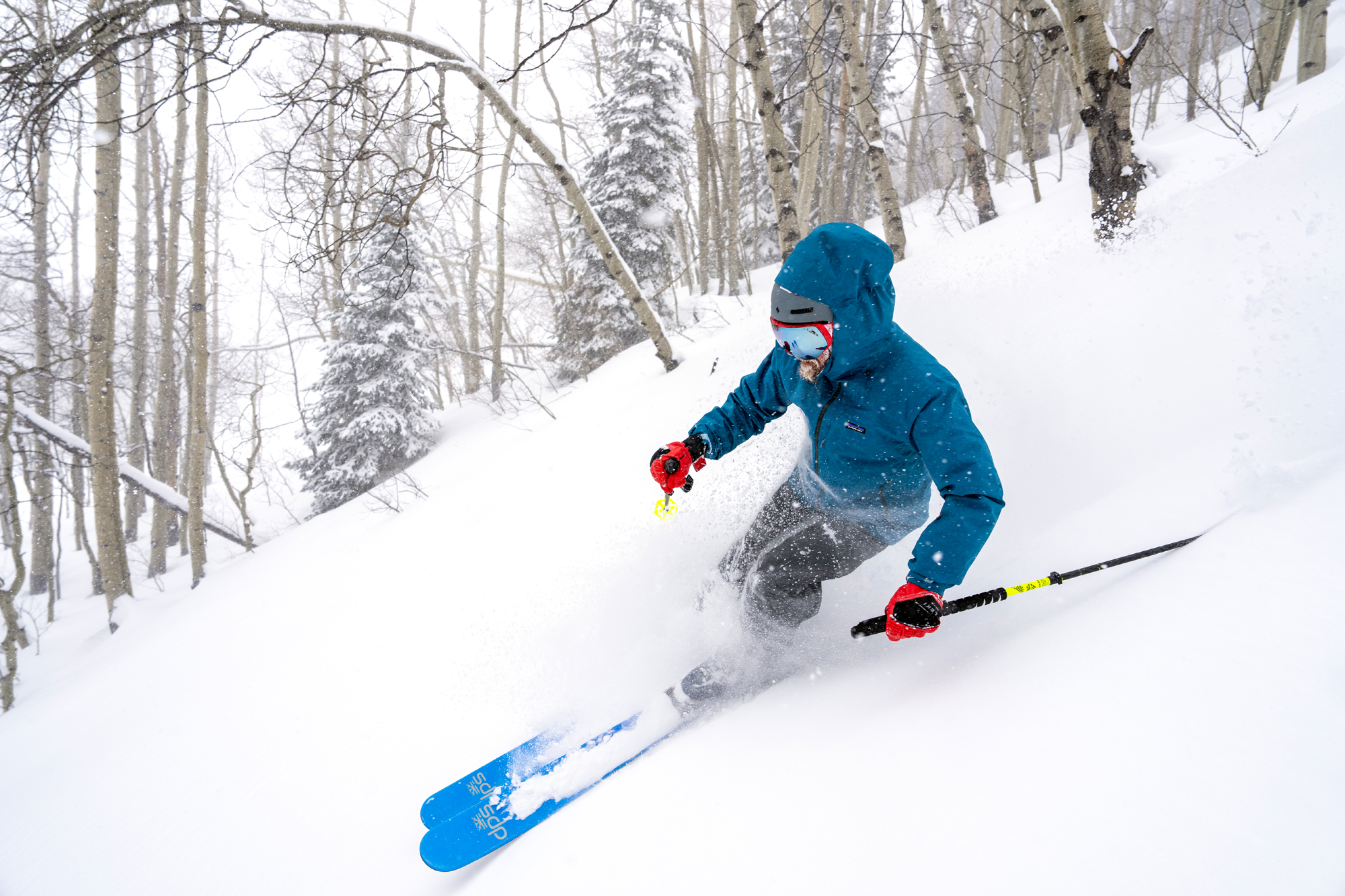
Our Testing Grounds
Tjossem tests gear primarily in Colorado’s backcountry but also on the resort’s ice climbing routes and deep days. He has clocked in nearly 150,000 feet of human-powered backcountry vert in 2023-2024, testing this season’s new gear and 25 days at the resort.
Despite the desert environment of Southern Utah, Kim regularly skis at Brian Head Resort and the surrounding backcountry near an elevation of 10,000 feet. Constantly changing conditions have Kim putting his outerwear through its paces, which demands top-tier protection and durability.
Tilton manages nearly two dozen gear testers nationwide and field tests between the desk shuffle. So far in 2025, she’s tested apparel for 165 hours across 44 days. In 2024, she tested apparel for 265 hours throughout 78 days of recreation from the ski area to the backcountry — excluding countless hours of shoveling. In 2023, she tested gear for 114 hours across 35 days.
The GearJunkie team meets for an annual on-snow test week to grind out turns and swap notes, including two previous gatherings at Crested Butte Mountain Resort, which is known for its expert terrain.
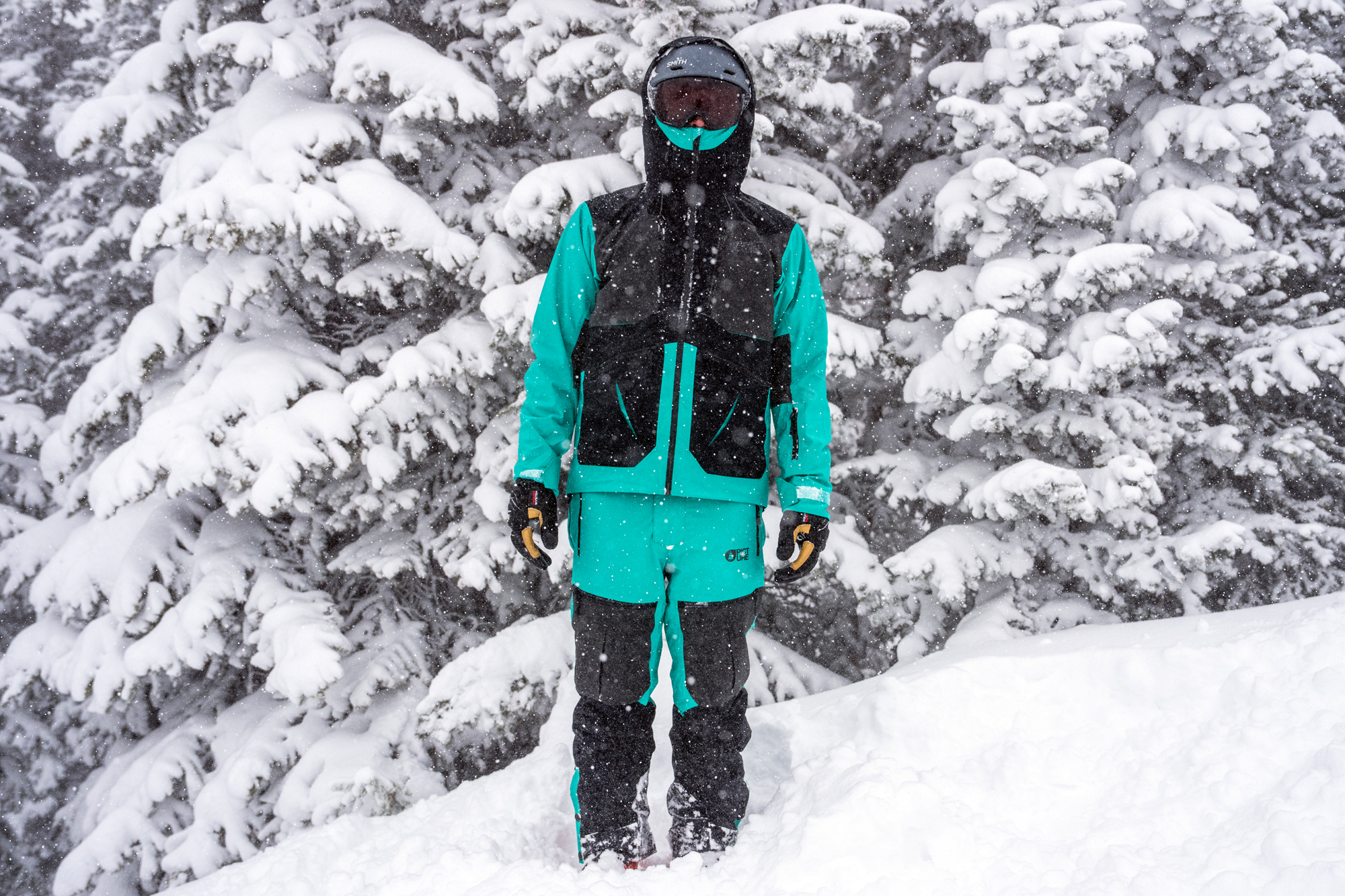
Our Testing Process
We consider fit, durability, waterproofing, breathability, and overall value when testing ski pants. In recent years, we’ve tested dozens of ski pants in just about every kind of snow and weather condition.
As new snow pants hit the market, we’ll be sure to give them a thorough assessment before including them in this list. Our roundup consists of the best ski pants on the market at any given time.
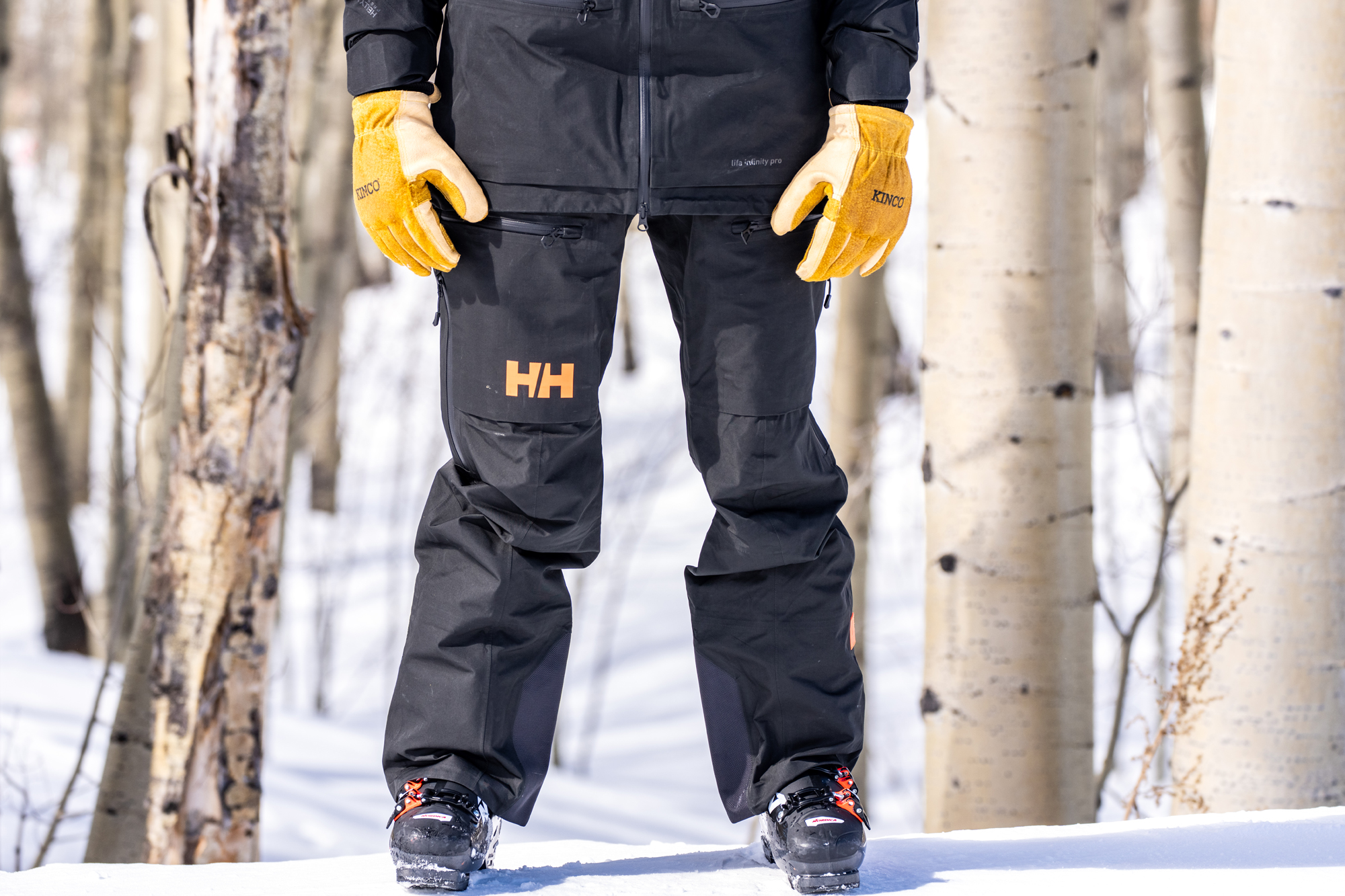
Our Ski Pants Rating System
We score each pair of ski pants on a 1–10 scale for Weather Protection, Fit and Mobility, Durability and Construction Quality, plus Breathability and Ventilation.
While considering weather protection, we take into account how the pants shield moisture and wind. Fit and mobility examines how effortlessly the pants move with us while going uphill, downhill, sitting, and bending over, as well as if there are any snag points. Durability and construction quality considers the overall material, stitching, hems, waistband, zippers, and pockets. The breathability and ventilation takes a look at how effectively the design releases moisture and heat during high-output activity, including the material and mechanical vents.
The Overall Rating is based on contextual, editorial judgment, and the complex user experience across various scenarios and conditions.
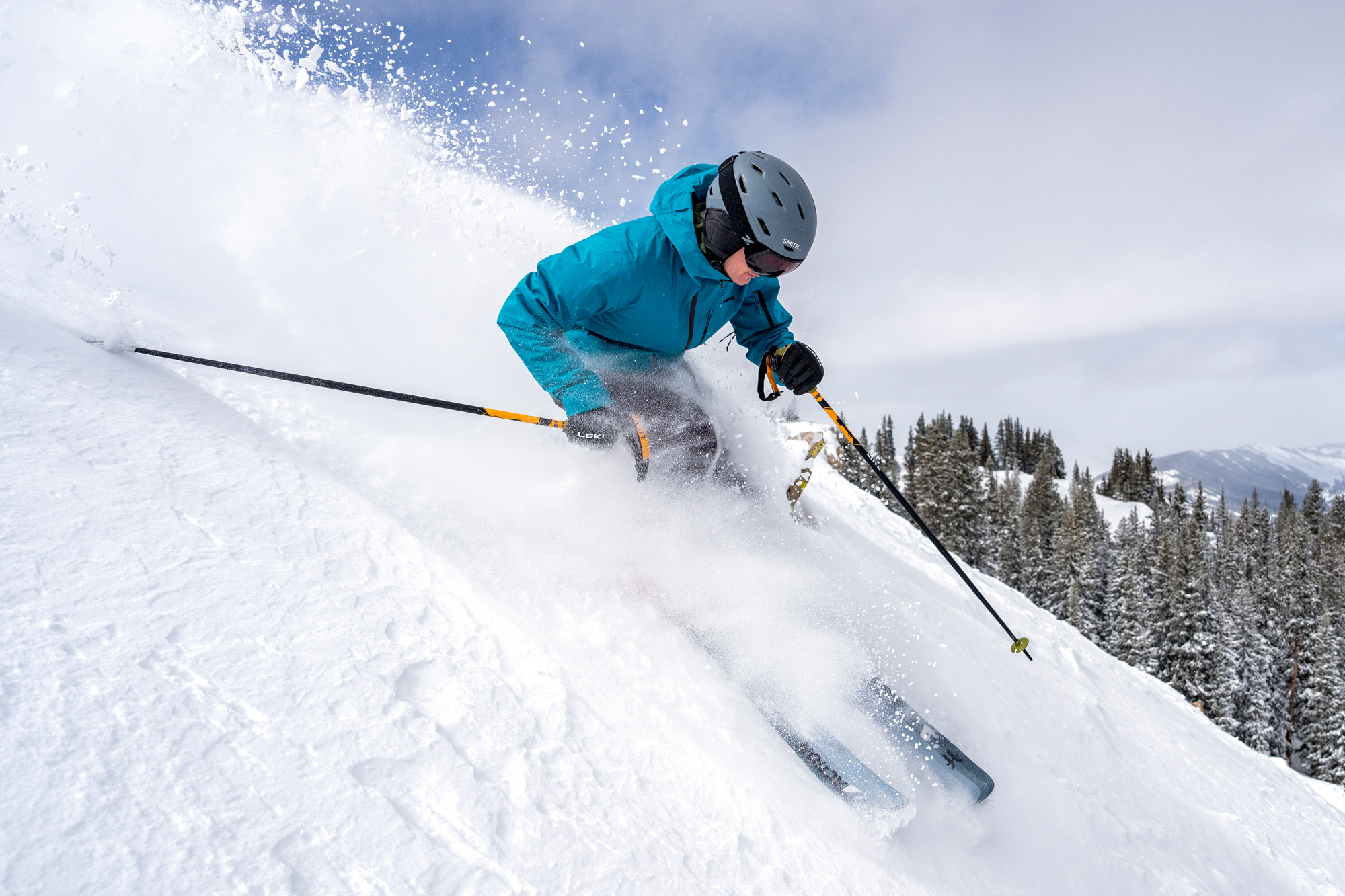
Buyers Guide: How to Choose Ski Pants
Ski pants come in a variety of styles. Some options prioritize burly weather resistance for resort-oriented skiing, while others are geared toward breathability, minimal weight, and restriction-free movement for ski touring.
Ski Pants vs. Ski Bibs
To ski in pants or a bib? This fundamental outerwear question divides the skiing world into two camps. Ski pants need little explanation, as they’re worn just like any other pair of pants — waist-high and secured with a button.
The primary downside of wearing pants while skiing is that cold and snow can find its way up the back of your jacket or down your pants, especially during a fall. Some of the best standard-style ski pants we’ve included are The North Face Insulated Freedom and the Flylow Chemical.
Enter ski bibs. With a high waistline held up by shoulder suspension straps, bibs eliminate the fatal flaw of ski pants. When skiing deep powder, the joy of knowing you won’t get snow down your pants offers valuable peace of mind. If you’ve never skied in a bib, just know they take a little getting used to. Also, bibs tend to be warmer than pants, so they may not be the best choice for those balmy spring days.
The ski bibs versus ski pants debate is even sharper in the backcountry. One of our testers runs too warm to wear bibs in the backcountry, even on deep powder days. Others appreciate a little extra warmth.
Ski Pant Styles: Resort vs. Backcountry
While many ski pants are versatile enough for resort and backcountry skiing, certain styles are better suited for one setting.
For in-bounds skiing, we recommend pants with burly fabric, reliable waterproofing, and a semi-relaxed fit that allows room for layers underneath since you won’t often be traveling uphill while resort skiing, it’s generally okay to wear pants that mildly restrict hiking movement, as well as insulated pants to help you stay warm on the lift ride or in the lift line.
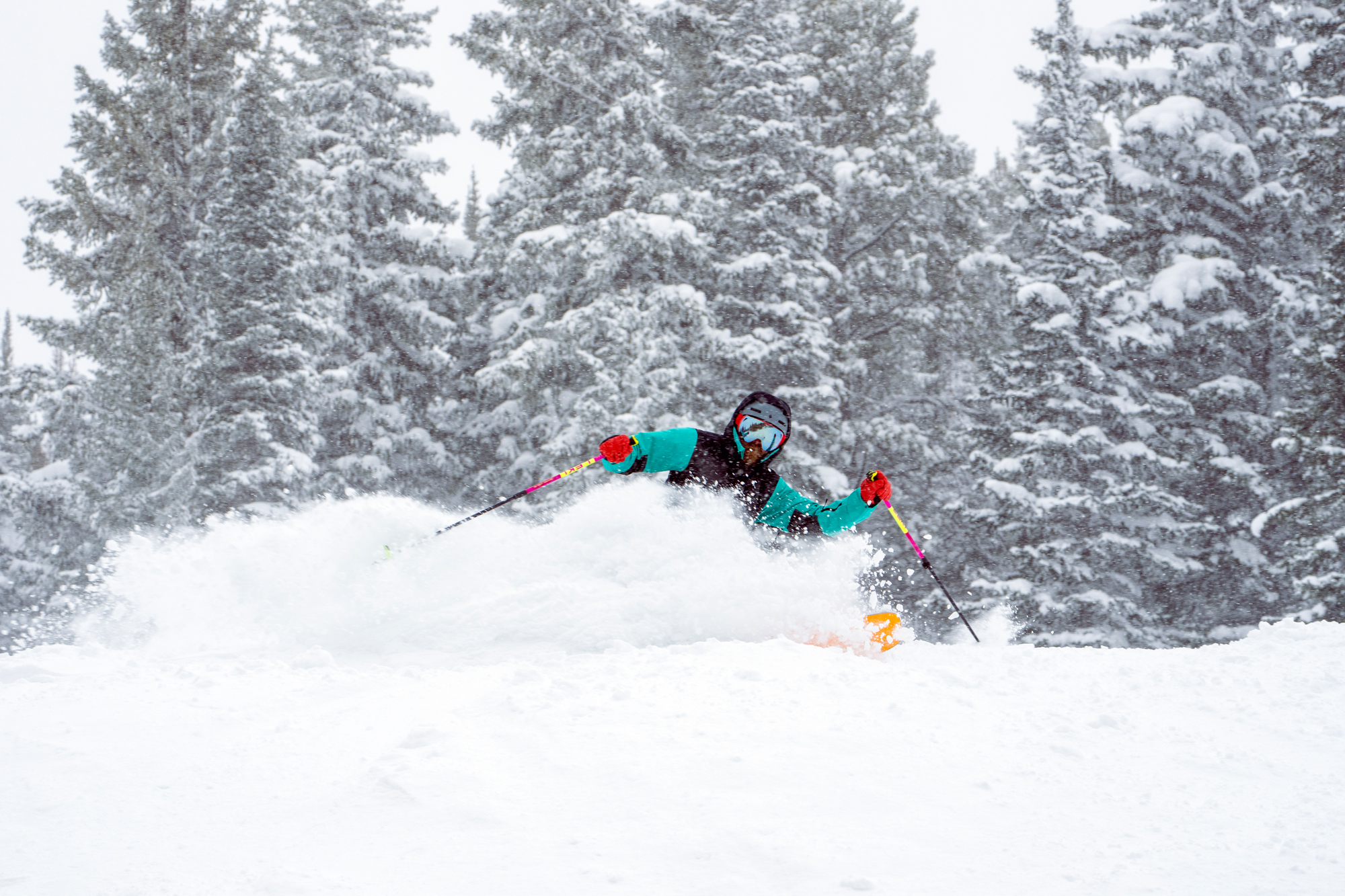
Our favorite ski pants for resort use include The North Face Insulated Freedom Ski Pants. But the articulate knees and pliable materials of the Stio Environ make it an ideal crossover ski pant that excels in the front and backcountry.
Breathability is also an elevated priority in the backcountry. Uphilling or bootpacking can be strenuous, and ample leg vents can help prevent overheating. Wearing a more breathable, highly waterproof textile is also helpful. While a 10K or 15K level of waterproofness is adequate for most ski resort storms, if you’re in the backcountry miles away from the trailhead, you will want 20K of waterproofness or more. Ideally, the breathability matches that number. Fit-wise, backcountry styles tend to be more form-fitting, so there isn’t extra fabric you’re lugging uphill or getting caught when you pull on your heavy ski pack.
Types of Fabric: Hardshell vs. Softshell
There are two traditional significant ski categories of pants: hardshell and softshell. But more and more, we see pants like the Black Diamond Recon LT Stretch Pants that blur the lines between these two types. Major companies, including Arc’teryx and Black Diamond, have been working to create softshell pants that offer plentiful mobility without sacrificing waterproofing.
Choosing between these ultimately depends on personal preference, intended use, and your typical skiing climate. One category is not strictly better or worse than the other.
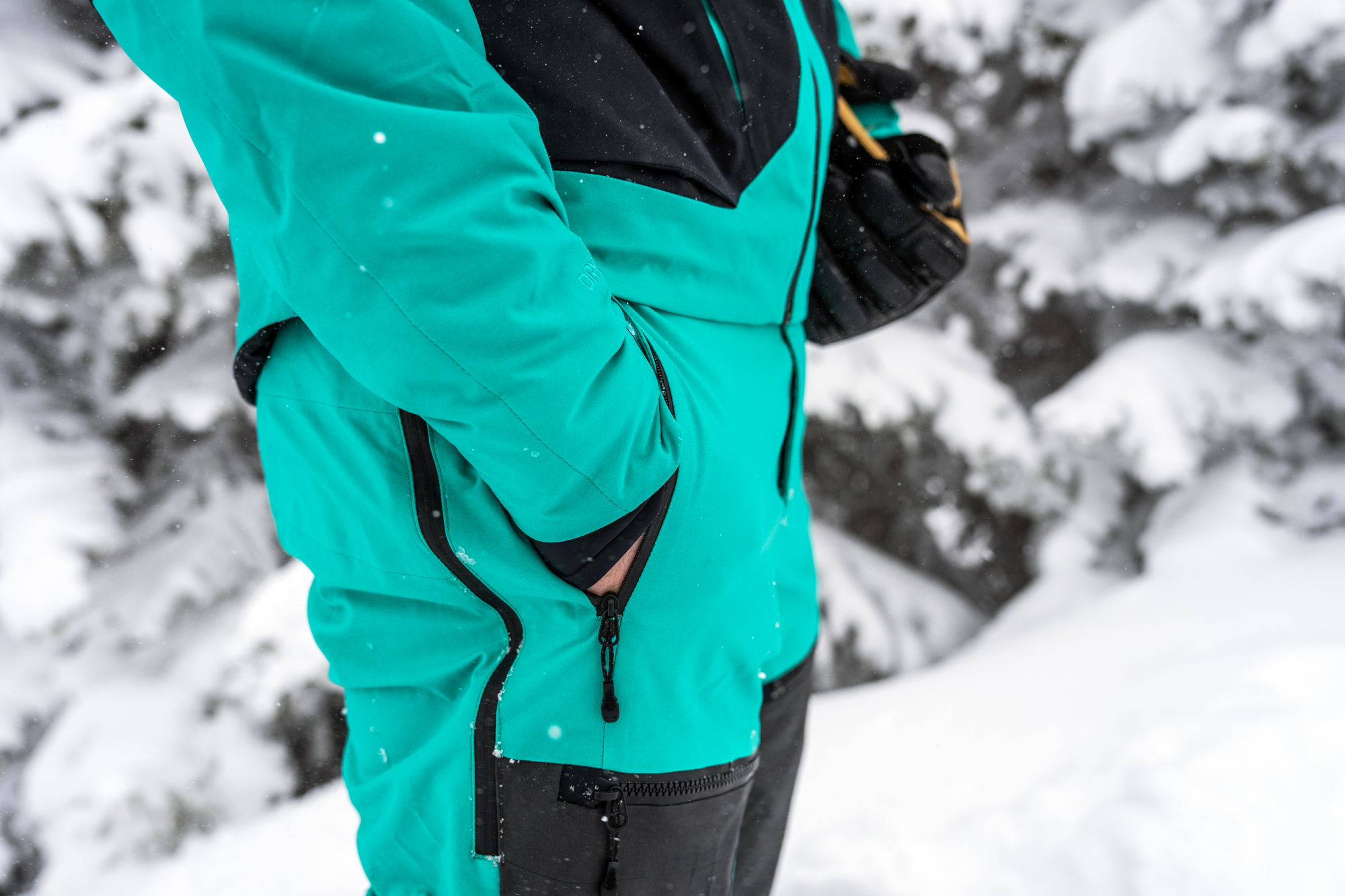
Hardshell Ski Pants
Because hardshell pants are generally more popular and more common than softshells, most of the pants we’ve included on this list are hardshell.
Hardshell ski pants feature a waterproof barrier between you and the surrounding conditions. Just like hardshell jackets, pants in this category often include taped seams and tend to feel thick and hardy to the touch. You can sit down directly on the snow in a good pair of hardshell pants without worrying about a soggy bottom. If you’ll be out in snowy weather for extended periods or live in a place with high water content in the snowpack, you’ll likely want a completely waterproof layer. Skiing in the Pacific Northwest? You’re going to want a hardshell.
The main downside to hardshell pants is that they are not very soft and pliable, which can feel limiting or uncomfortable when making big moves. They’re also crunchier and create more noise. Hardshells are by far the more common choice for resort skiers. The Rab Khroma Kinetic are a fantastic hardshell option on this list.
Softshell Ski Pants
Softshells don’t have that waterproof barrier and, as a result, are generally more breathable. The fabric feels lighter and more flexible, and is often more form-fitting. A softshell might feel good on an ascent in the backcountry, but it won’t offer much insulation or protection from wind, either. Perhaps the best part of softshell pants is the stretch factor.

The stretchy fabric provides constriction-free movement, comfort, and versatility across outdoor activities. For example, the Outdoor Research Cirque III softshell pants easily transition from ski touring to rock climbing to hiking. Some of our testers exclusively use softshell pants in the backcountry.
Lightweight, Chemical-Free Hardshells
Hardshells are also becoming more malleable as textiles become free of PFCs. GORE-TEX spearheaded the movement with the launch of the revolutionary ePE membrane, which is replacing the brand’s membrane technologies, which outdoor industry brands utilize in apparel.
From a skier’s perspective, the fabrics that incorporate this new membrane are becoming super lightweight, smoother, more buttery, softer, and quieter. A robust 3-layer textile now feels like a 2-layer softshell fabric. However, they’re also becoming more susceptible to oil-based stains, whether olive oil from your breakfast burrito or a drippy chairlift. They require more maintenance, including machine washing and drying, to effectively barricade moisture.
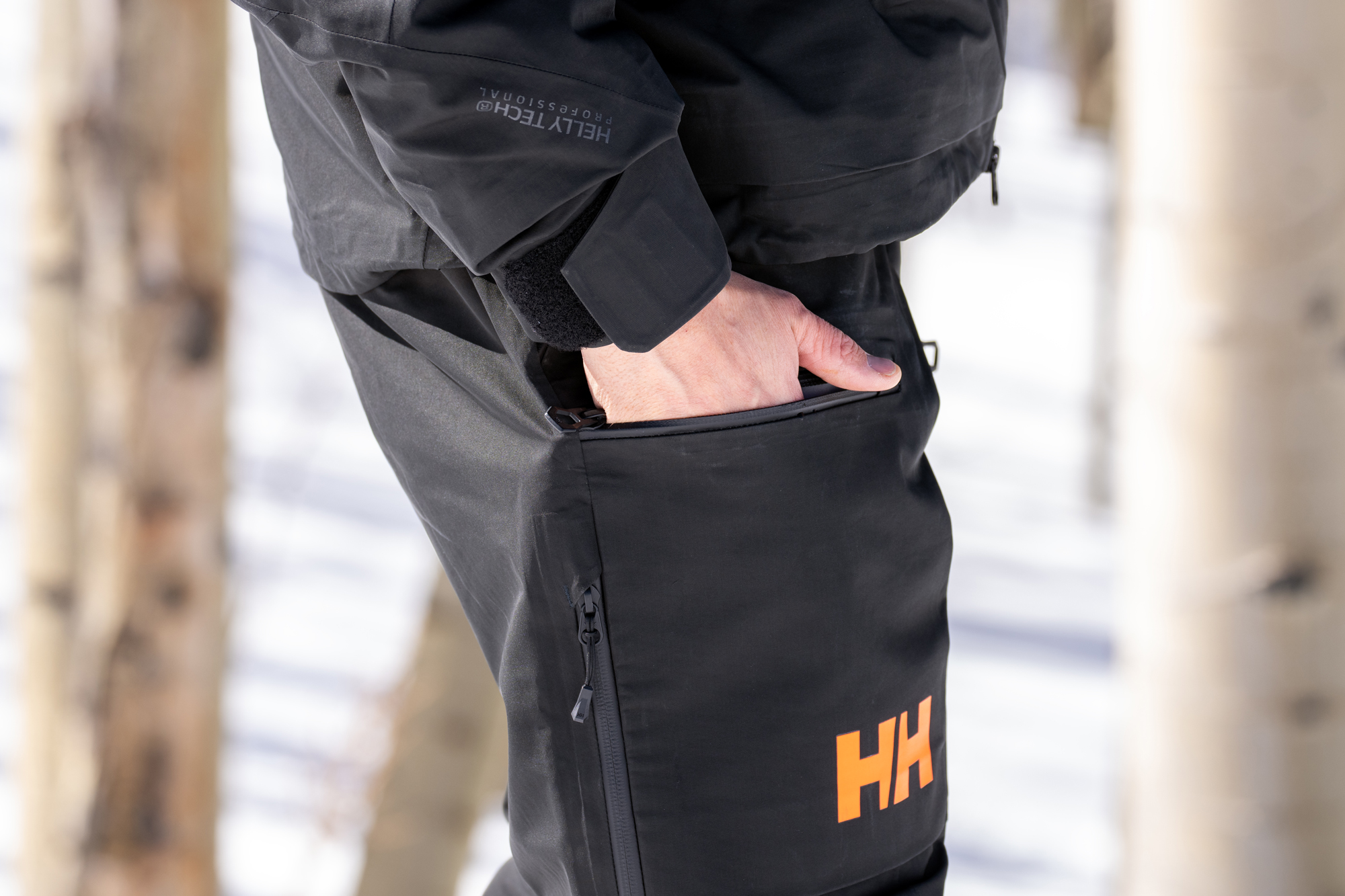
The ePE membrane, which stands for expanded polyethylene, is free of PFCs of Environmental Concern (PFCEC). The membrane launched in 2-layer outerwear in winter 2022. In winter 2023, Patagoina introduced the first-ever 3-layer winter outerwear products with the GORE-TEX ePE membrane. Now, many brands are rolling out ePE in 3-layer skiwear.
Warmth & Insulation
Our recommendations include both insulated ski pants and non-insulated shells. Ultimately, the choice between these categories comes down to your personal preference. If you tend to run cold or frequently ski in frigid temps, you may seek a warm insulated option like The North Face Insulated Freedom Pants.
We recommend wearing shell-style pants for most skiers due to their unmatched versatility. Shells pants can be worn solo or combined with a variety of underlayers. Depending on the day’s conditions, you may combine your pants with thin baselayers, fleece pants, or both to attain the perfect level of warmth and comfort.
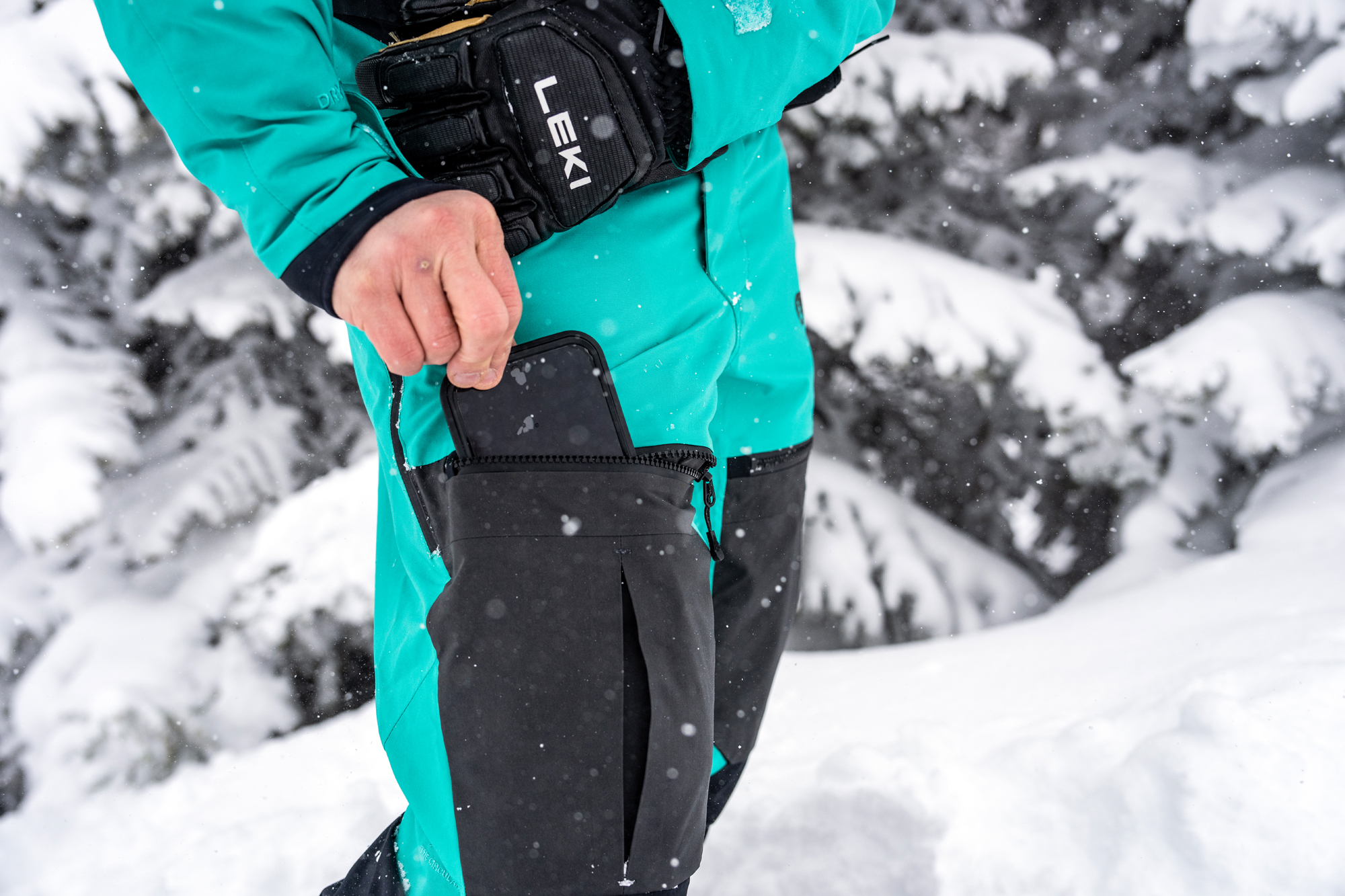
Durability
Ski pants inevitably take a beating. After many days of skiing through trees, rubbing against boot buckles, and sitting on chair lifts, pants will show signs of wear. Thinner and lighter ski pants are more common for backcountry skiing and touring. To withstand time and abuse, thin, light material must be reinforced with high-end textiles, especially at high-use touchpoints.
The Mountain Hardwear Cloud Bank GORE-TEX stand out for its durability in the resort — they’re the kind of ski pants that will stand up to season after season of use. Heavy-duty softshells, like the Outdoor Research Cirque III, can withstand the rigors of backcountry skiing and ski mountaineering thanks to its reinforcement in high-wear areas.
Lighter-weight shell pants can be nice in the backcountry where every ounce matters. They can also suffer in the durability department if not made with tenacious fabrics like the GORE-TEX in the Rab Khroma Diffuse.
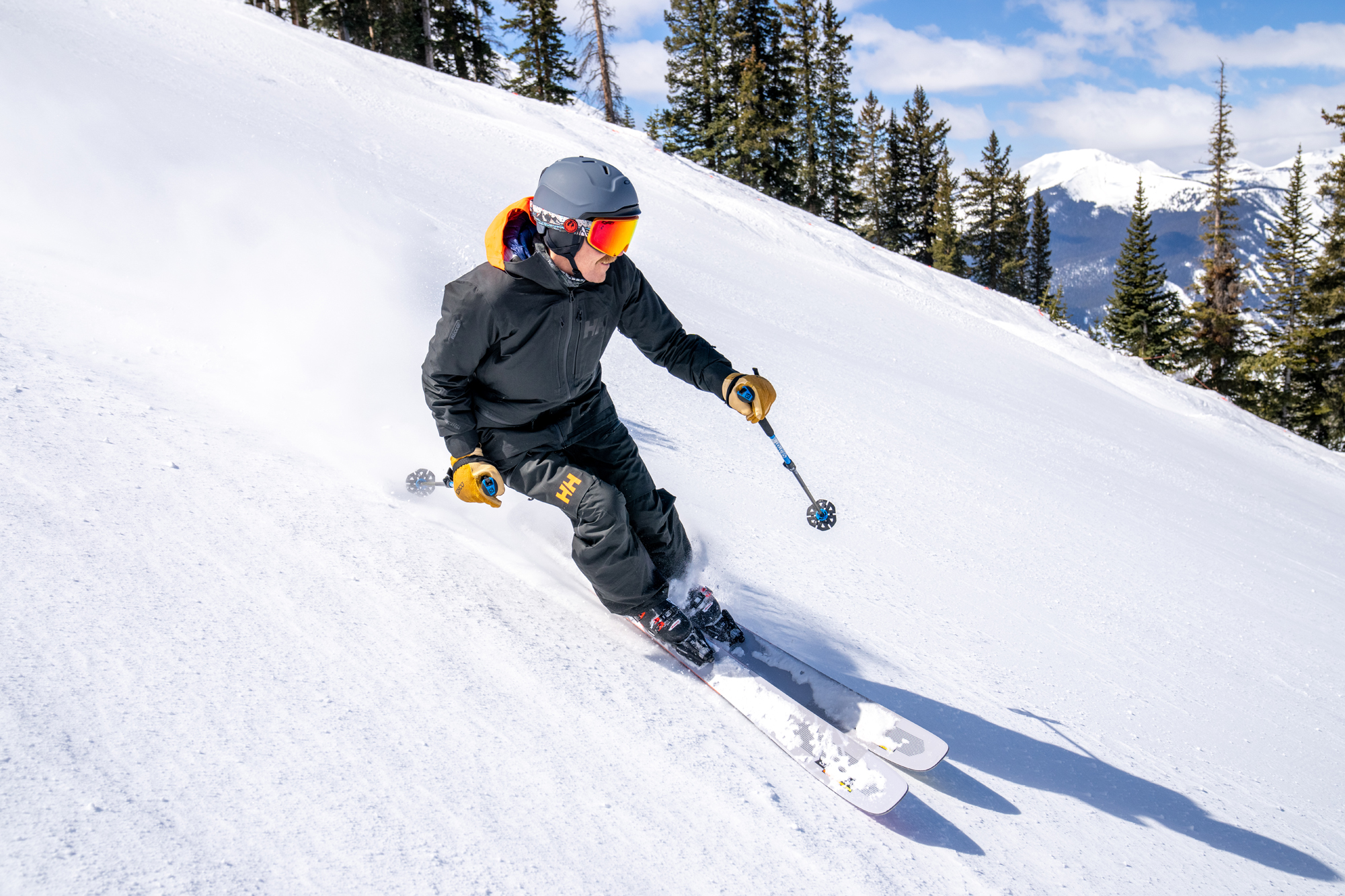
Waterproofing
While wearing ski pants, you’ll sit on wet surfaces and move through falling rain and snow. Reliable water resistance is an absolute must. Many styles included on this list come with high-end waterproof membranes and outer fabrics.
How Waterproofness Is Measured
Waterproof ratings tell you how many millimeters of water a fabric can withstand in 24 hours — or how many milliliters of water can pass through the membrane in a day. 20,000mm and higher waterproofing can withstand heavy rainfall and any other weather you’ll encounter while skiing. GORE-TEX Pro’s 28,000mm waterproofing will protect you in virtually any weather and possibly even underwater. Anything below 10,000mm will only withstand rainfall and wet snow for a limited time.
Taped Seams
All well-made waterproof ski pants have taped seams that stop water from creeping into the garments around the stitches, waterproof zippers, and a DWR coating that makes water bead off the fabric before it encounters the inner membrane.
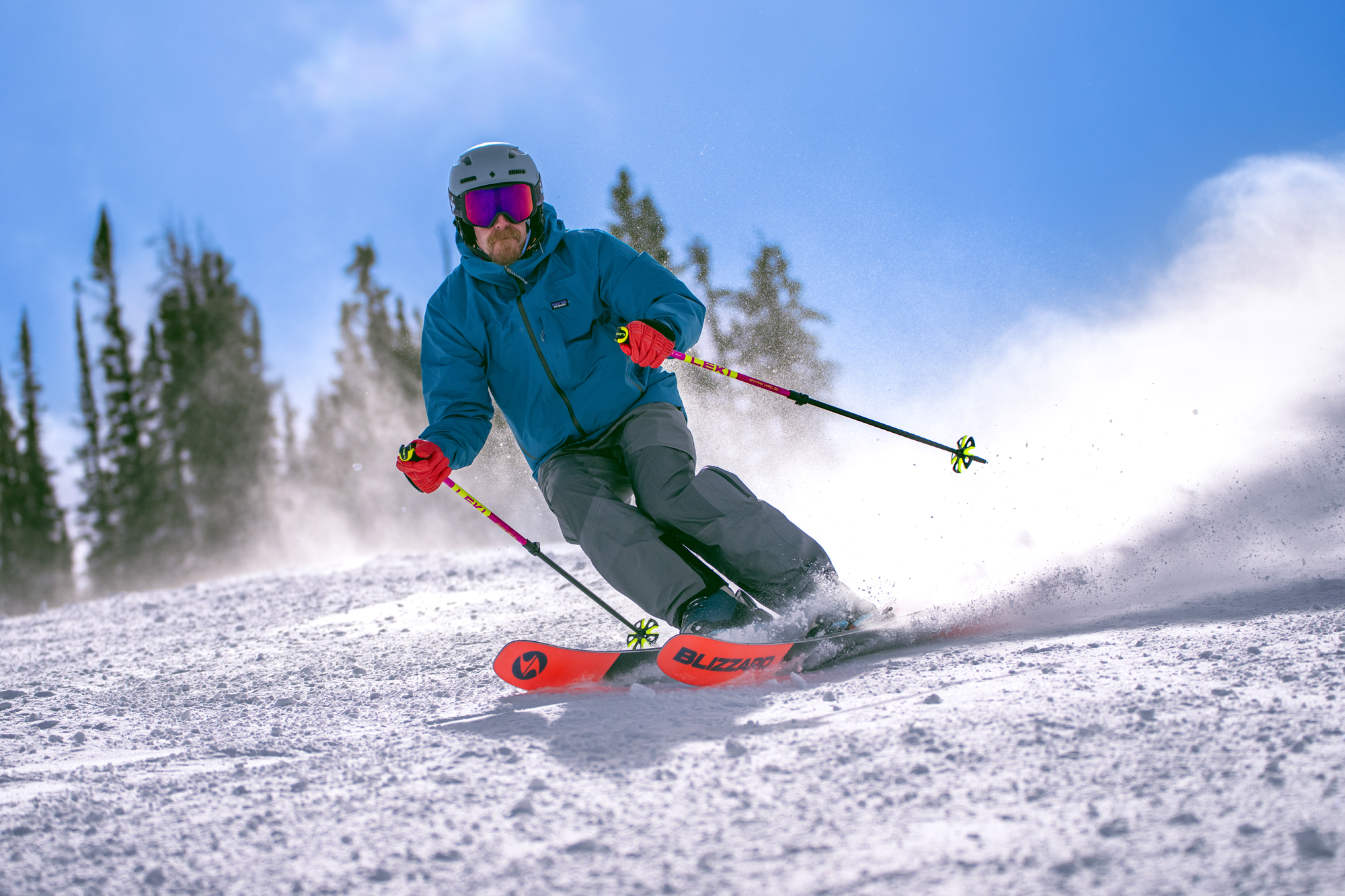
Backcountry Use
In the backcountry, outerwear must protect you from the elements and keep you cool. Because skiing in the backcountry involves more hiking and fewer lift rides, breathability and mobility are often considered more important than full waterproofing.
Waterproof/breathable pants like the Black Diamond Recon LT are worth considering for backcountry riders and skiers. They sport a 20,000mm waterproof rating and 20,000g of breathability, which is well balanced for resort and backcountry applications.
GORE-TEX
Many companies have proprietary waterproof fabrics, like Black Diamond’s BD.Dry, but GORE-TEX has long been considered the industry’s top-tier waterproof protection. GORE-TEX fabrics use membranes with millions of microscopic pores that allow air to flow through but are too small for water to penetrate. It’s also among the most expensive.
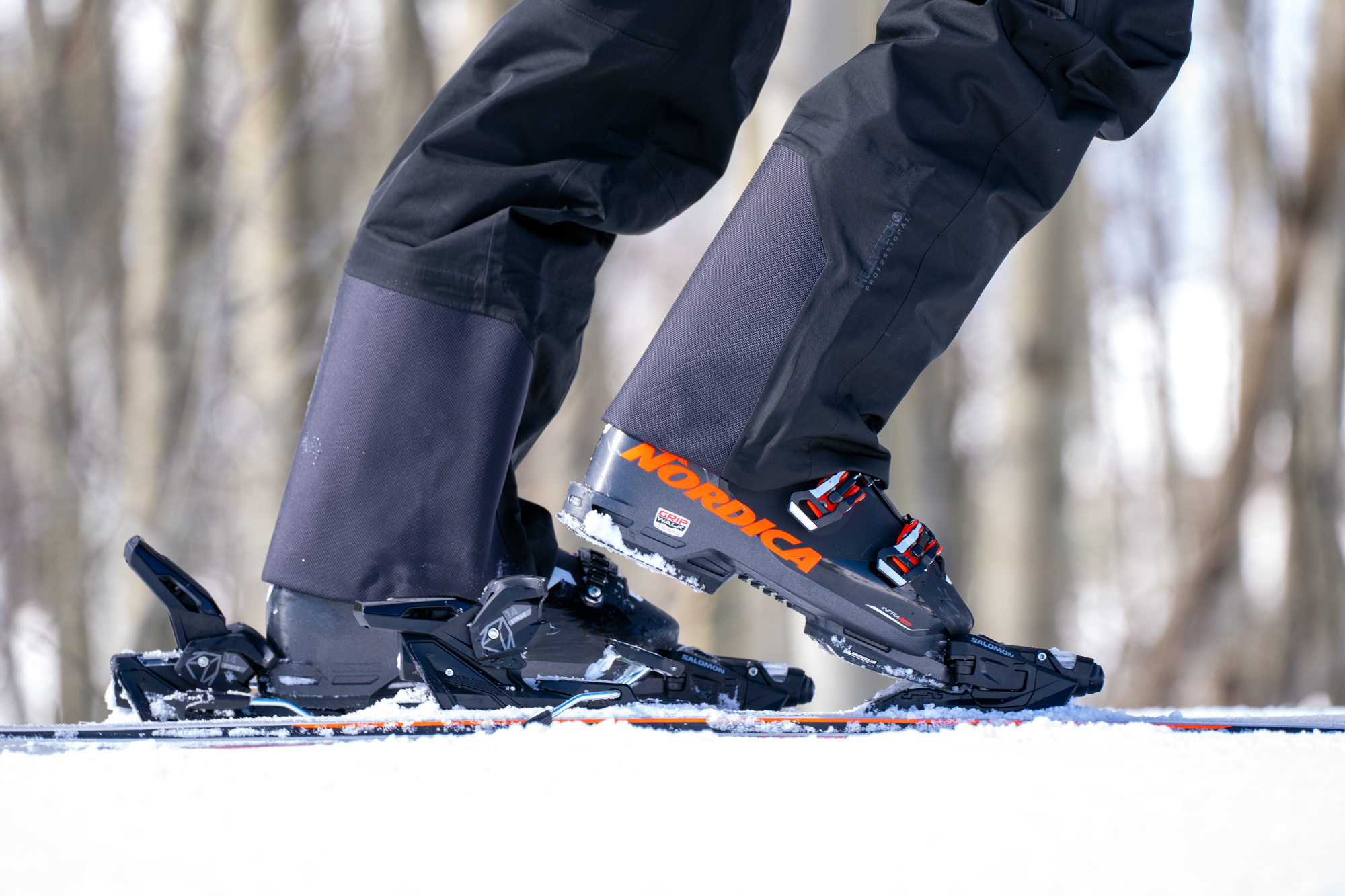
Here’s the waterproofness of our favorite ski pants:
- 28,000 mm
- 20,000 mm
- Unrated
Breathability & Ventilation
Every skier has a different comfort zone regarding temperature regulation and layering. For those who tend to run warm, breathable, and well-ventilated outerwear may be essential.
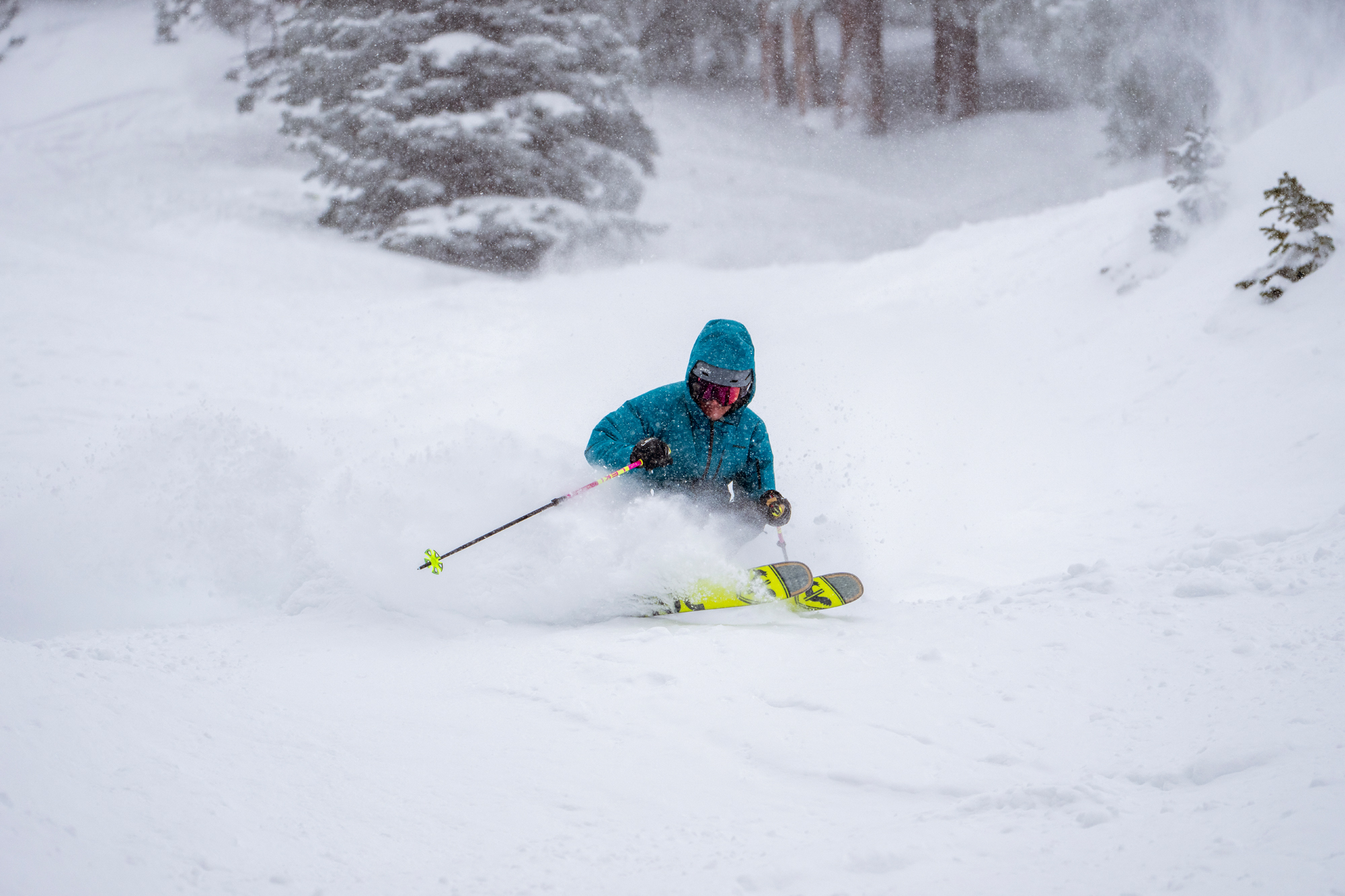
While running laps on groomers at the resort, less breathable pants like The North Face Insulated Freedom Pants will suit most skiers. If you prefer more temperature control, the Mountain Hardwear Cloud Bank GORE-TEX Pants come with zippered vents and less insulation to shed excess heat on the go. Fabric breathability has a standard measurement — moisture vapor transmission rate (MVTR), measured by how much moisture can pass through a m of fabric in a day (g/m2/24hrs). The higher the number, the better the breathability. For example, the Black Diamond Recon LT Stretch Pants‘ MVTR of 20,000g is suitable for ski touring.
Fit & Cut
When selecting ski pants, a comfortable fit is all-important. Personal preference is the most important variable here. If you don’t know what fit you’re after, we recommend trying on pants before buying them.
Most resort skiers prefer a semi-loose standard fit, but not overly baggy. Conditions at the resort vary from frigid and stormy to sweaty and spring-like throughout the season, and slightly loose-fitting pants allow for versatile layering options underneath. On this list, the Flylow Chemical is a top-notch resort skiing design that conforms to the body, looks stylish, and feels great.
Slim-cut pants are common for backcountry skiing and touring because there’s less material to get snagged on crampons, ski edges, or boots. Adding a hardshell, puffy belay pants, or a harness for glacier travel over slim-cut touring pants is easier than adding a baggier pair.
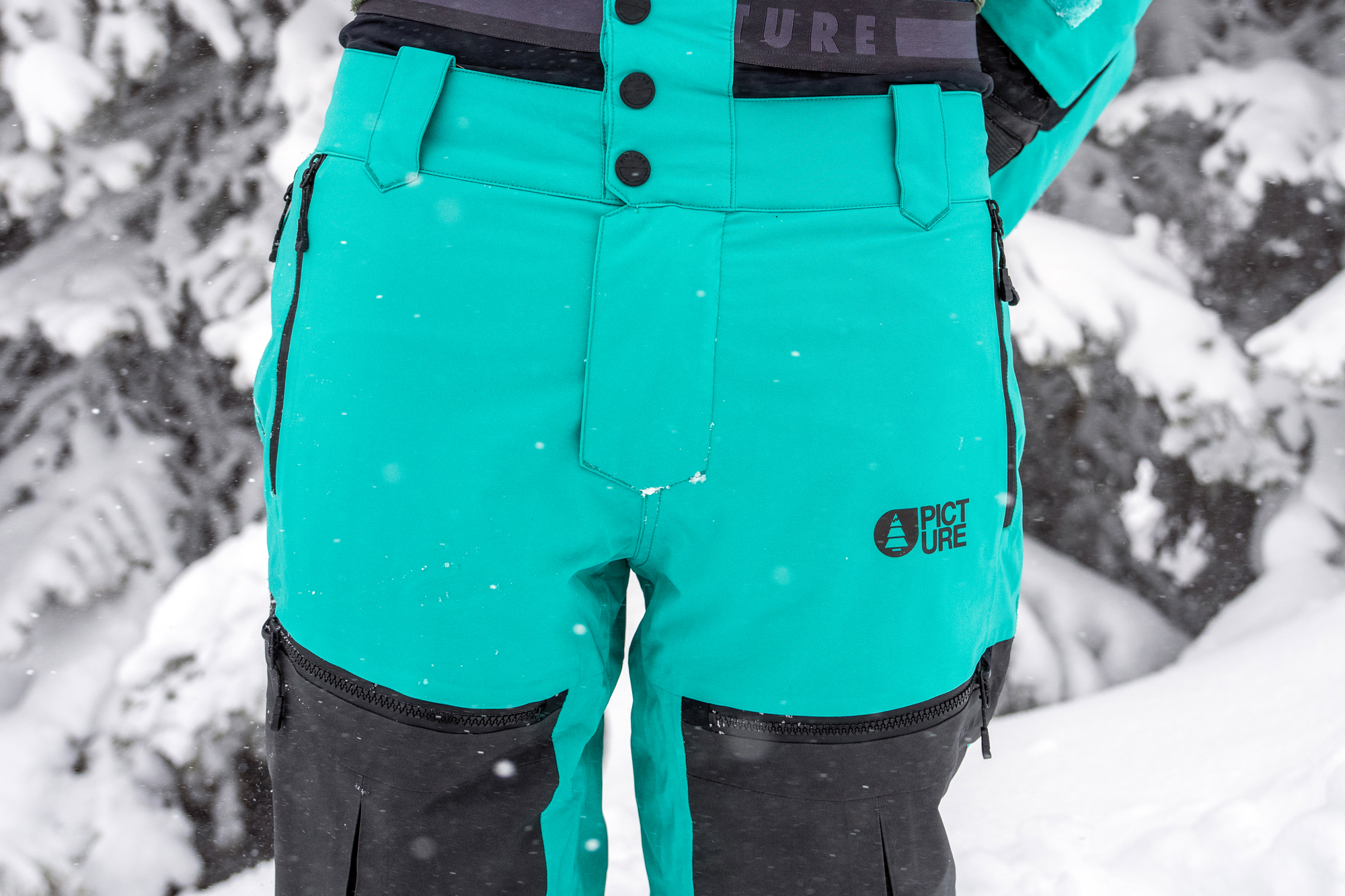
Stretch
Stretch can have a pronounced impact on how ski pants perform and your ability to move in them, but not all ski pants are the stretchiest. In many cases, stretch has an inverse relationship with waterproofness.
But most ski pants offer adequate stretch for the average skier taking turns down a groomed slope. When you’re backcountry skiing, snowmobiling, or skimo racing and hiking up a steep hill, you’ll want greater stretch everywhere, including the seams and groin area. That’s why backcountry-focused ski pants, like the Black Diamond Recon LT Stretch Pants, employ stretchy fabrics.
When buying ski pants, you can test the restriction by lunging, squatting, and taking long strides.
How to Wash & Dry Your Ski Pants
Riders might notice their ski pants stop shedding water as droplets, which bead and roll off the surface. That’s the cue to wash your pants.
Maintaining water repellency is especially important for today’s GORE-TEX ePE fabrics, which are PFAS-free. These newer textiles deliver waterproof, breathable performance but are more vulnerable. With proper care, the ePE membrane — now used by many brands in ski pants — retains its waterproofness and breathability by removing grime that would otherwise compromise performance.
“PFAS-free DWR coatings require more frequent wash and care to maintain water repellency on face fabrics,” explained GORE-TEX expert Marshall Balick during an outdoor industry presentation Senior Editor Morgan Tilton attended in Nelson, British Columbia.
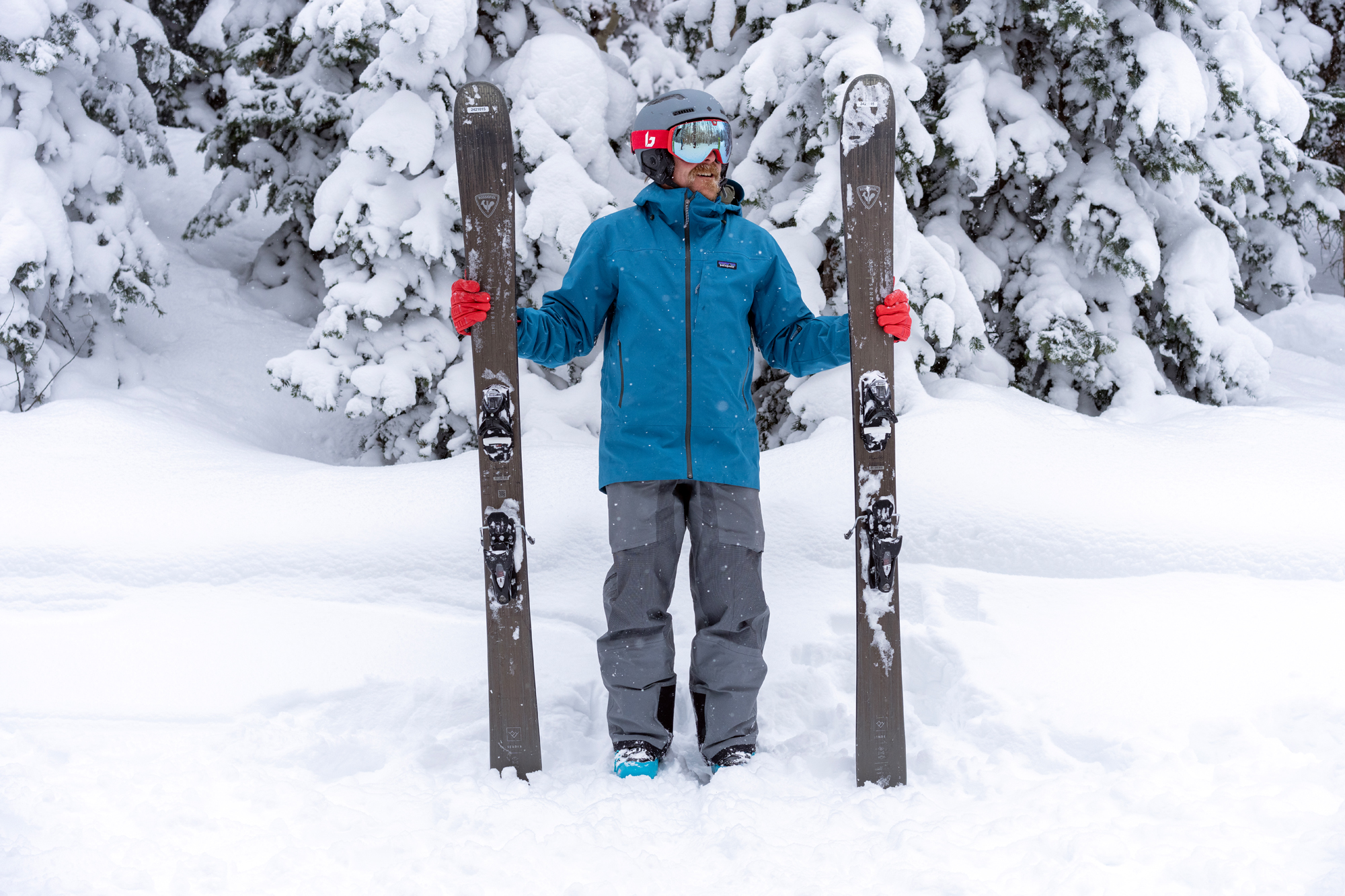
Balick emphasized detergent choice. The best option is a technical wash without additives. If that isn’t on hand, a conventional, scent-free detergent without fabric softeners, like Seventh Generation, will do. Even if the only option is a scented detergent with softener, such as Tide, it’s still better to wash your jacket than skip the wash — just double-rinse. Later, follow up with a technical detergent to flush out leftover additives.
After cleaning, hang the pants to dry, then toss them in the dryer for 20 minutes on medium heat to fully reactivate the durable water repellent (DWR). If the face fabric still fails to bead water, it’s time to reapply an aftermarket treatment such as Nikwax.
Regardless, these fabrics are more likely to experience oil-based stains — from a breakfast burrito dripping olive oil to grease on a chairlift. We’re rooting for an advancement in that department.
Price & Value
The cheapest pair of ski pants on our list is the Outdoor Research Cirque III at $179, but these are an outlier and relatively niche product. They are stretchy softshell pants best suited to the backcountry that do not come with a waterproof membrane or insulation.
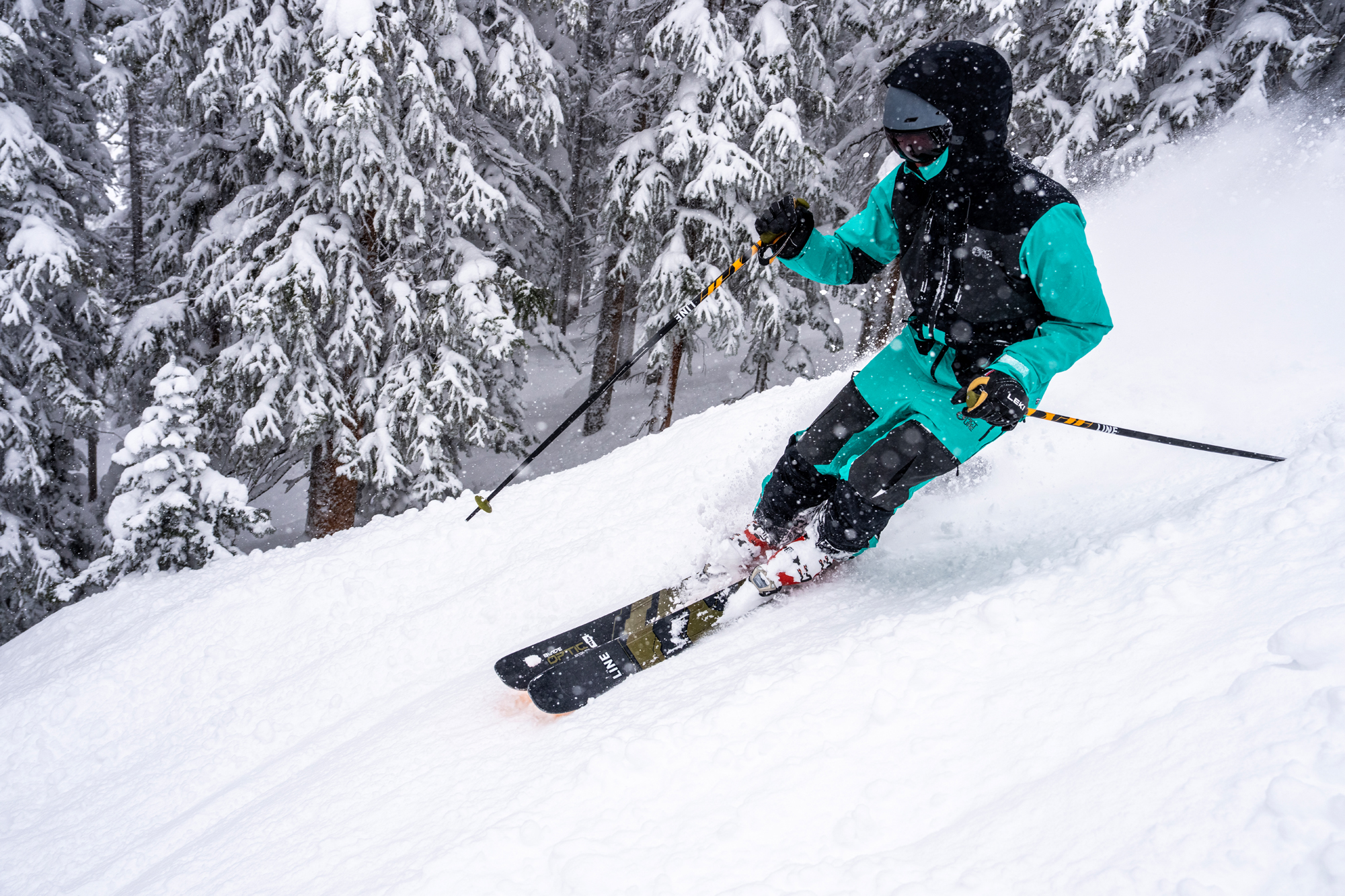
Budget: Basic Insulation & Waterproofing
The entry-level price for ski pants with waterproofing and insulation is between $200 and $300, like the North Face Insulated Freedom Pants ($220) and Eddie Bauer Chair Six Pants ($229).
These can be excellent ski pants for weekend warriors or those just getting into the sport. We wouldn’t recommend going any cheaper than this price point for a solid pair of ski pants. More affordable options don’t last long and will struggle to keep you warm and dry. Your legs and your ski day will thank you!
Mid-Tier: Higher Quality Fabrics
As you go up in price, you’ll get more advanced and often recycled fabrics, higher durability, and better elements. The next price tier is between $300 and $400.
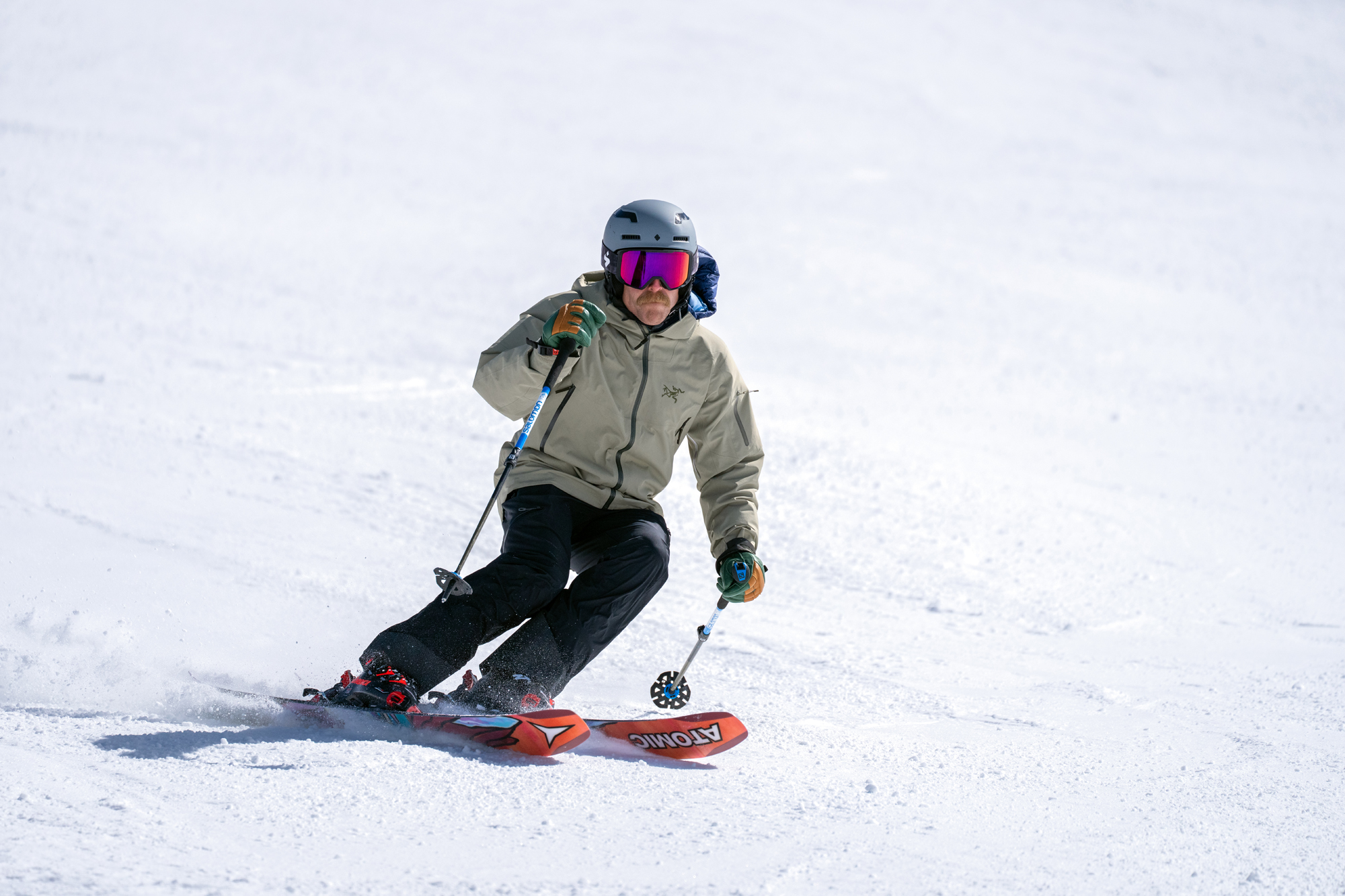
Pants in this range, like the Rab Khroma Kinetic ($340), often employ three-layer waterproof fabrics in the 20,000mm range that typically breathe better than cheaper options.
Some options may even include two-layer GORE-TEX membranes, like the Patagonia Storm Shift Pants ($399), which are plentifully waterproof and breathable.
Insulated versions typically come with high-quality third-party insulation, like Primaloft. Most skiers will be able to find an excellent pair of ski pants in this price range that strikes an outstanding balance of durability, style, and protection from the elements.
Premium: Top-Level Waterproofing, Breathability, Durability
Ski Pants that cost more than $400 utilize premium fabrics, like GORE-TEX Pro, which offer higher waterproofing, breathability, and durability. It’ll also include high-end details like waterproof zippers. The Rab Khroma Diffuse ($450) is an example of a solid pair of ski pants at this higher price point. Bibs are also typically more expensive than ski pants and tend to fall into this category.
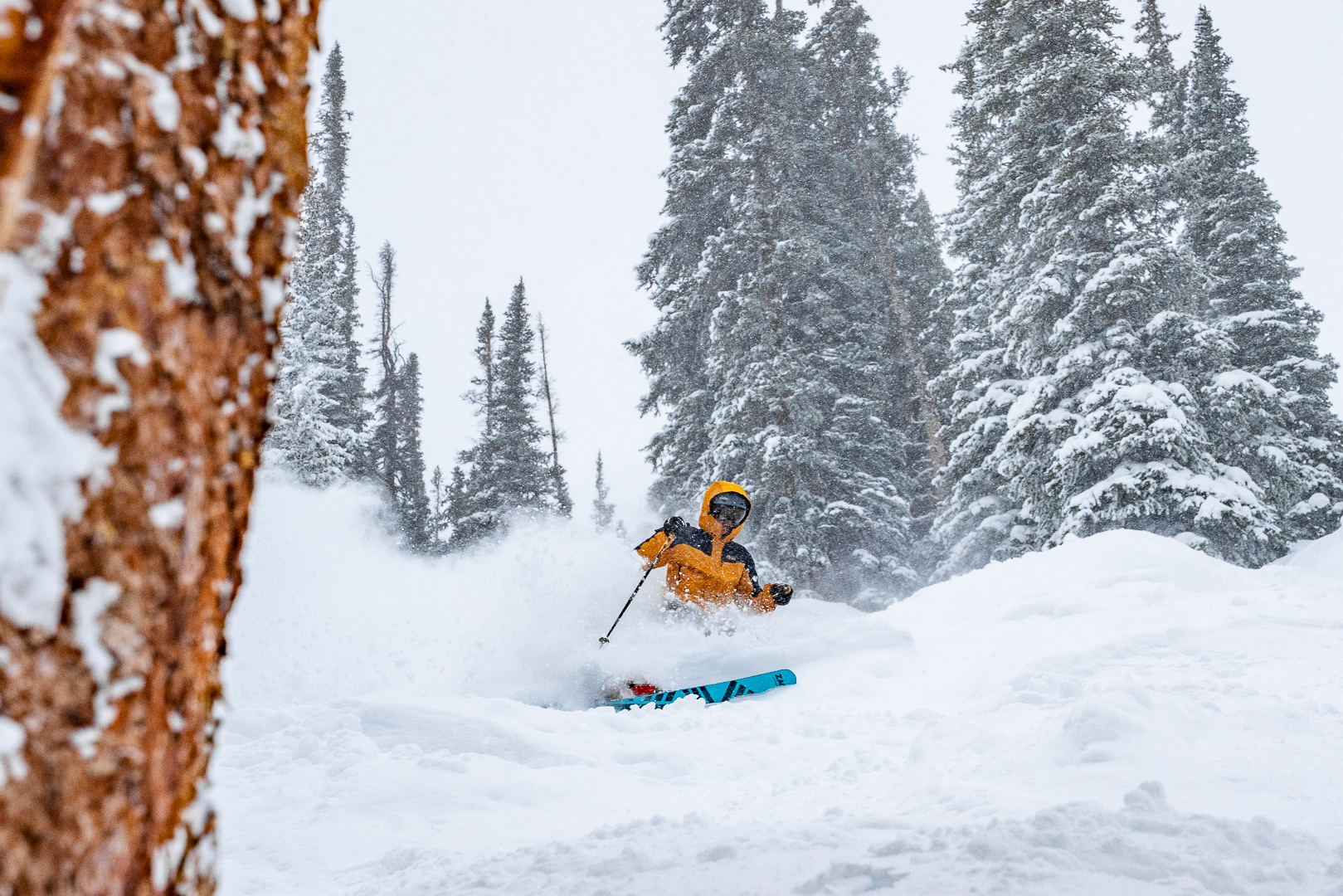
The most expensive ski pants, like Norrøna’s Lofoten GORE-TEX Pro Plus Pants ($999), also tend to have higher sustainability ratings and often employ recycled materials, as well as the most breathable, waterproof, and durable fabric available on the market. But still, that’s pretty darn expensive for a pair of pants — but they do convert into bibs, and we really enjoyed wearing them in the backcountry.
Frequently Asked Questions
Ski pants are purpose-built lower-body skiing outerwear. While specific-use ski pants are not strictly necessary, we always recommend using the proper tool for the job.
An average day of skiing includes inclement weather, rugged terrain, and thousands of mid-ski lunges and micro squats. Plus, the cuffs must fit over bulky ski boots and seal out the snow. Designers specifically create high-quality ski pants to accommodate these unique circumstances. Other pants just aren’t quite up to the task — especially jeans!

The best ski pants for beginners are comfortable, durable, and budget-friendly. Unlike skis themselves, ski pants don’t exist on a beginner-to-expert spectrum. Though some pairs are more expensive and more feature-packed than others, your choice of pants probably won’t make or break your skiing ability, but it will impact how long you’re willing to stick it out in inclement weather.
We recommend that beginners, especially at the resort, select a fully waterproof pair of hardshell ski pants. When learning to ski, you can expect to fall often and spend plenty of time sitting on the snow. A dry skier is a happy skier, and a happy skier is more likely to learn and progress.

All of the ski pants we’ve recommended on this list are made by high-quality, reputable brands. Some of the top ski pant brands include Arc’teryx, The North Face, and Flylow.
In almost any conditions, we recommend wearing a thin pair of baselayer bottoms under your ski pants at the very least. When choosing a baselayer, we recommend close-fitting designs with soft and comfortable materials such as merino wool or polyester.
Other layers, such as fleece pants, can provide additional insulation and warmth on cold days. If you tend to run cold, we recommend insulated styles such as The North Face Insulated Freedom Pants.
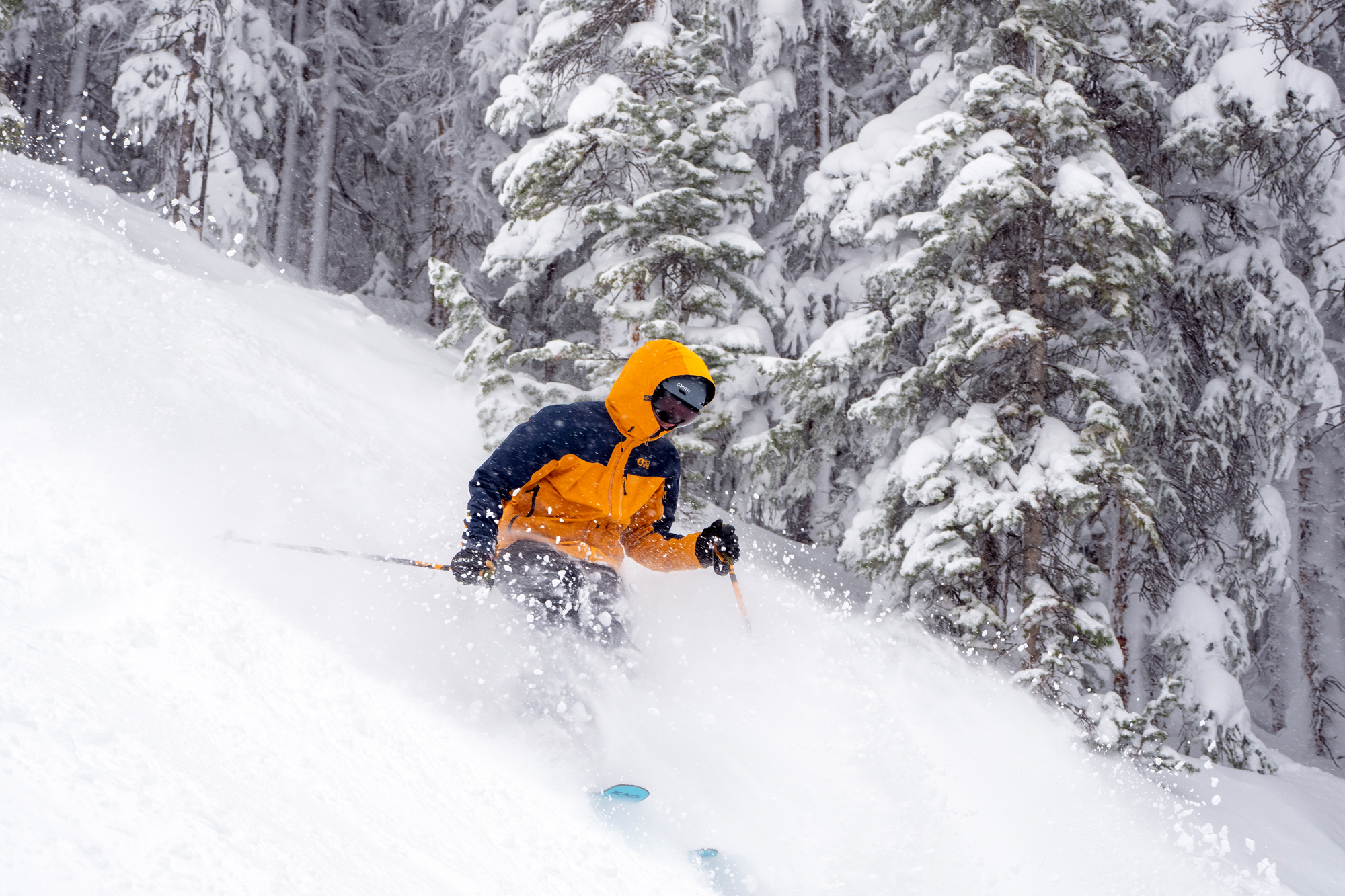
Many high-end ski pants come equipped with a built-in RECCO reflector. These compact and passive units can be detected by devices frequently carried by ski patrollers and search and rescue teams.
RECCO is often used for rescue missions, but cannot replace an avalanche beacon required for safe backcountry travel. When someone gets lost, the RECCO reflector becomes an additional safety measure that may aid in locating them. The Mountain Hardwear Cloud Bank GORE-TEX Pants include a RECCO device.
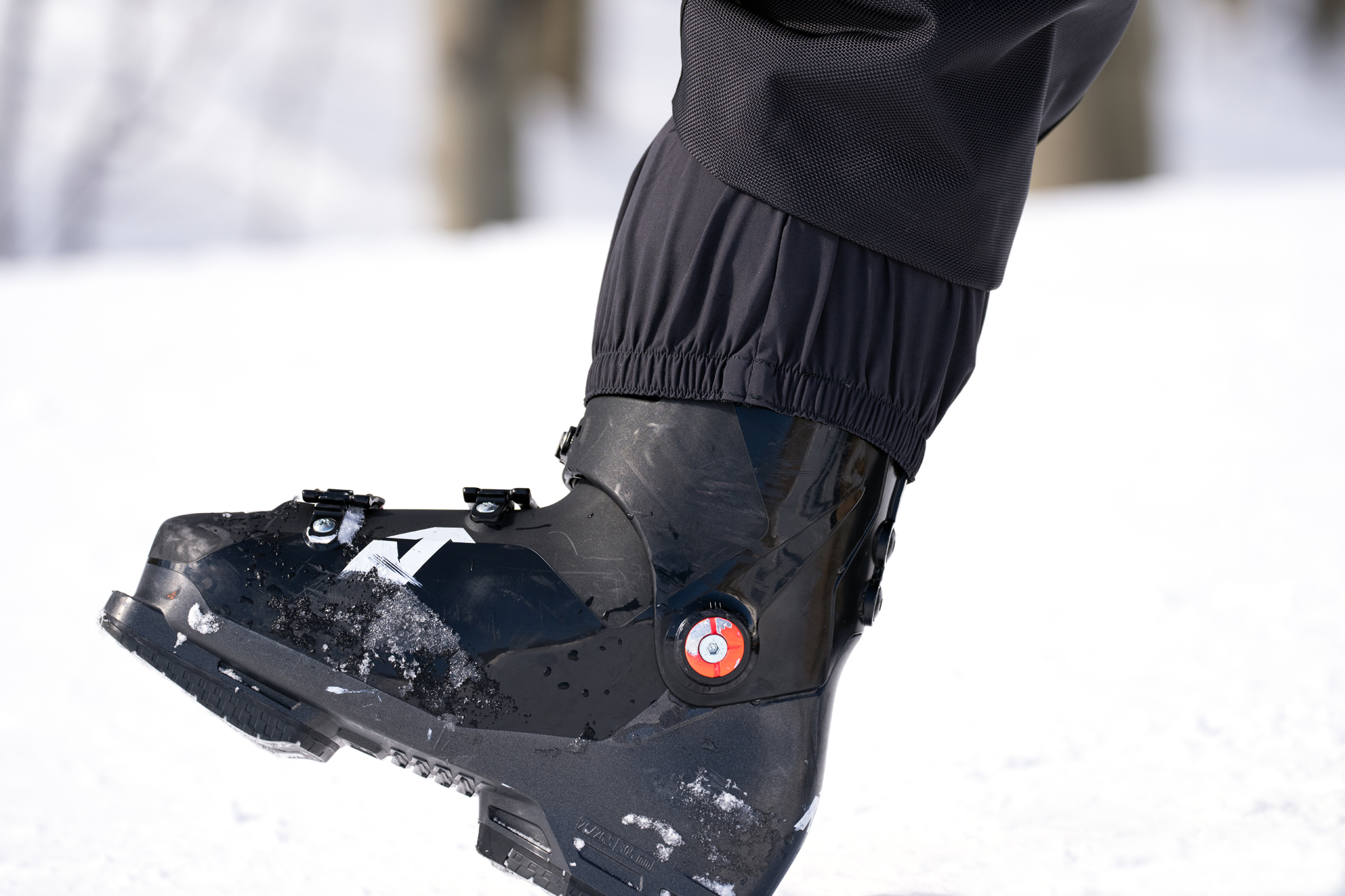
Skiing can get wet fast, and being damp or soaked in winter means you’ll be cold. Designers create ski pants to keep the elements at bay so you can enjoy full days on the mountain. Waterproof membranes help make ski pants waterproof but still breathable.
The most waterproof fabrics carry a rating of 28,000mm. That level of waterproofing will protect skiers in virtually any weather, including extended heavy rain. In many cases, it’s overkill for resort skiing in Intermountain and Continental climates, which are drier than Coastal and Transitional climates. It’s also the most expensive.
Ski pants with 20,000mm waterproof ratings are the sweet spot in terms of value for resort skiing. They’ll keep you dry in winter weather, but they’re slightly cheaper.
Many skiers skip the most waterproof pants in the backcountry for more stretch and breathability. This can work great in drier winter snow climates, but of course, it comes with limitations in terms of protection in wet weather.

The Best Backcountry Skis of 2025-2026
We tested the best backcountry skis from Atomic, Black Diamond, Salomon, Voile, and more to help you find the best option for your needs and budget.
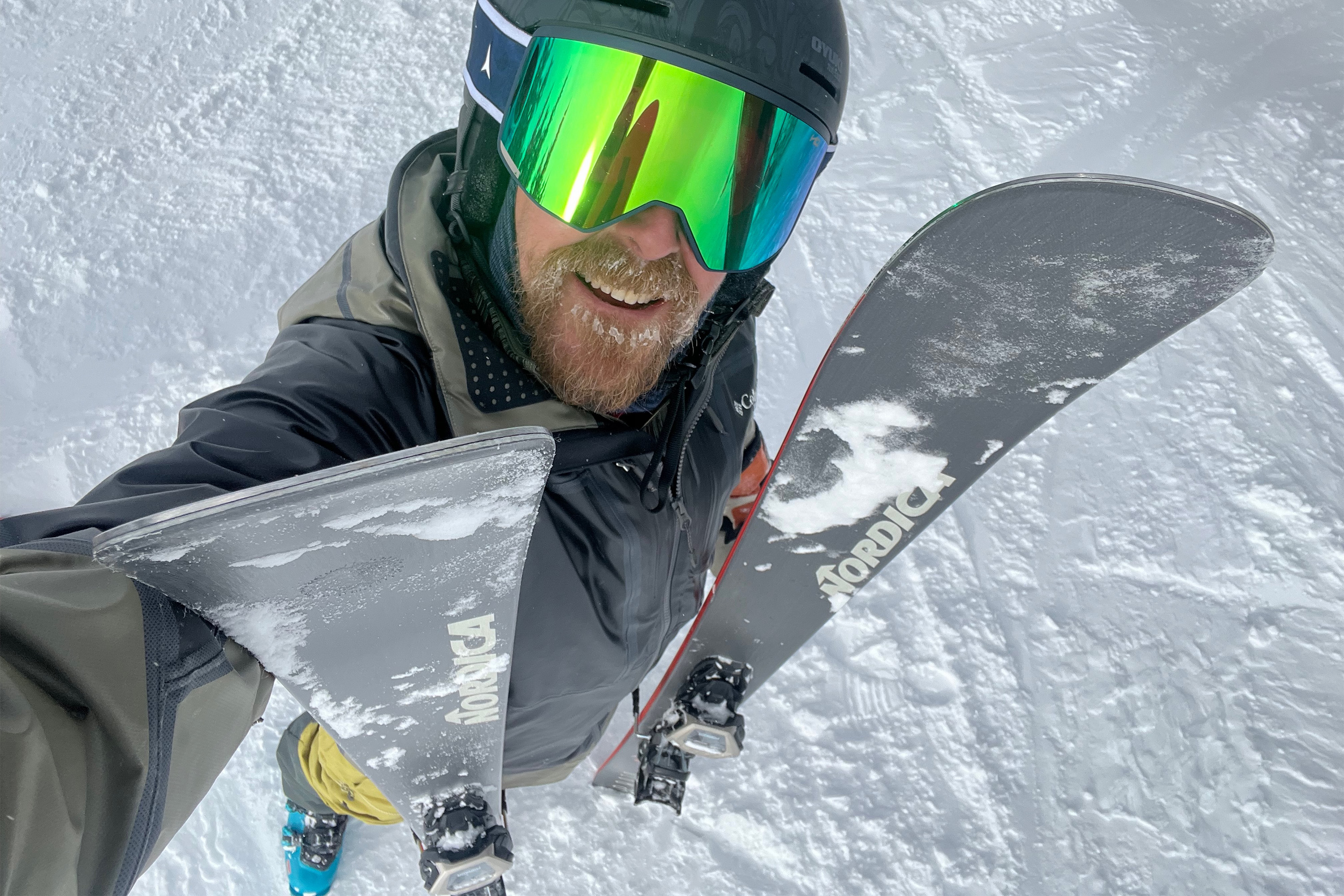
Nordica’s Best All-Mountain Skis Just Got Better: 2024 Nordica Enforcer & Santa Ana Review
For the 2024/25 ski season, Nordica is updating two of its most popular all-mountain skis — the Enforcer and the Santa Ana. Now, they’re more playful, powerful, and versatile than ever.
